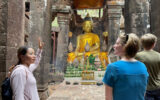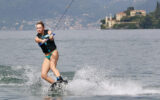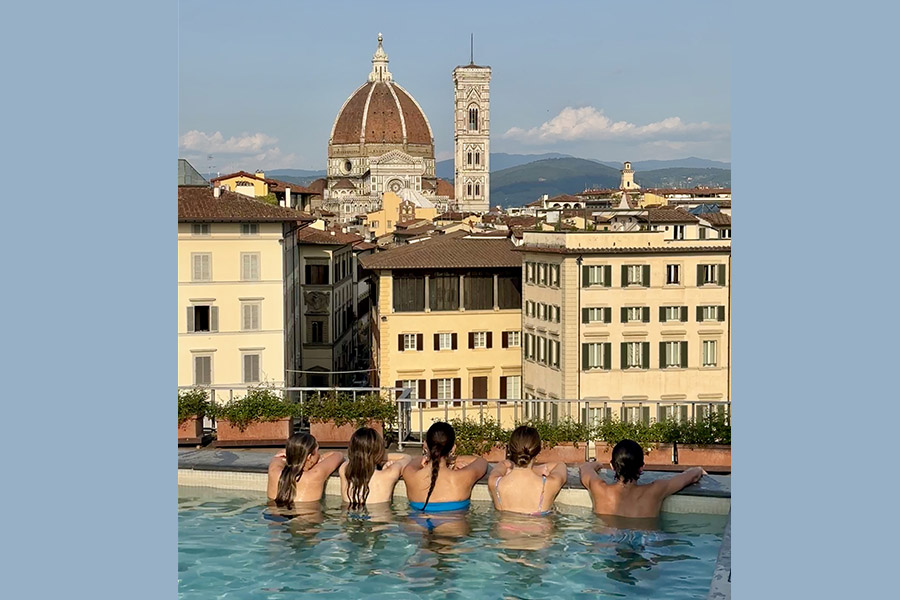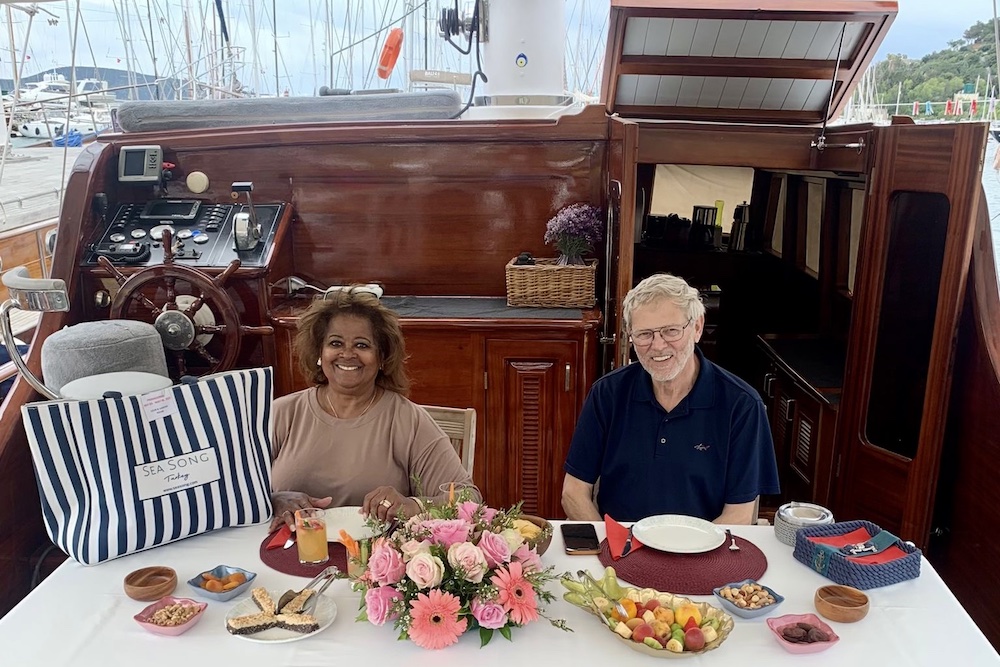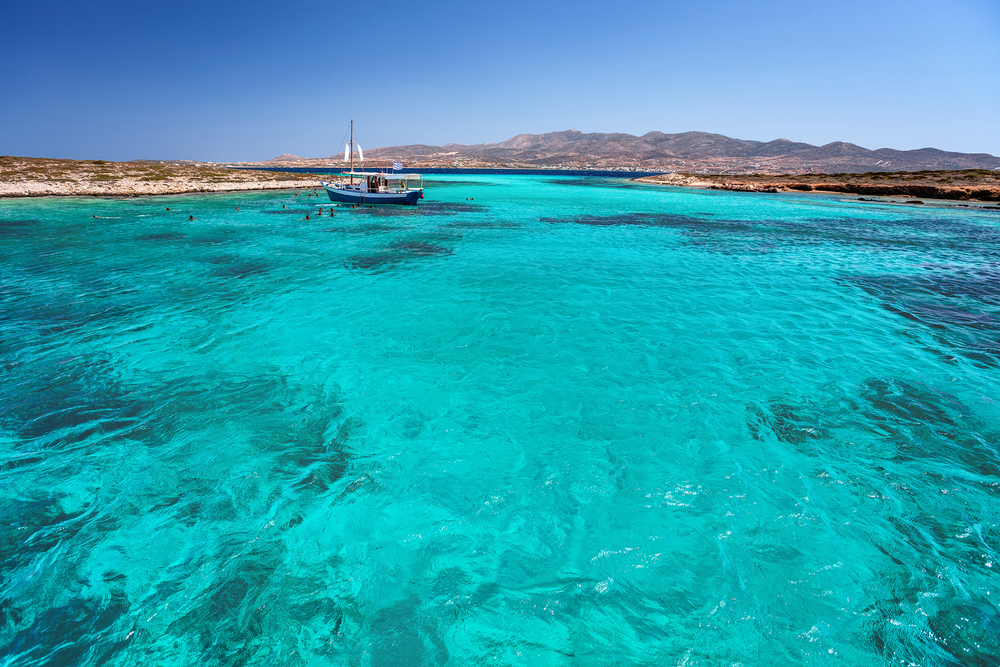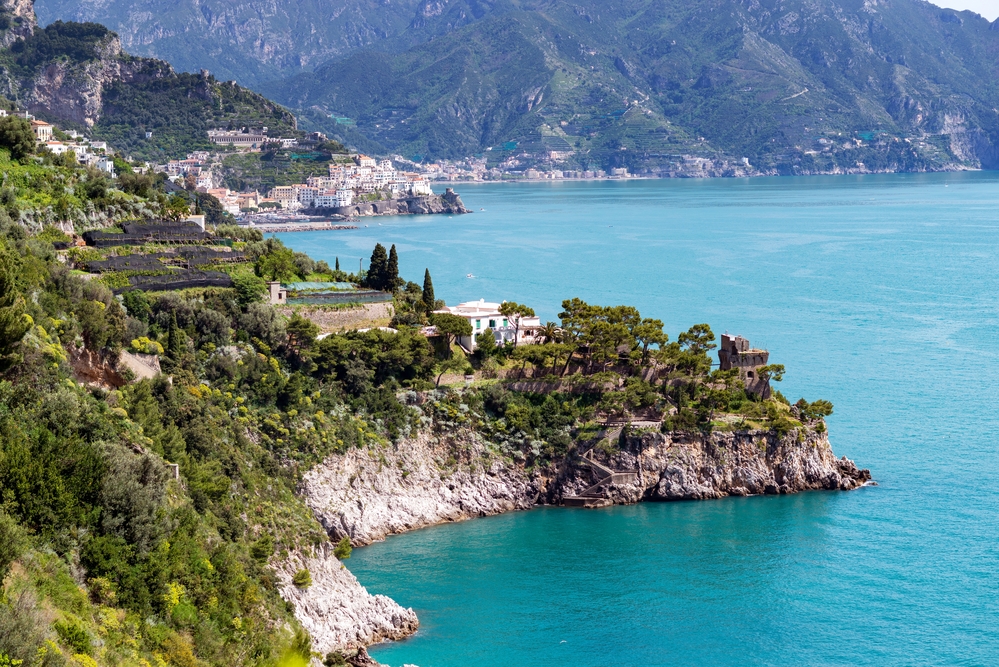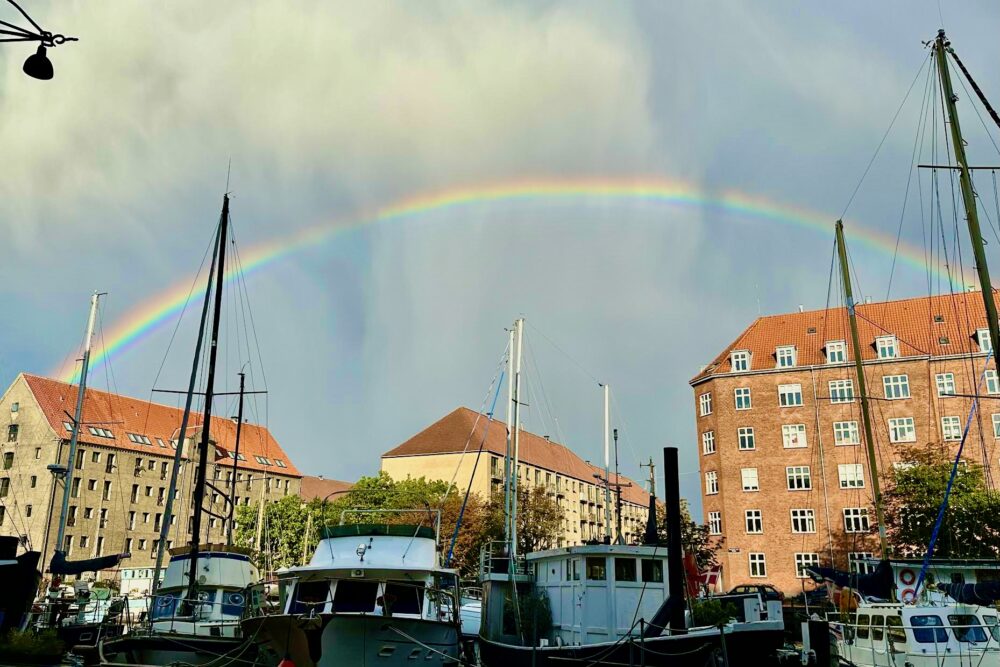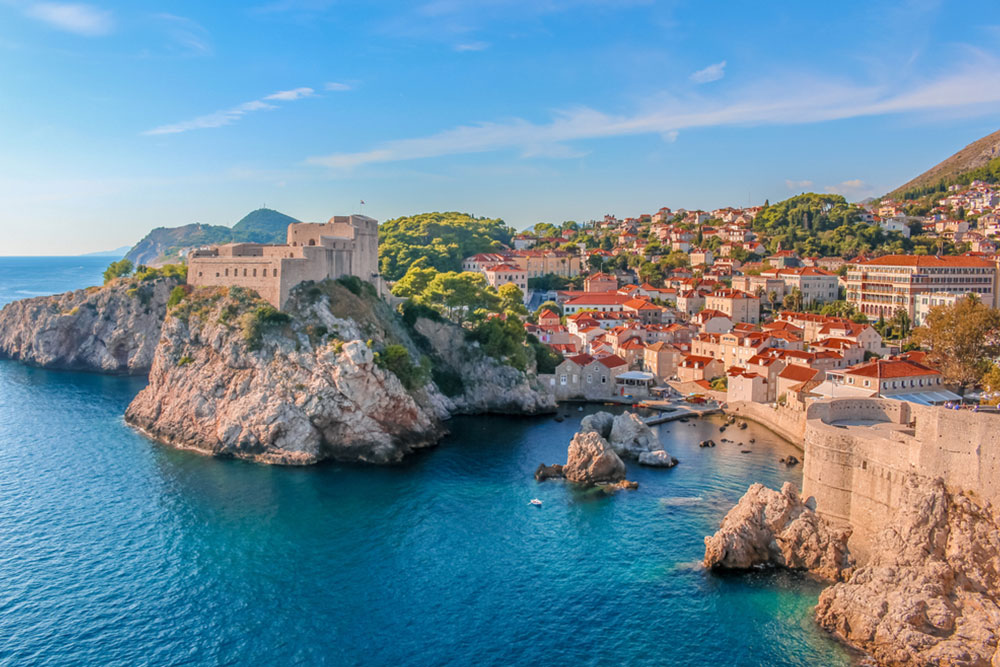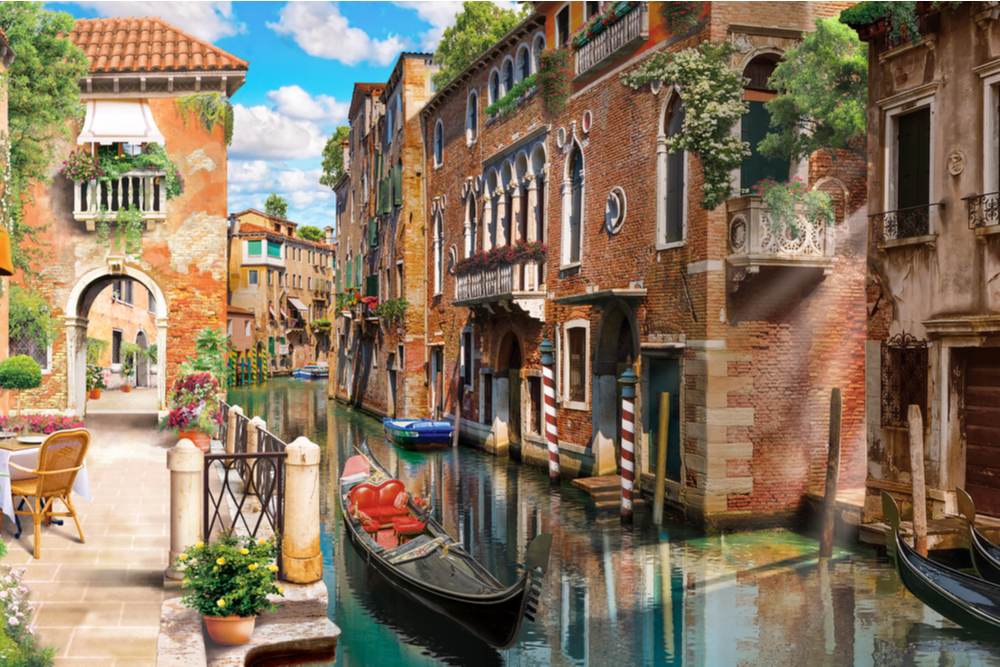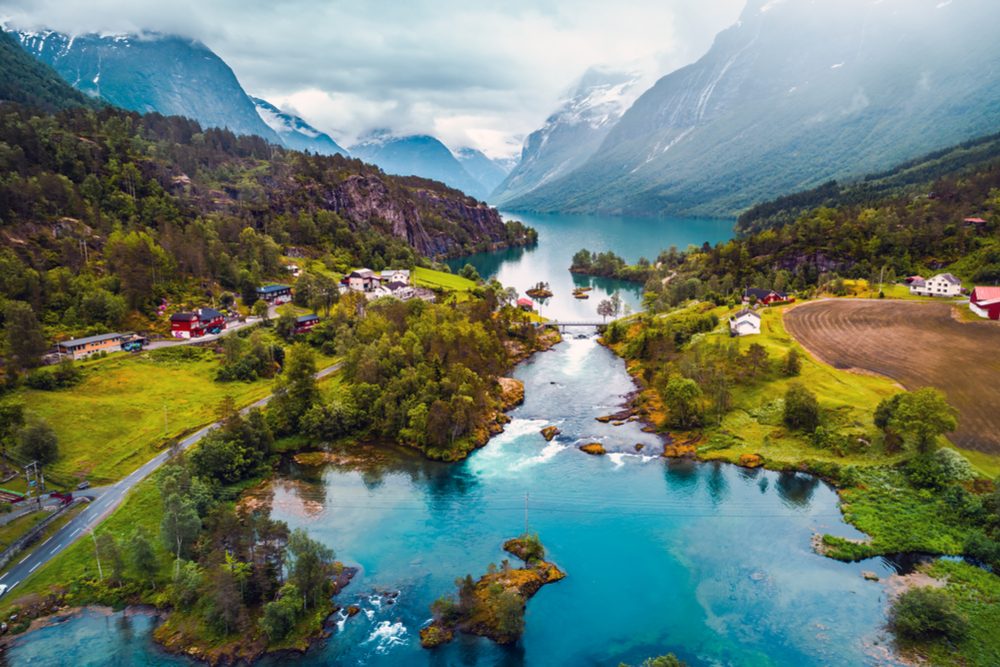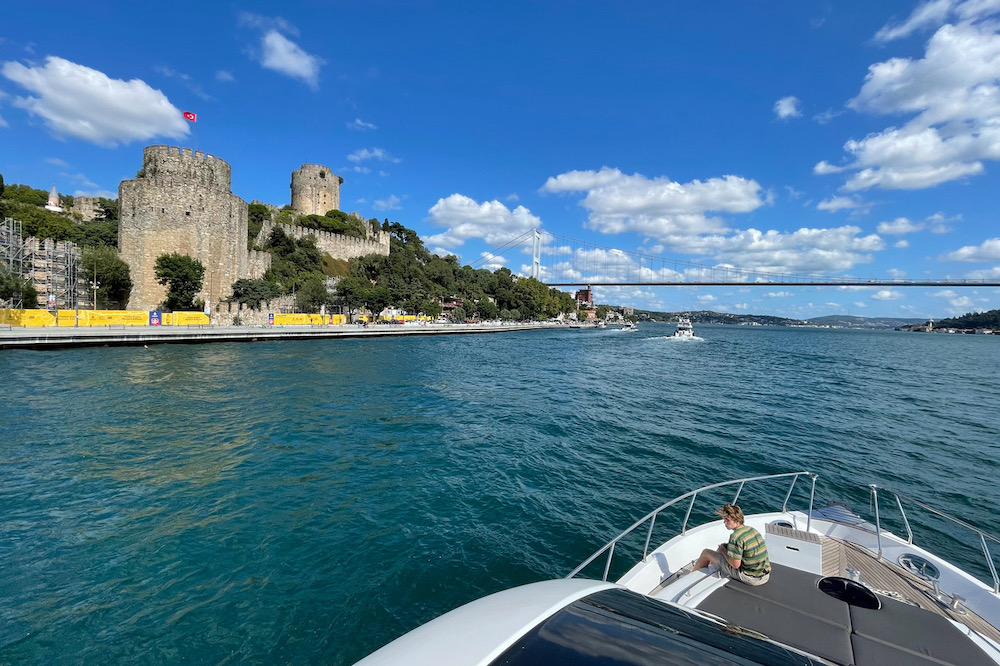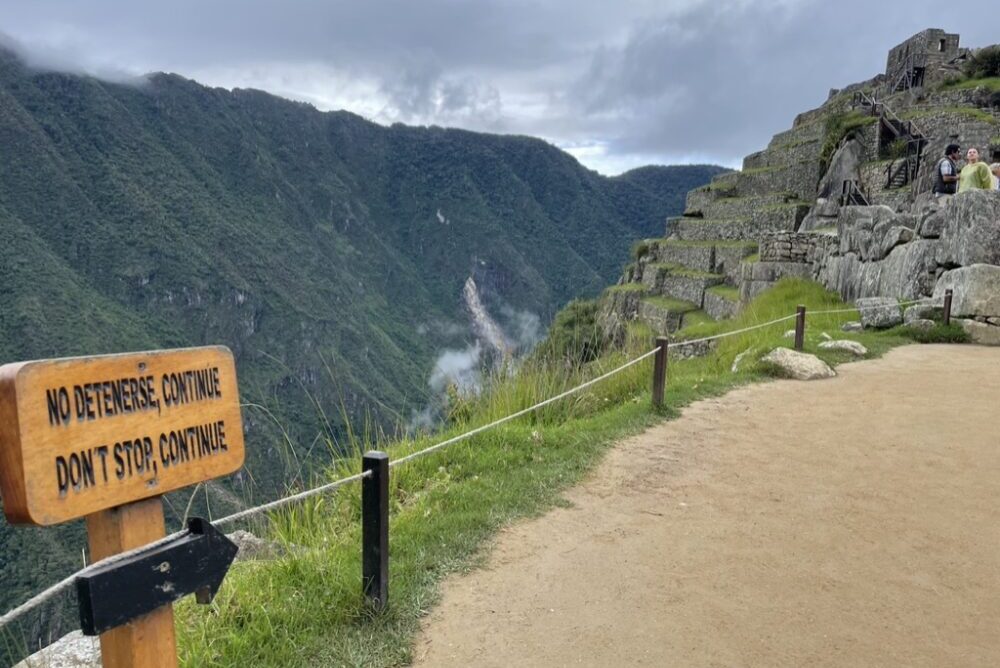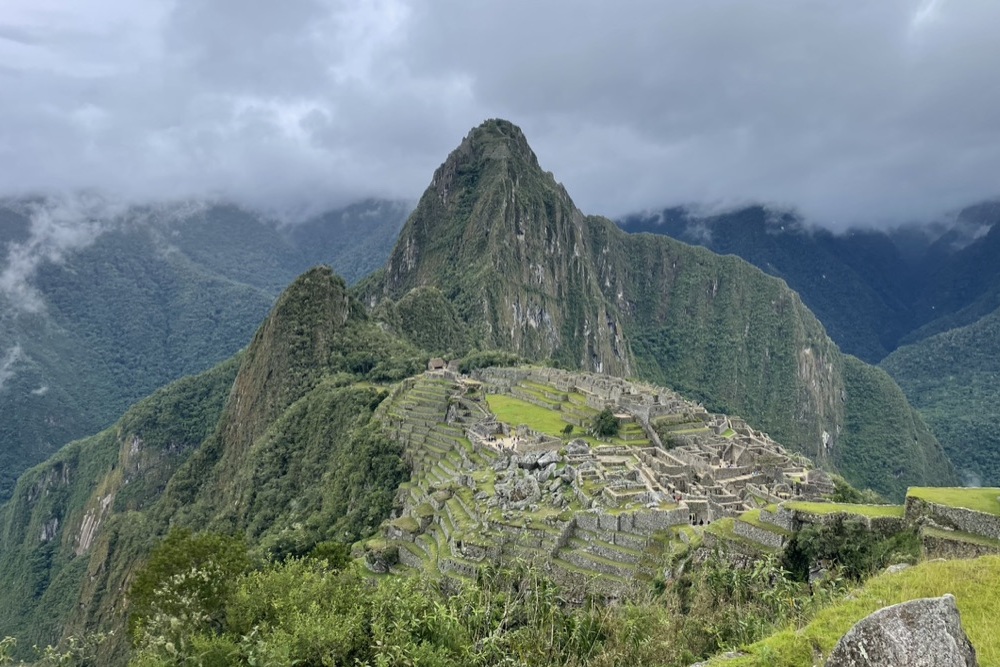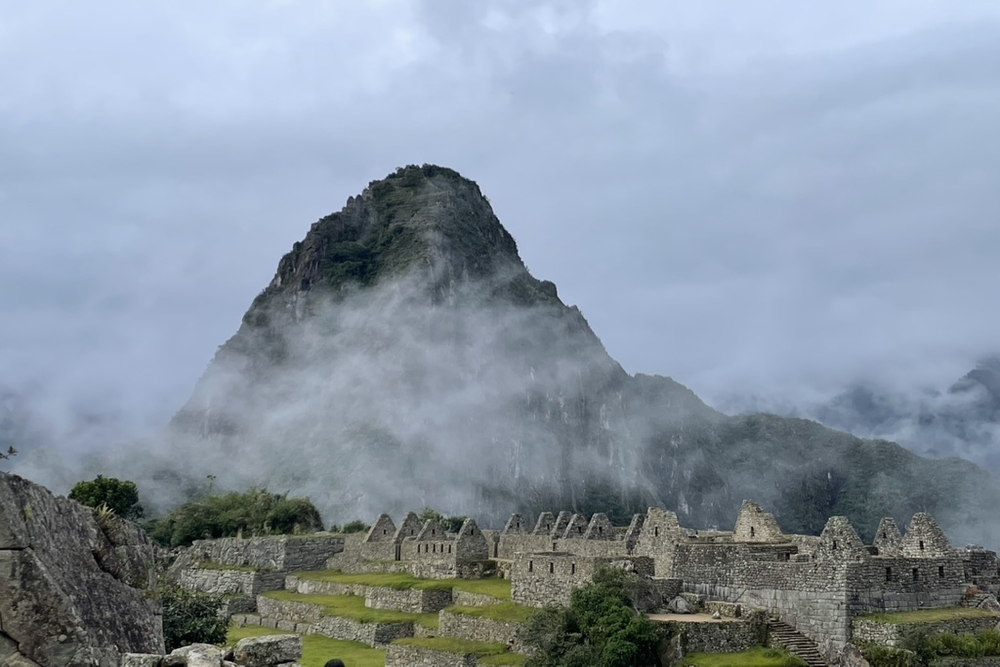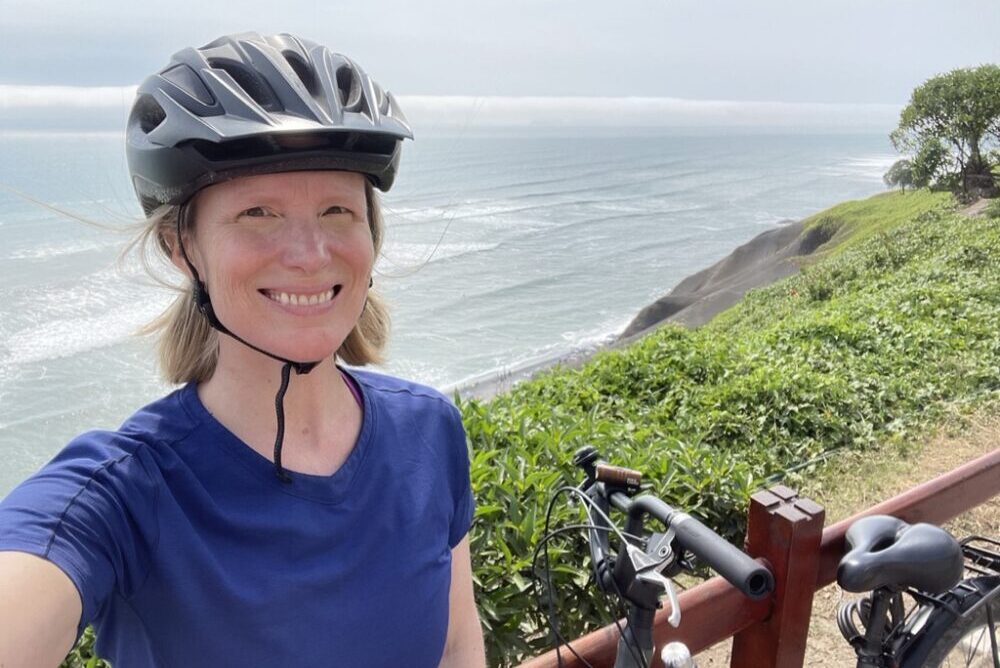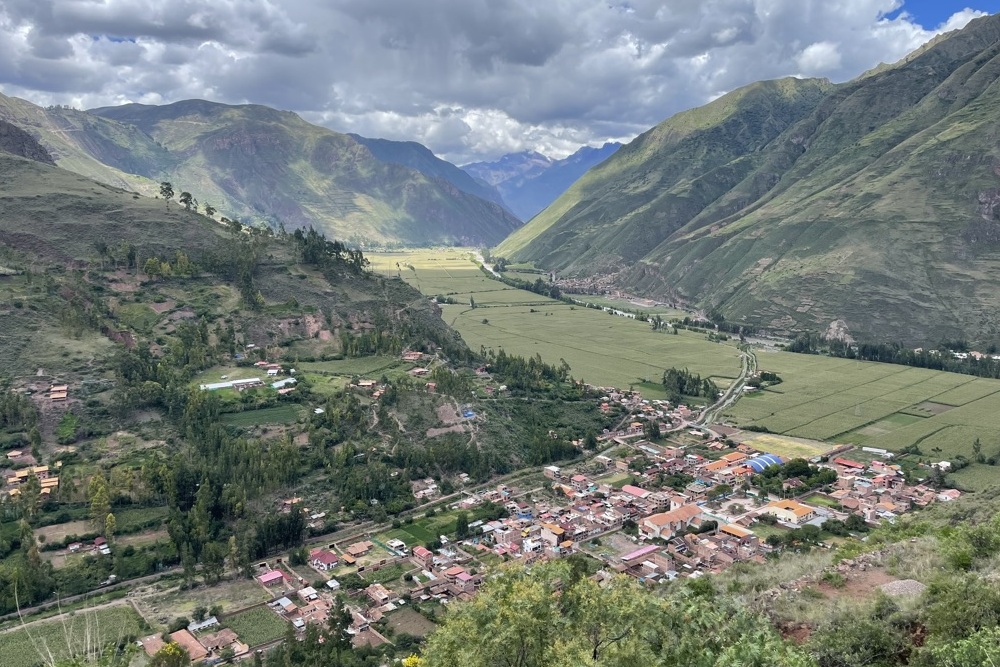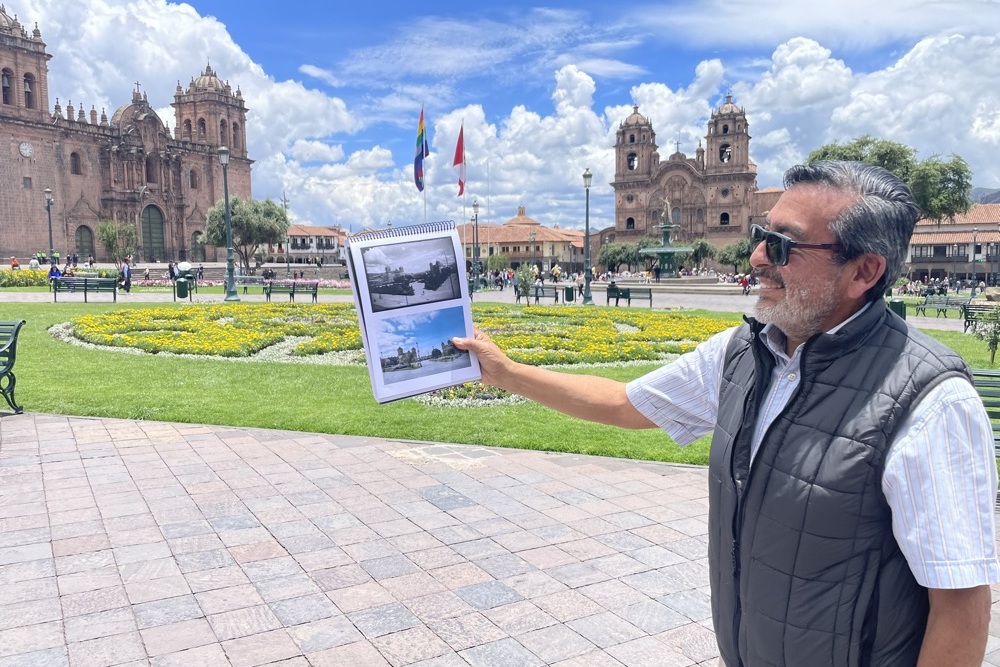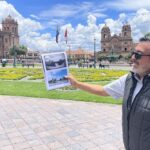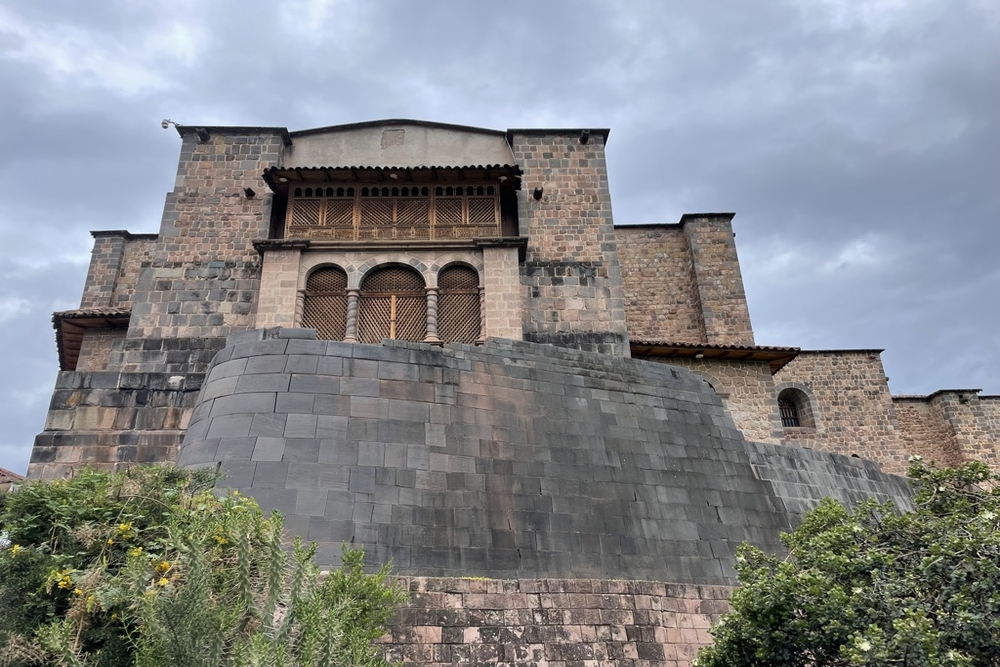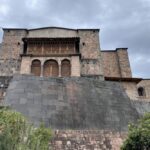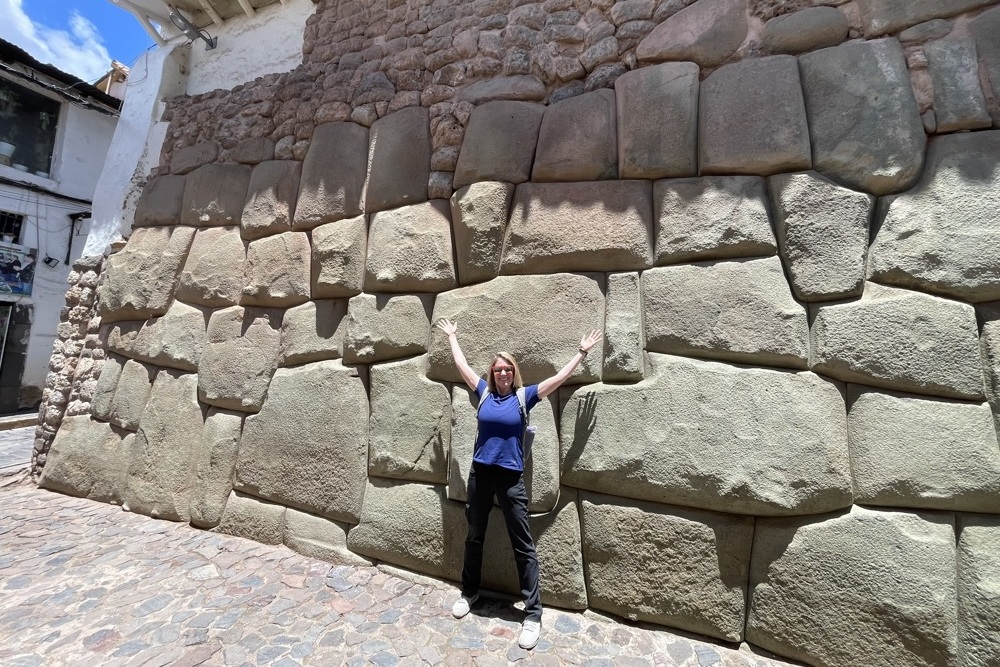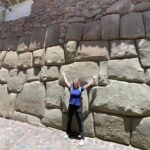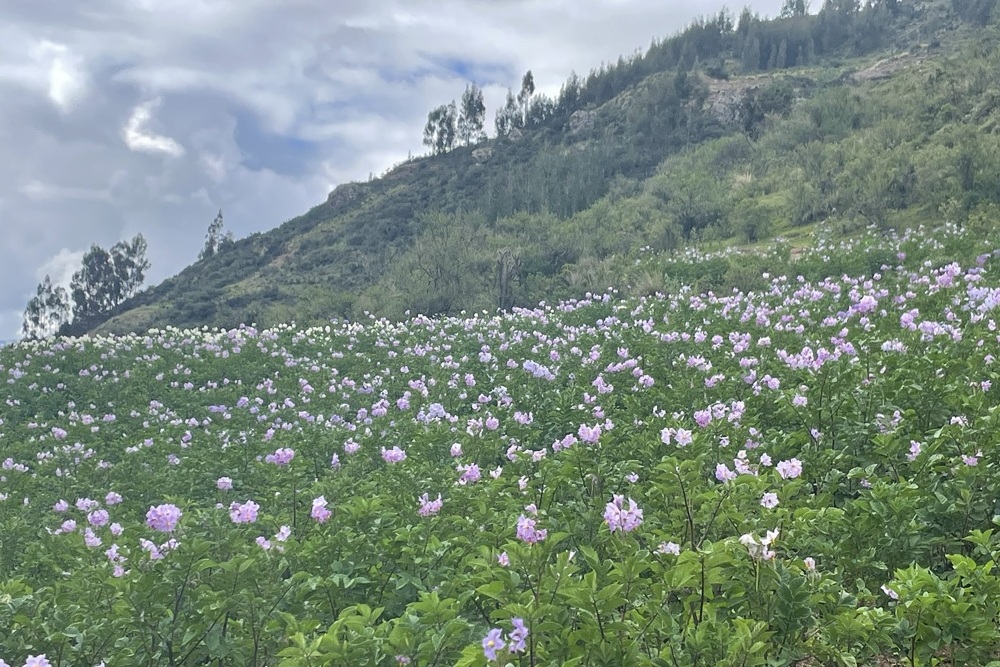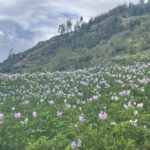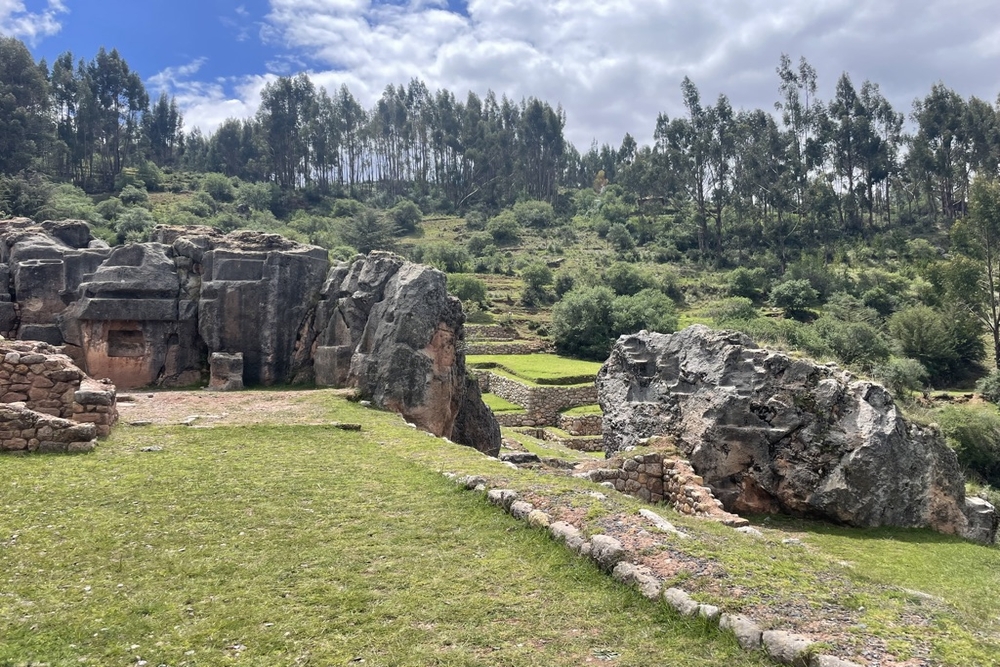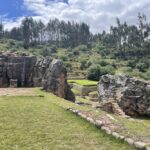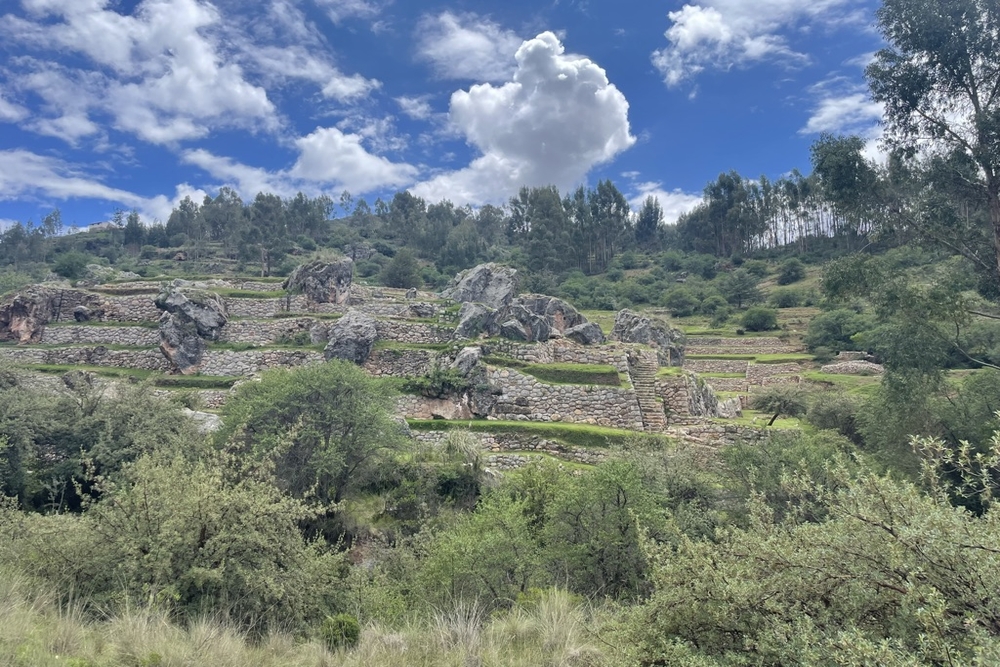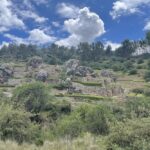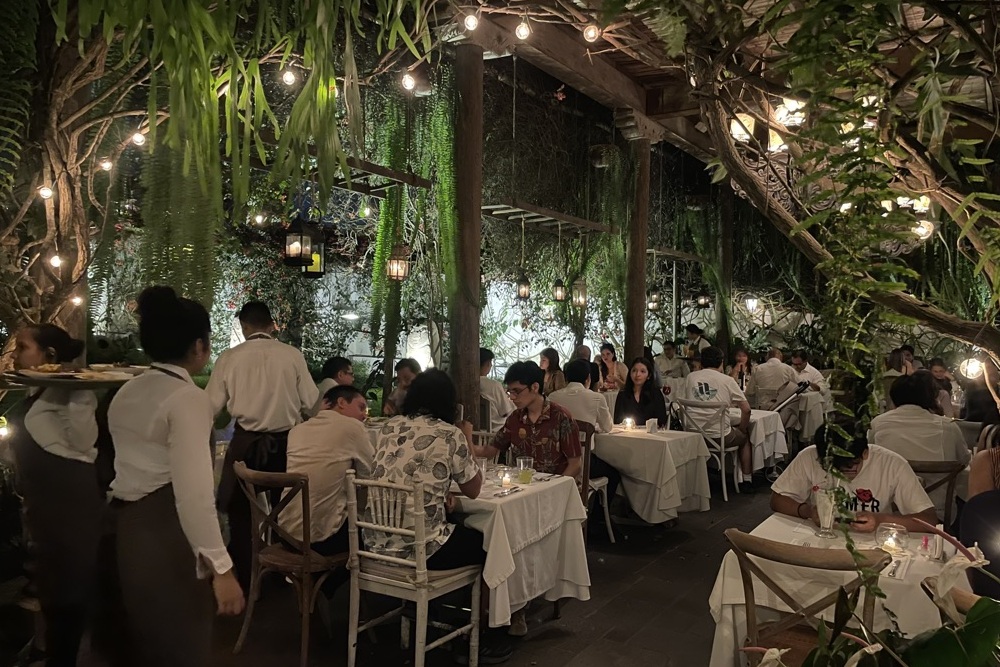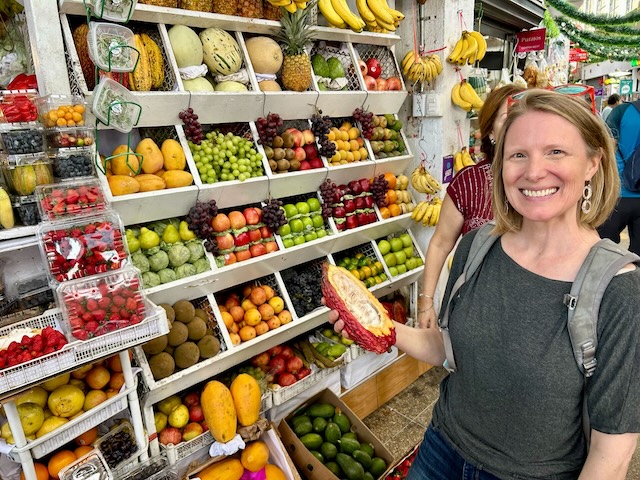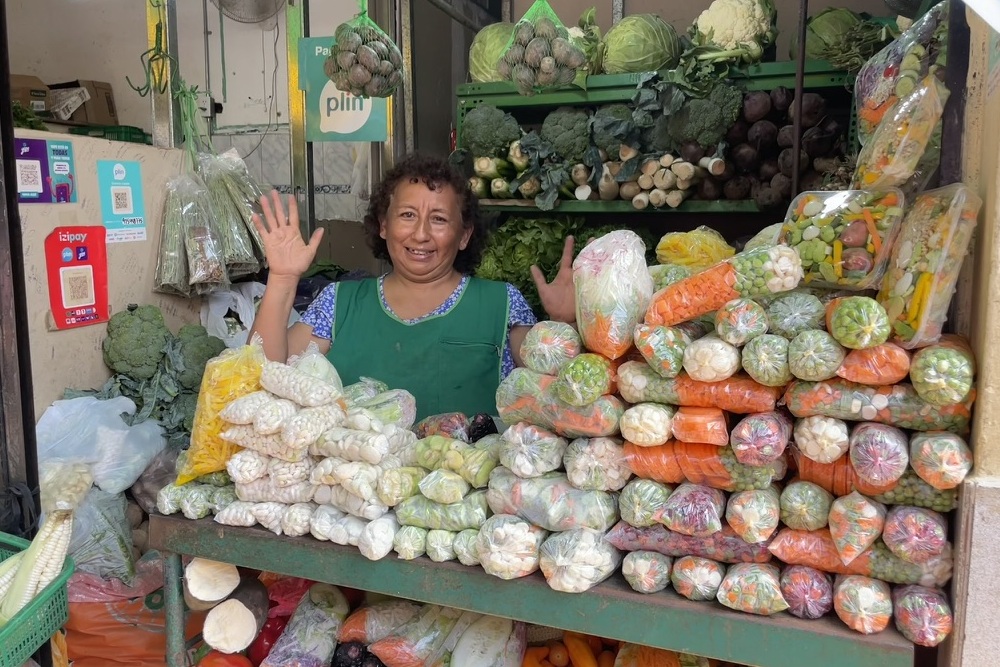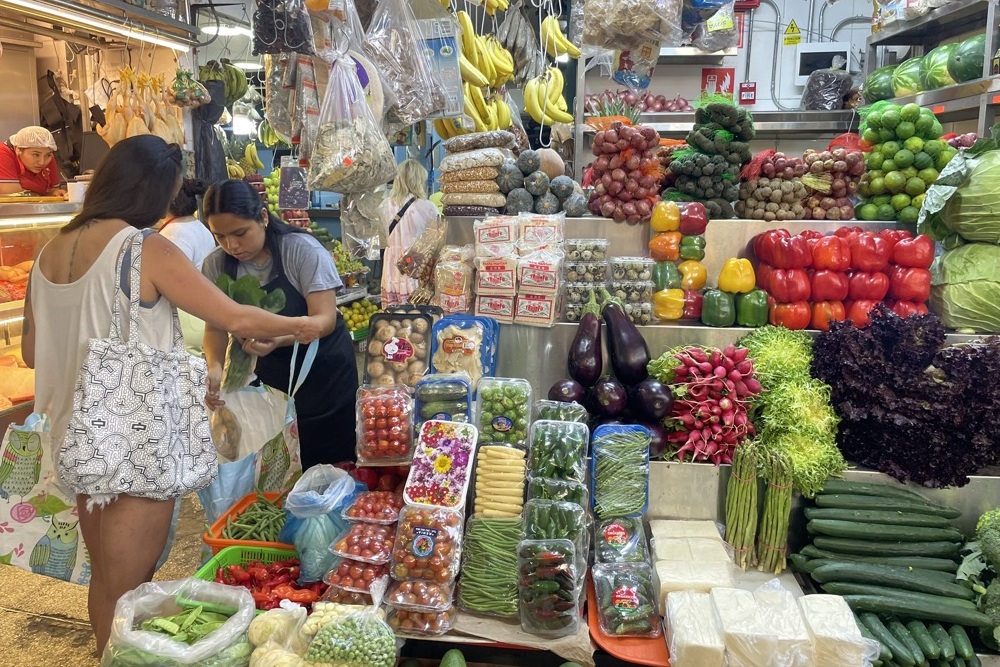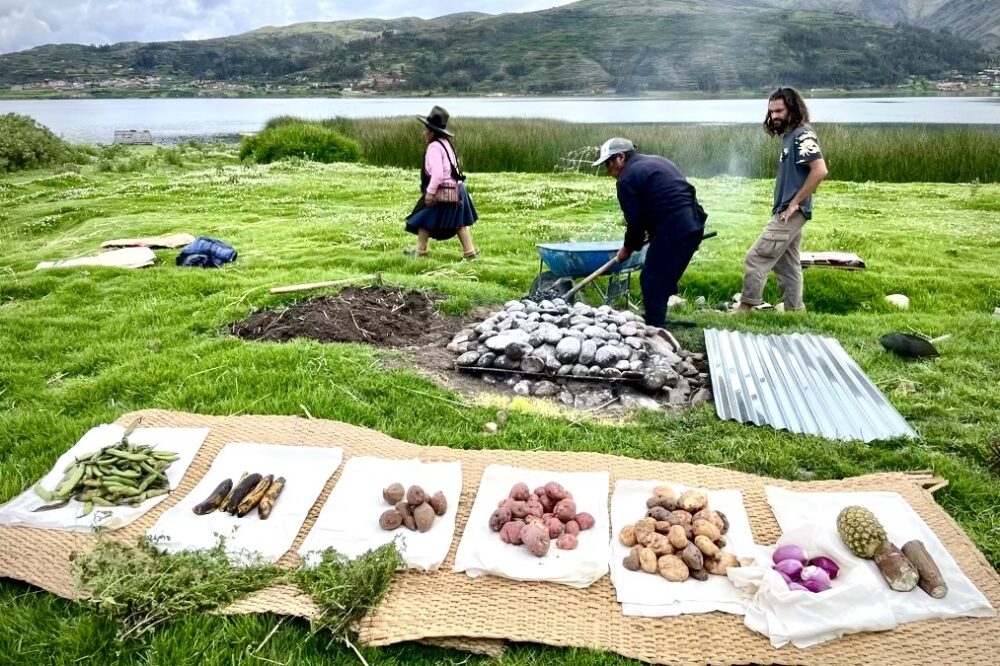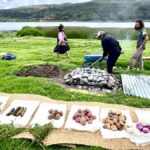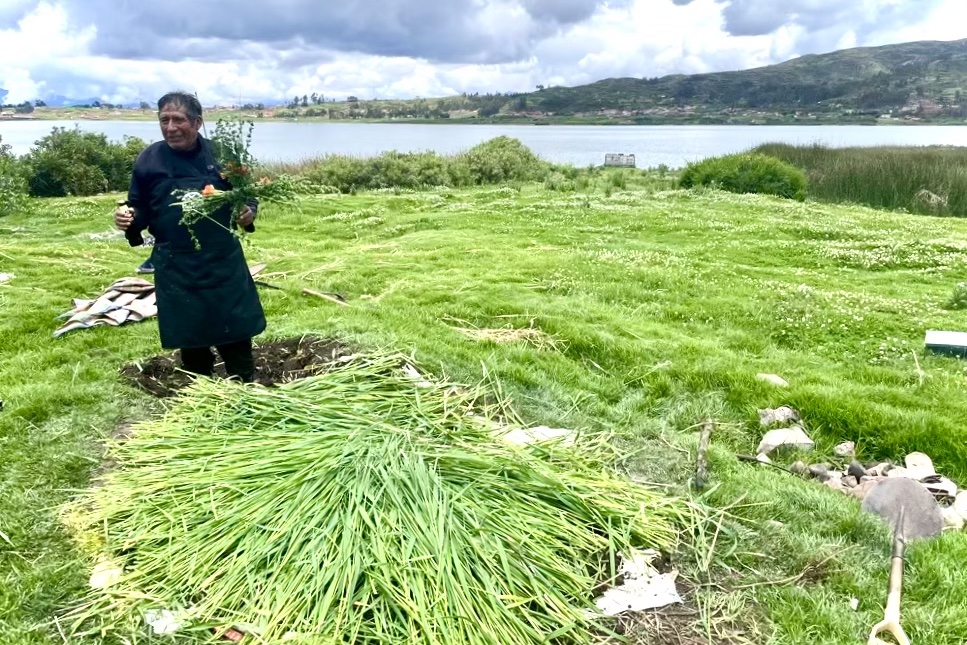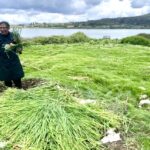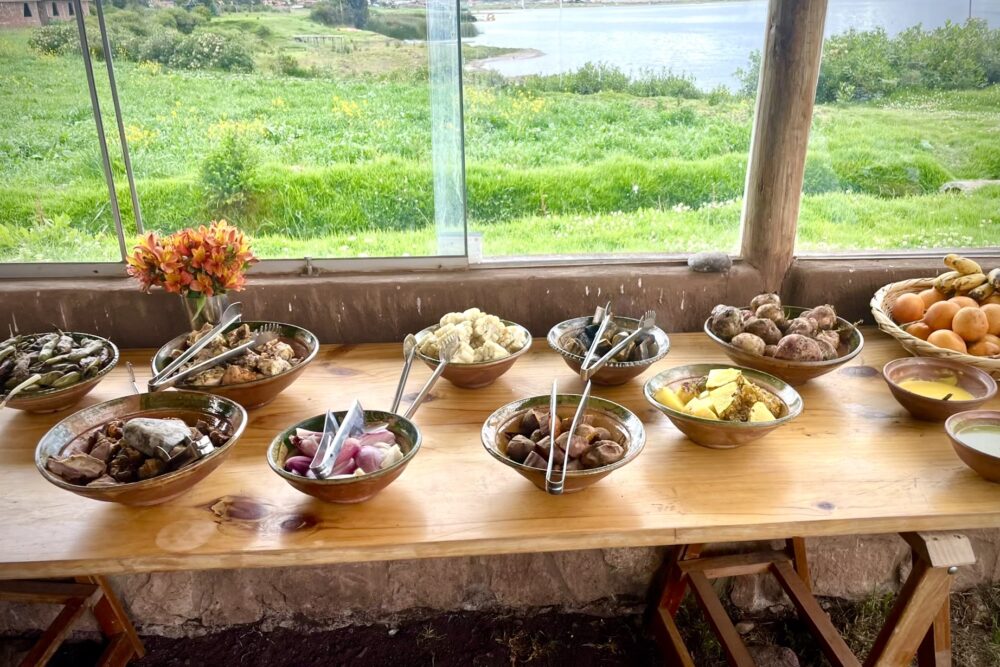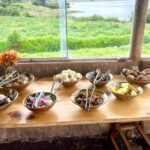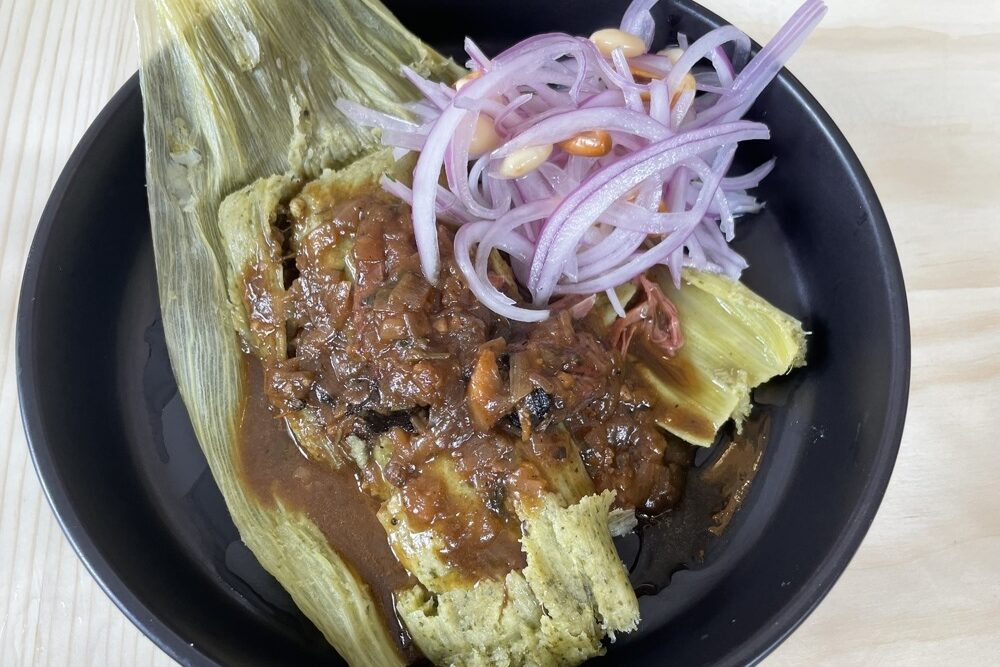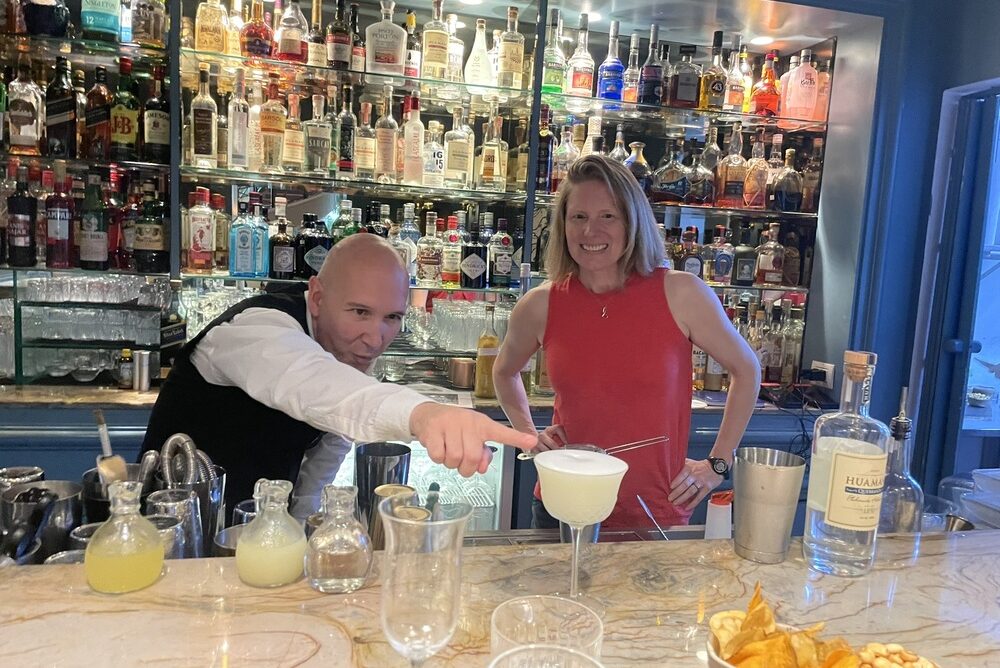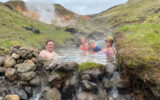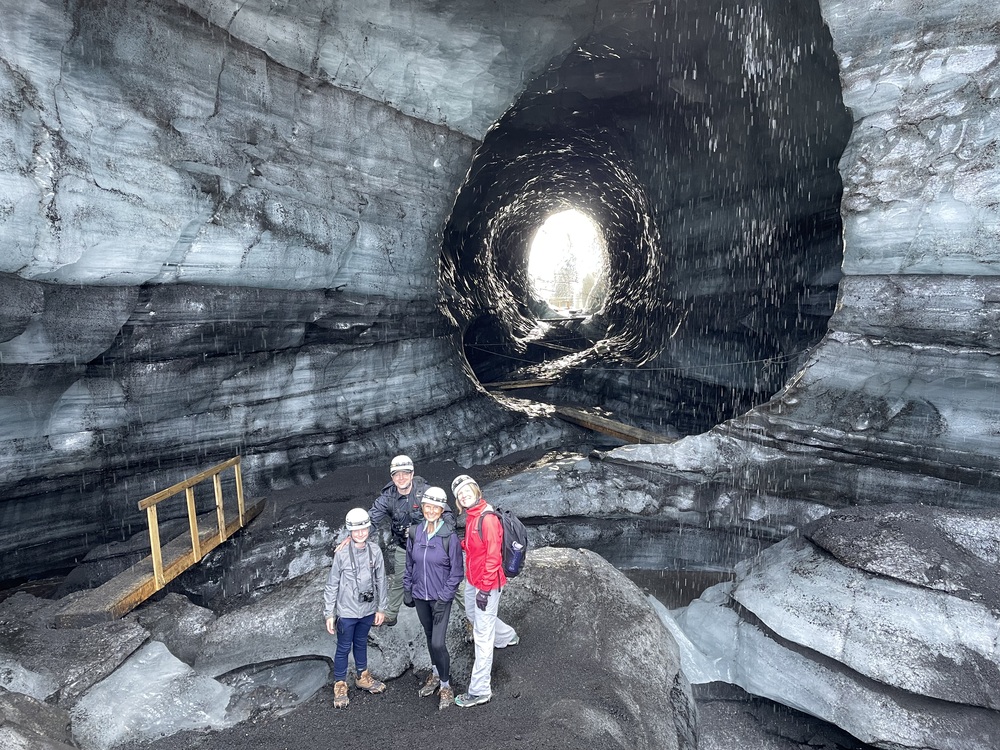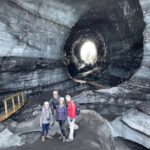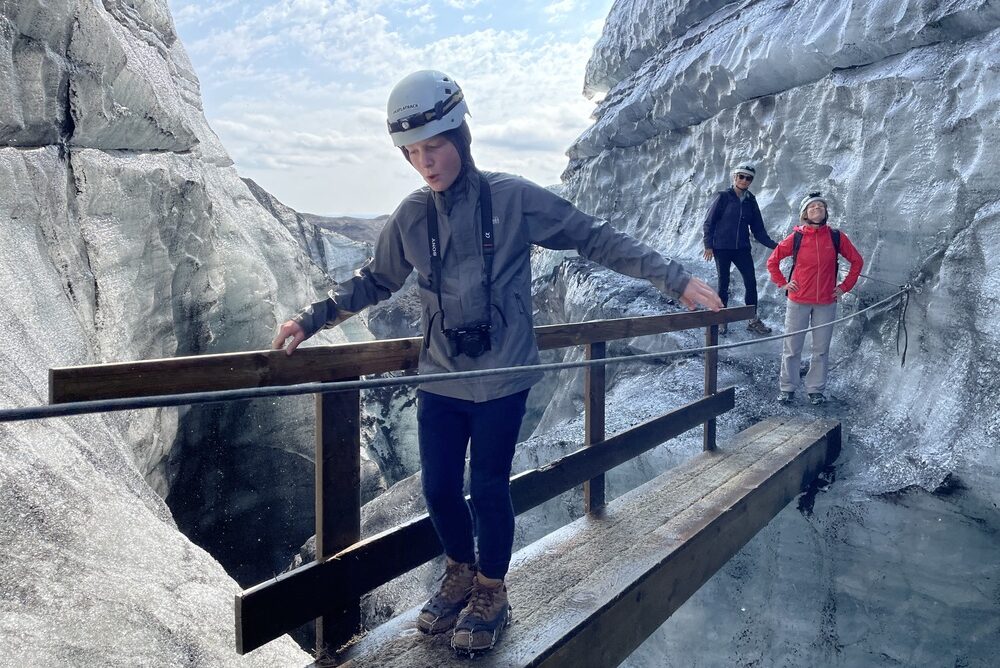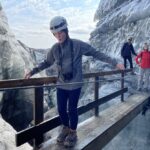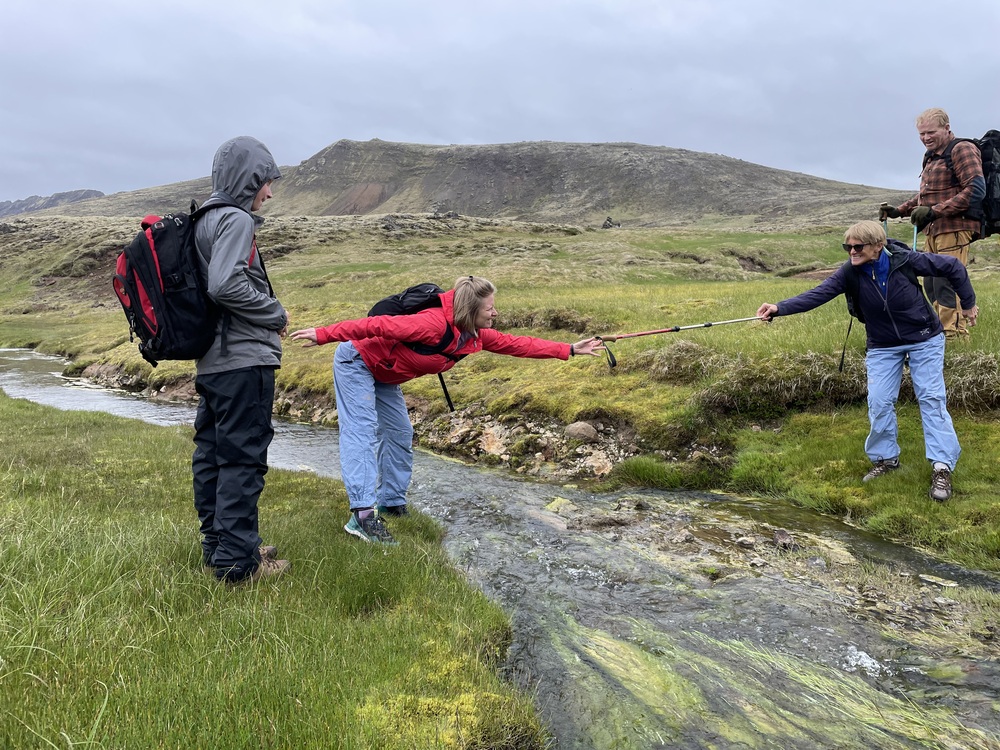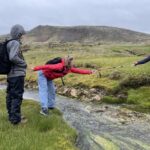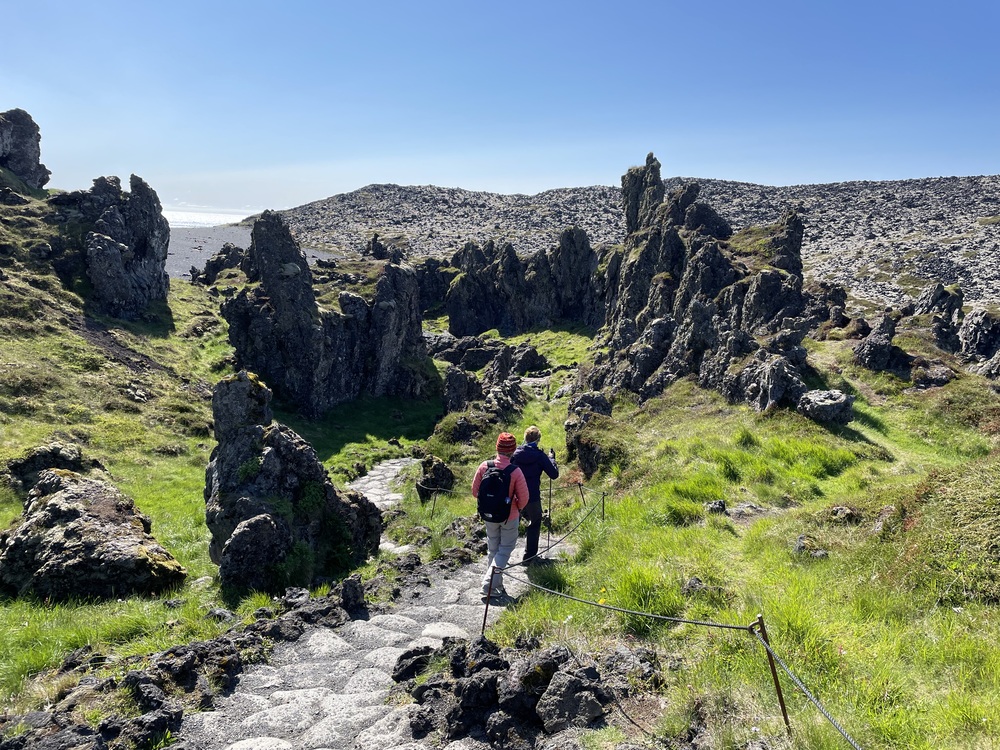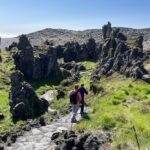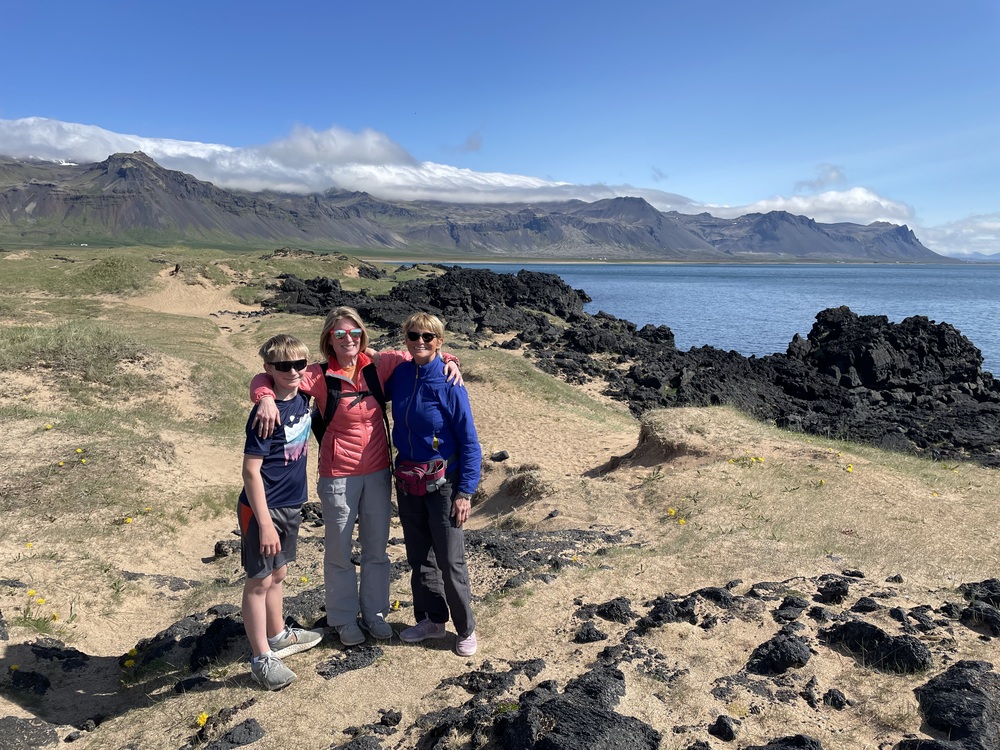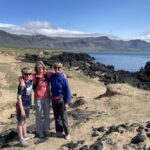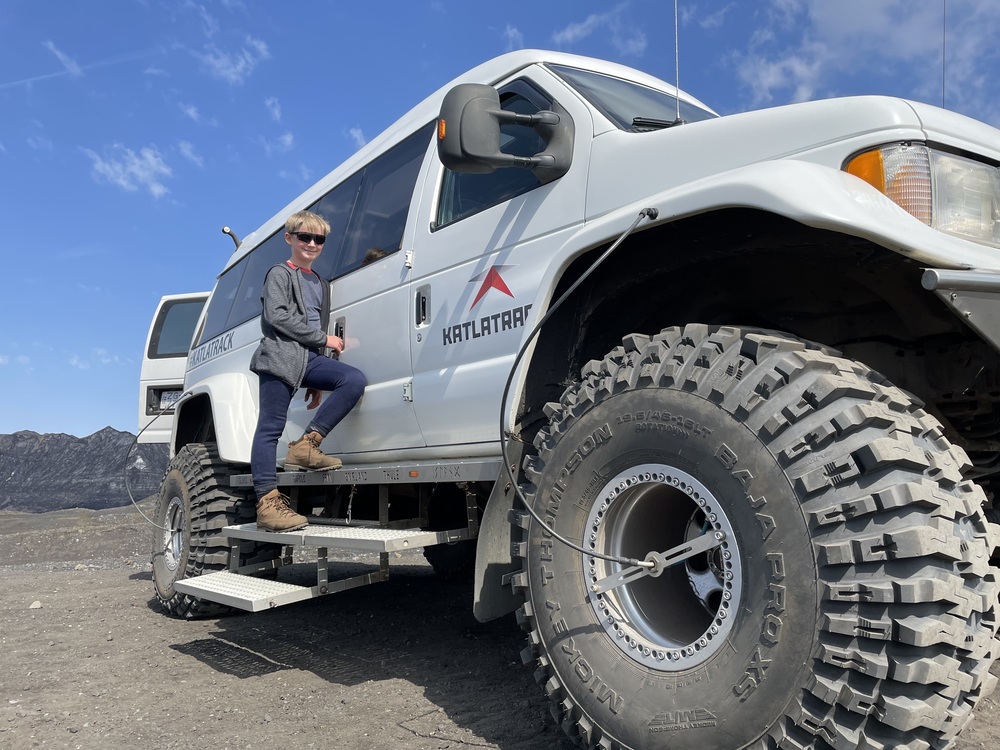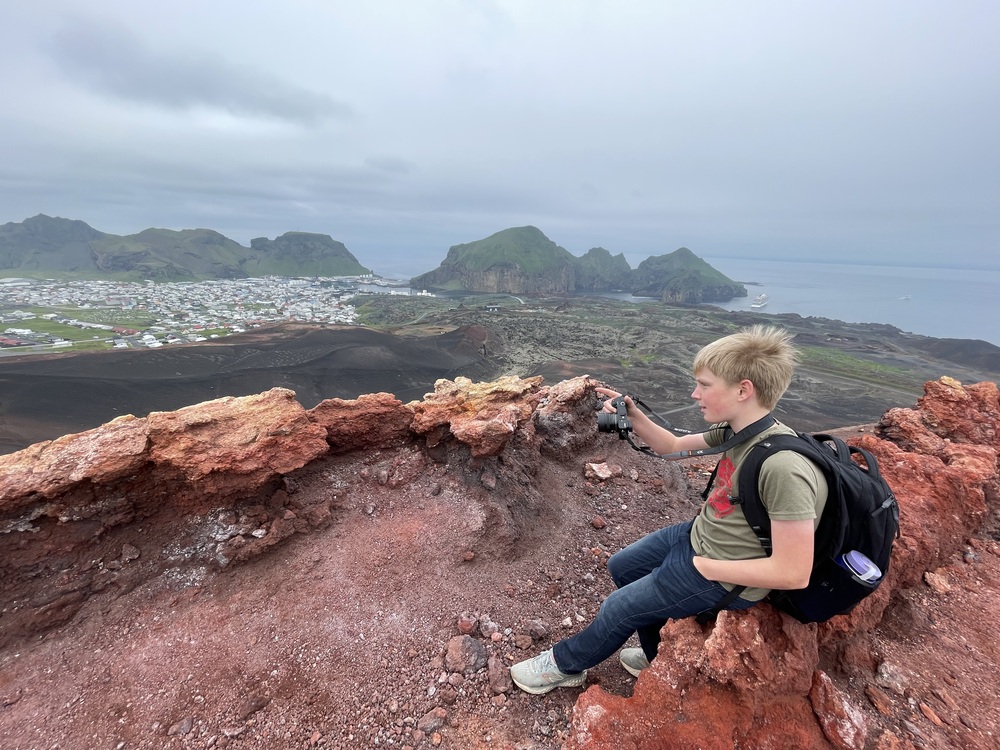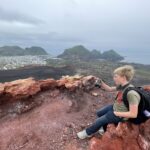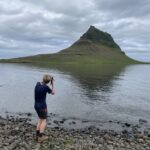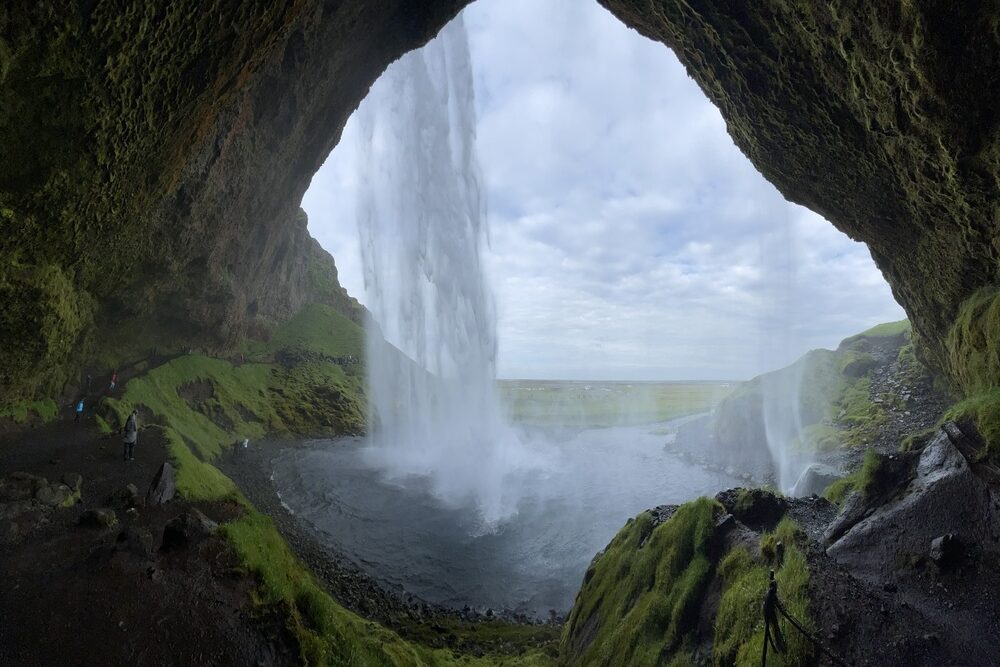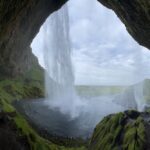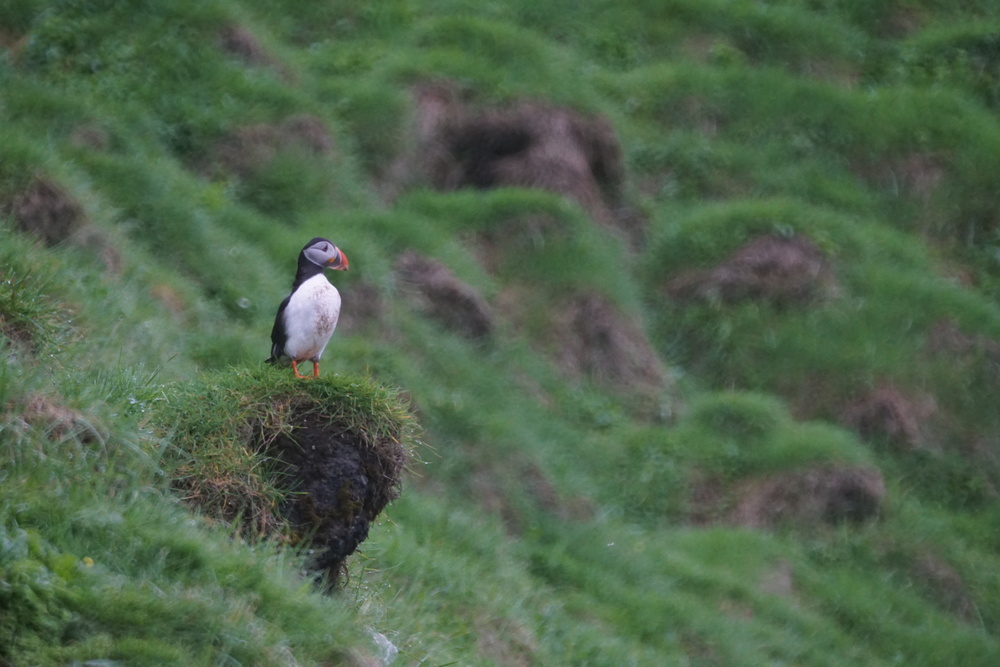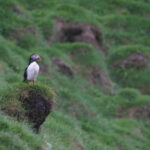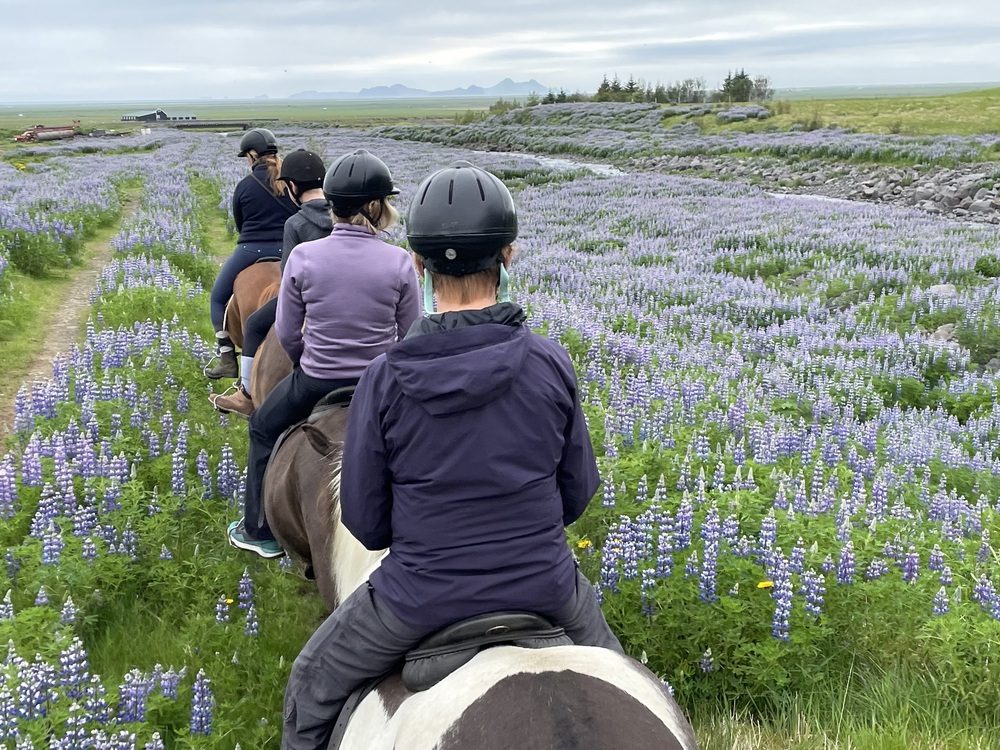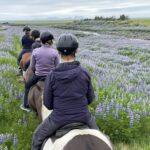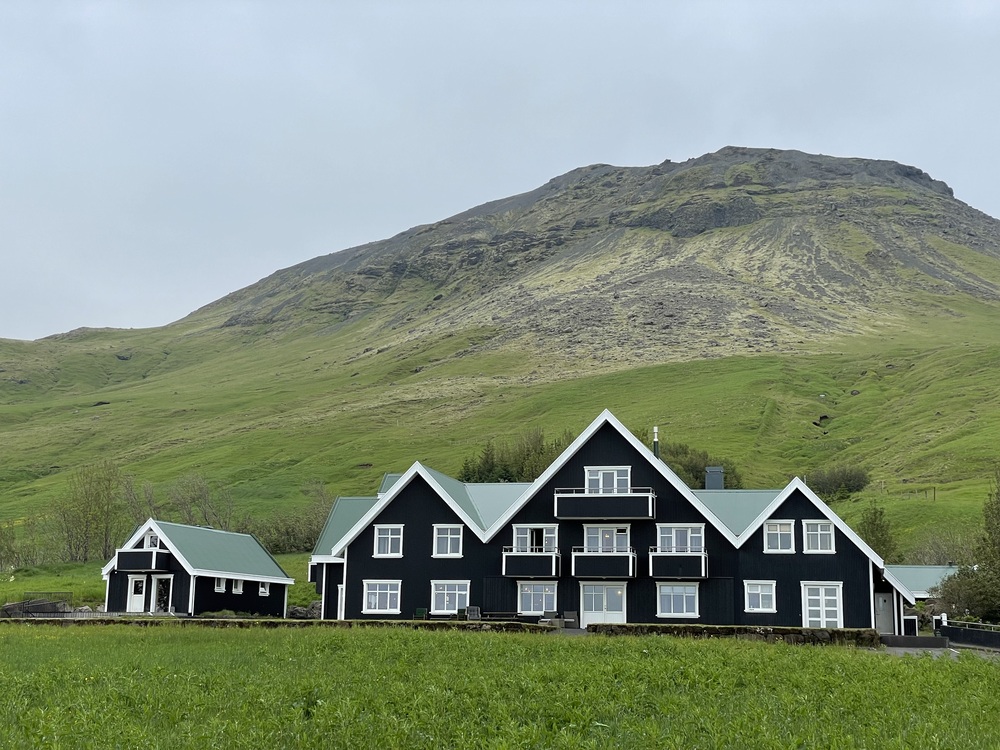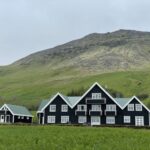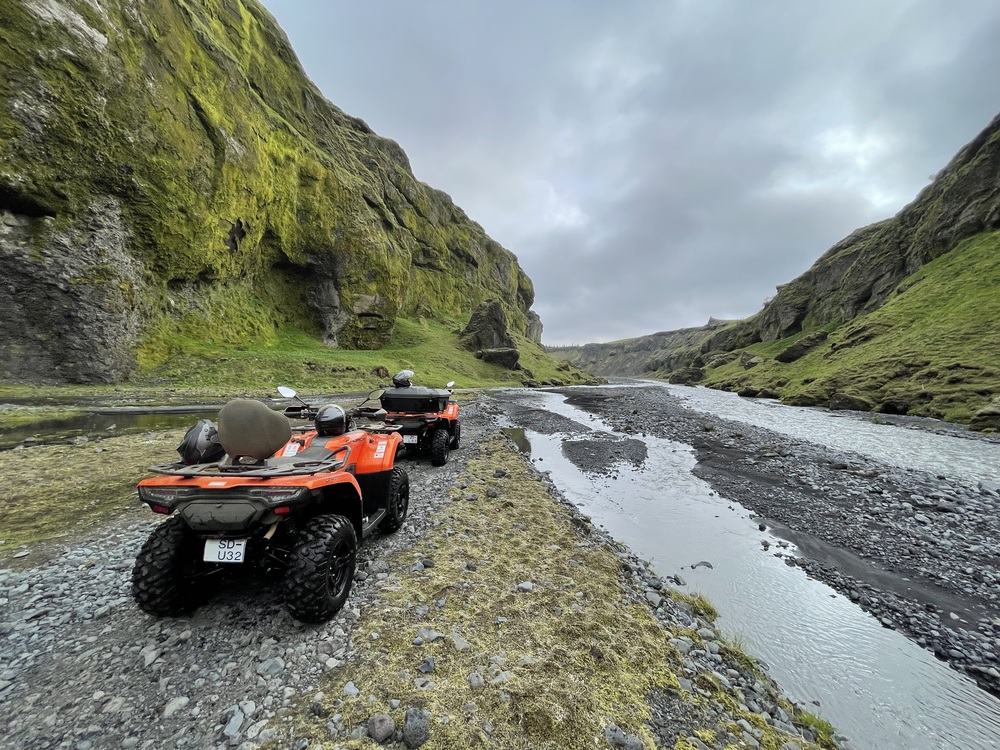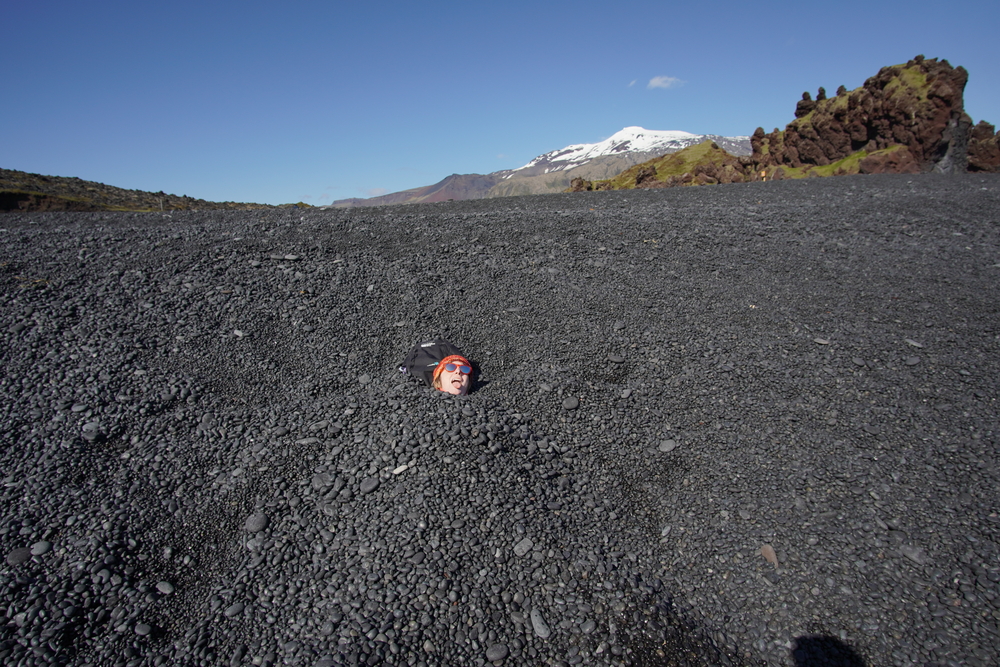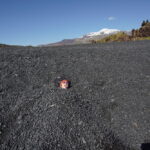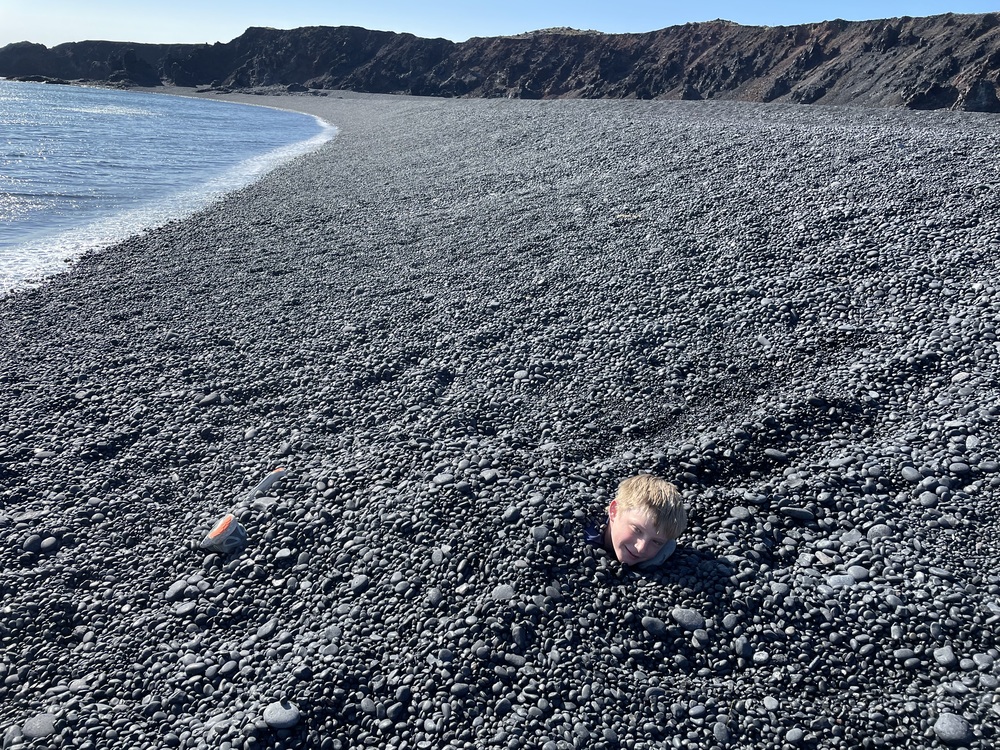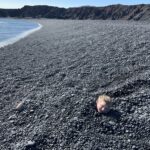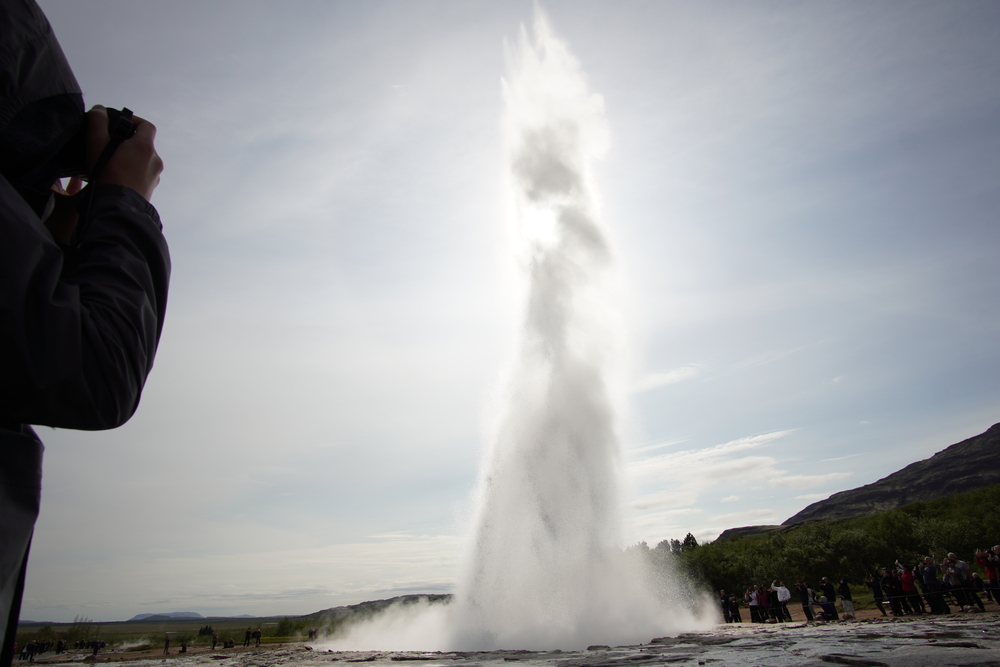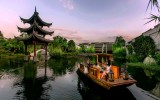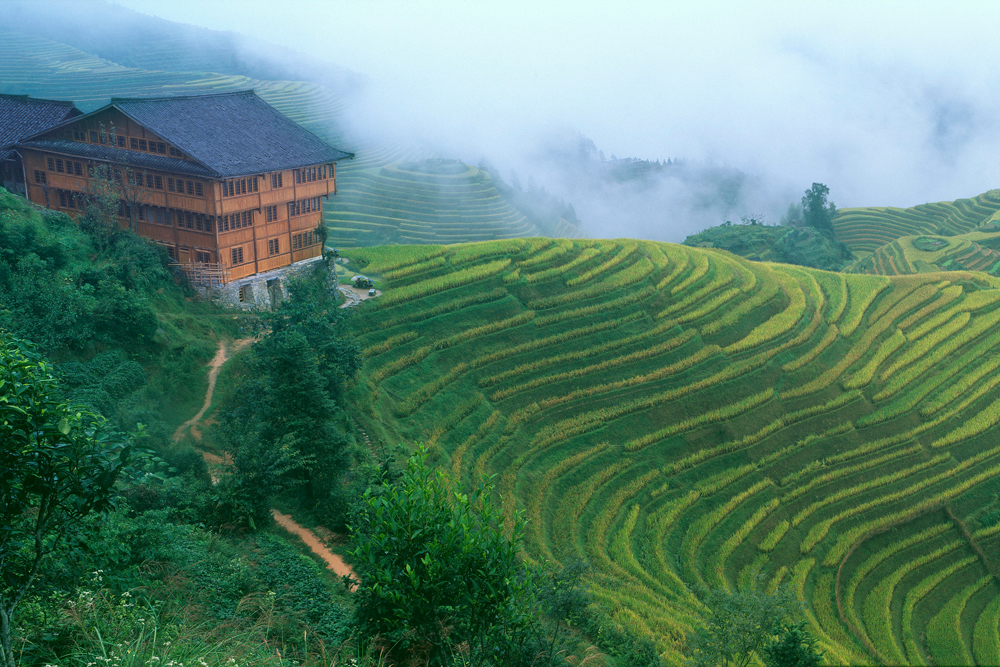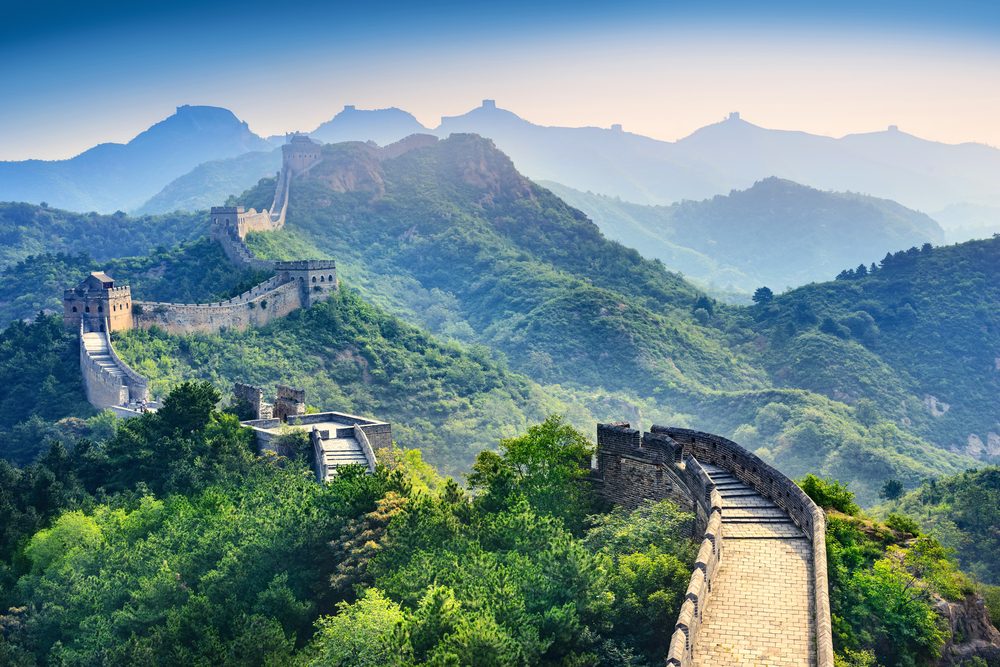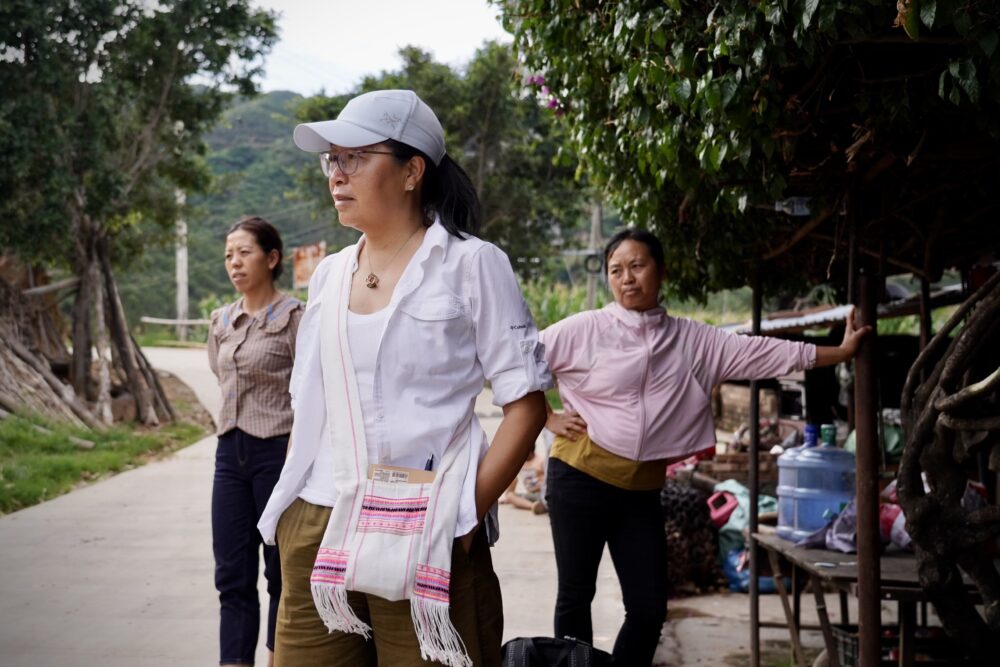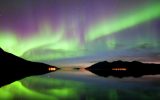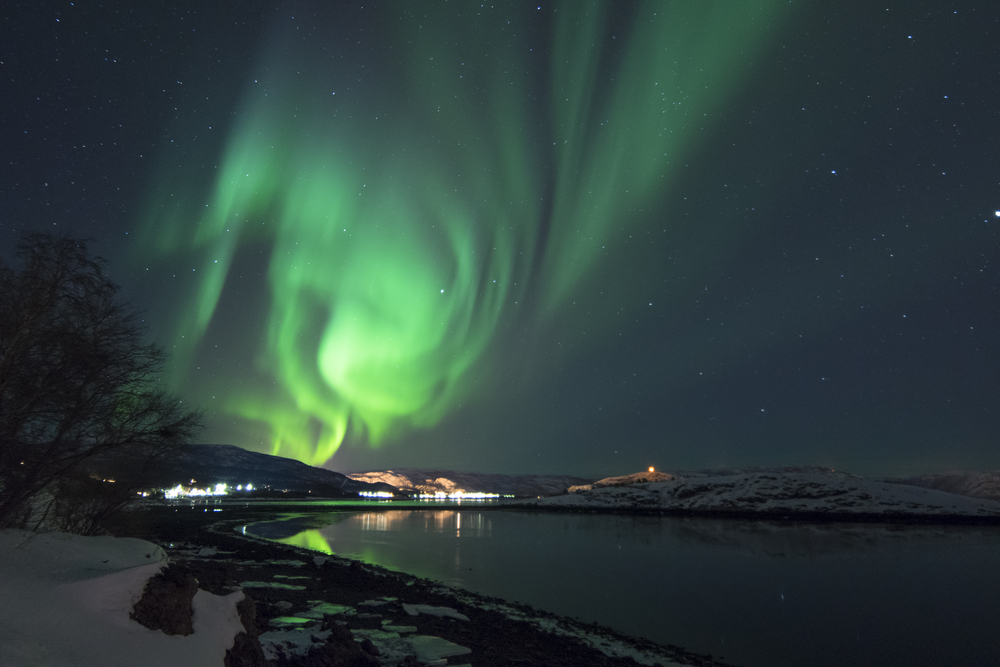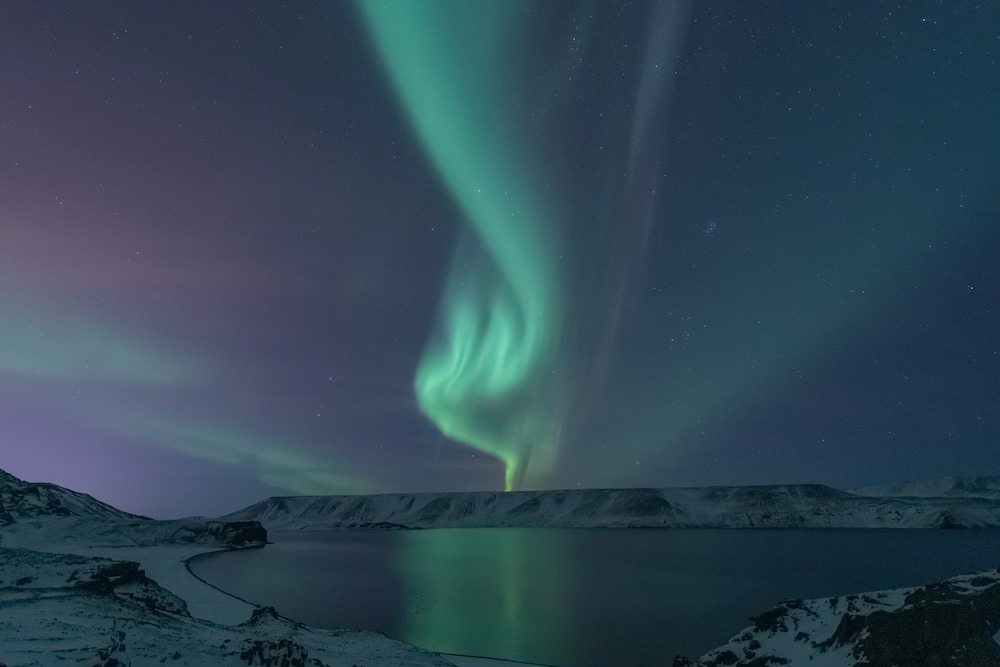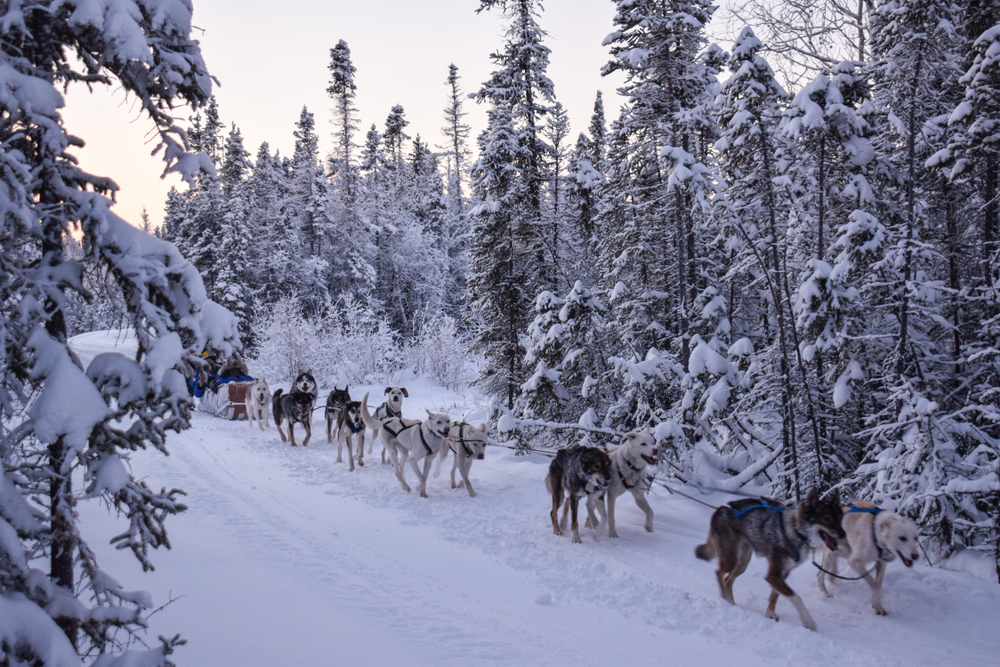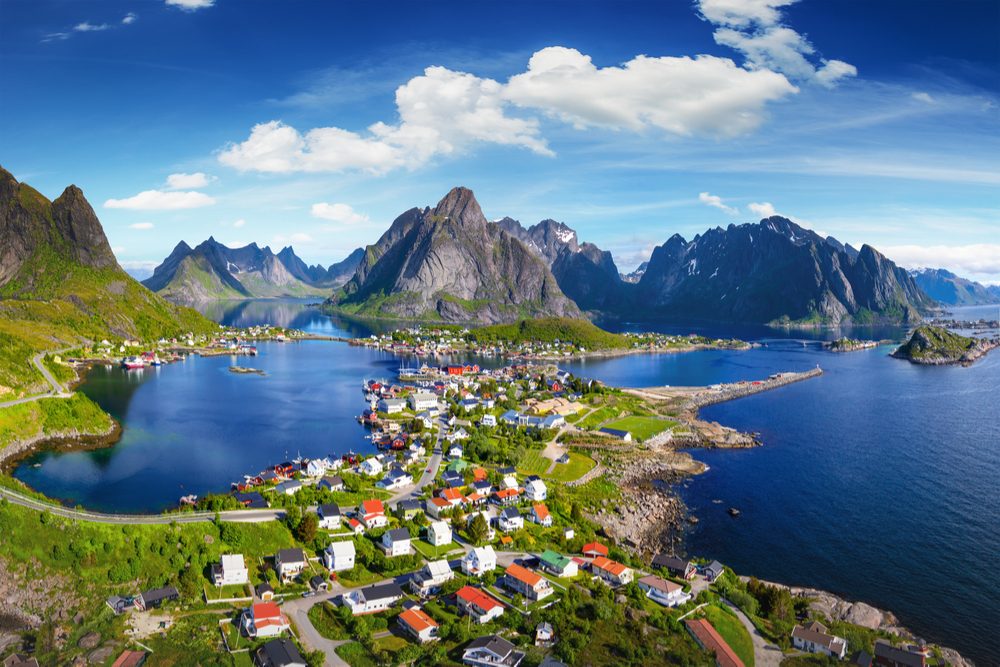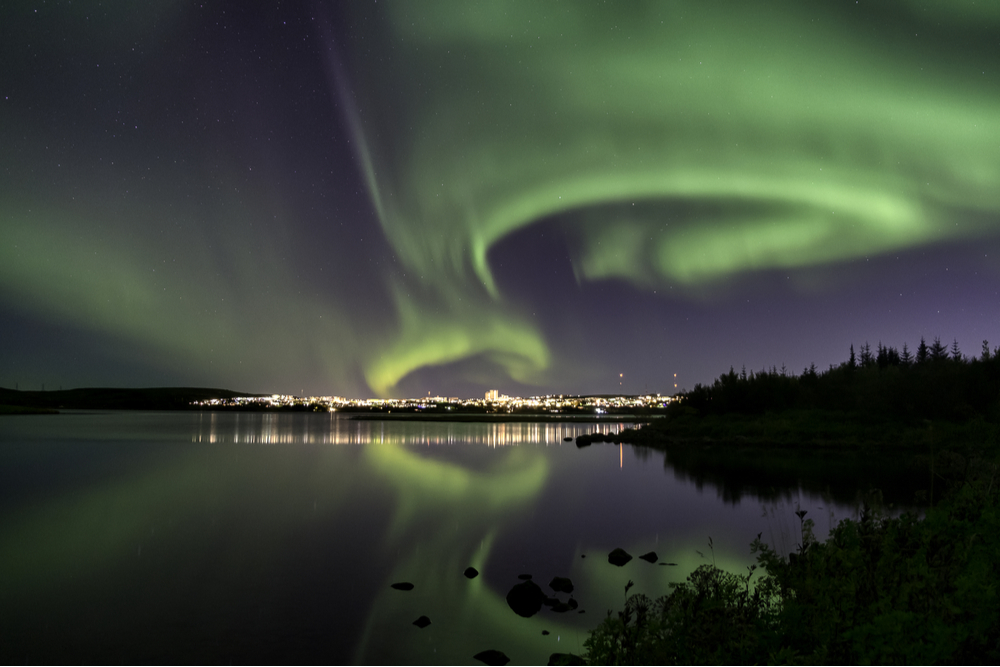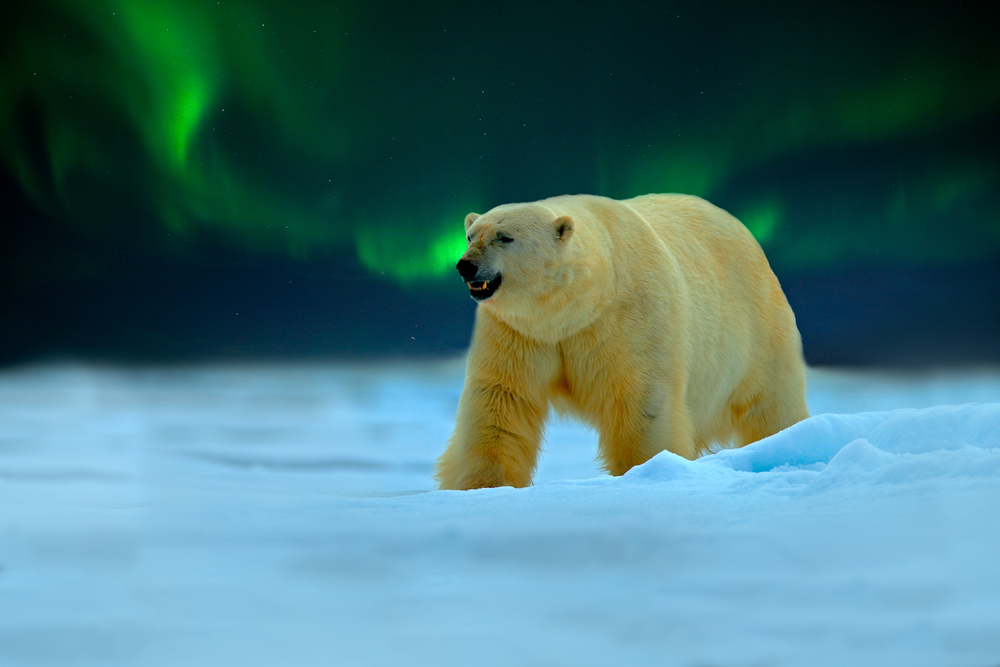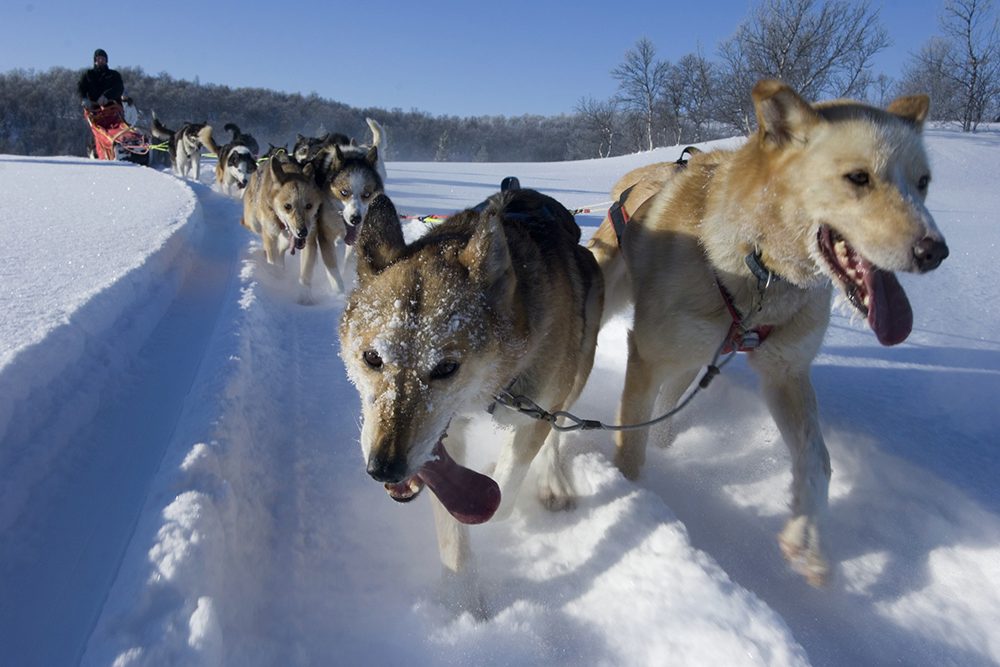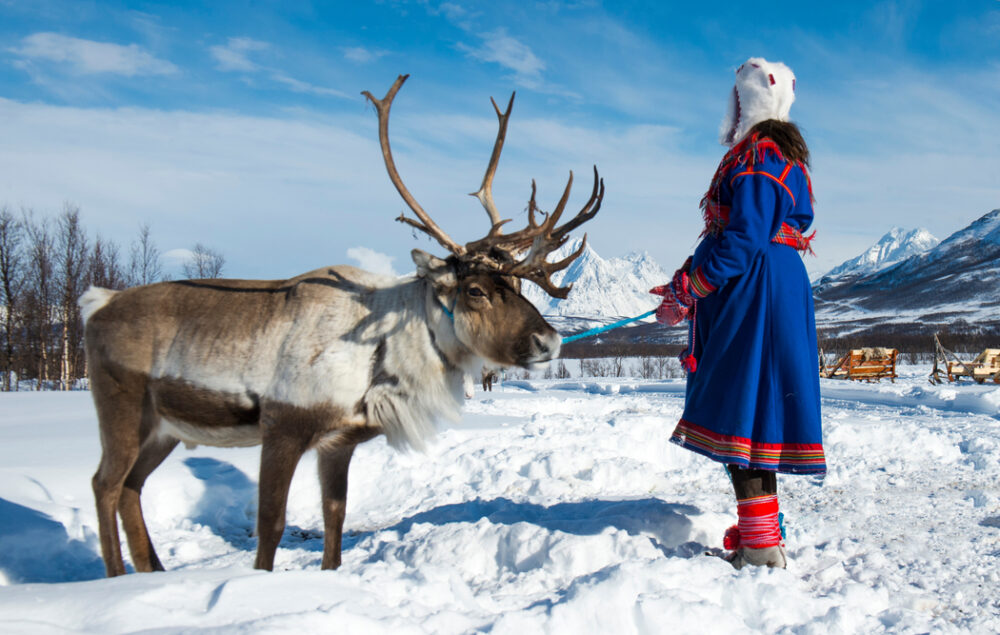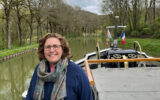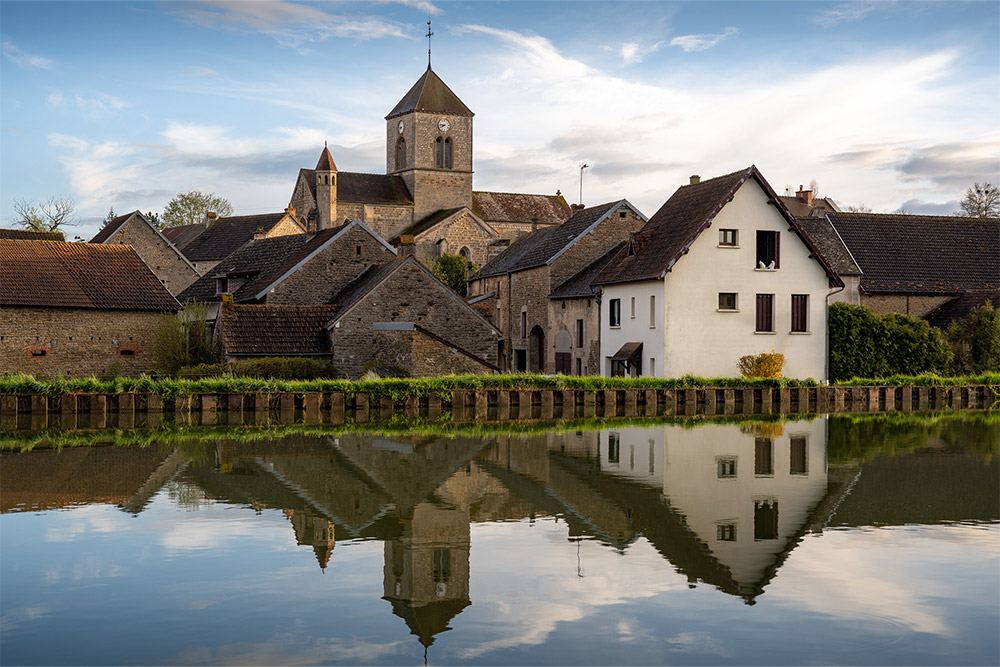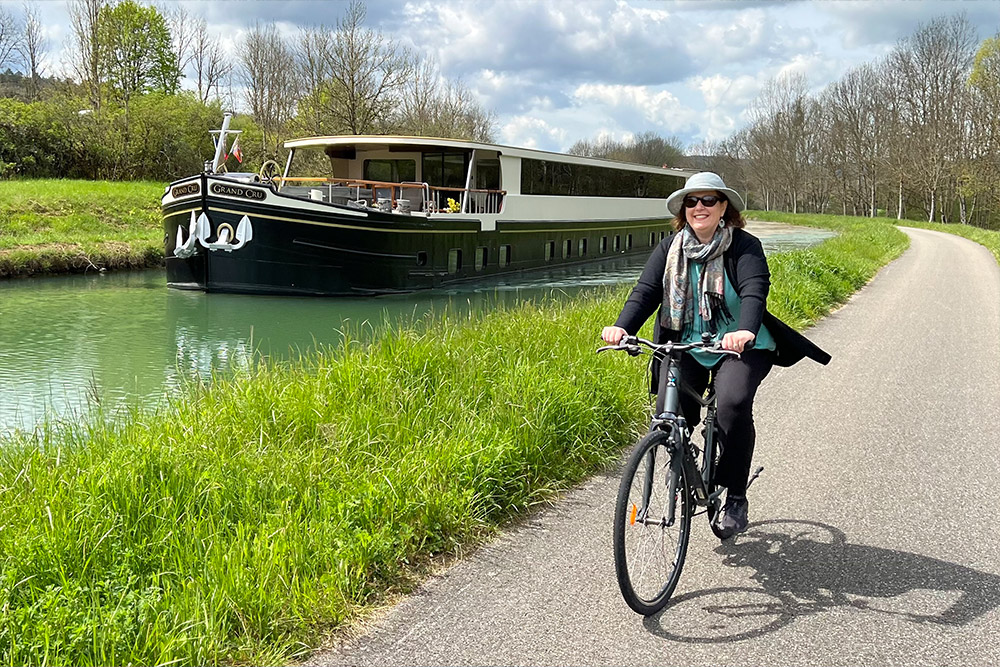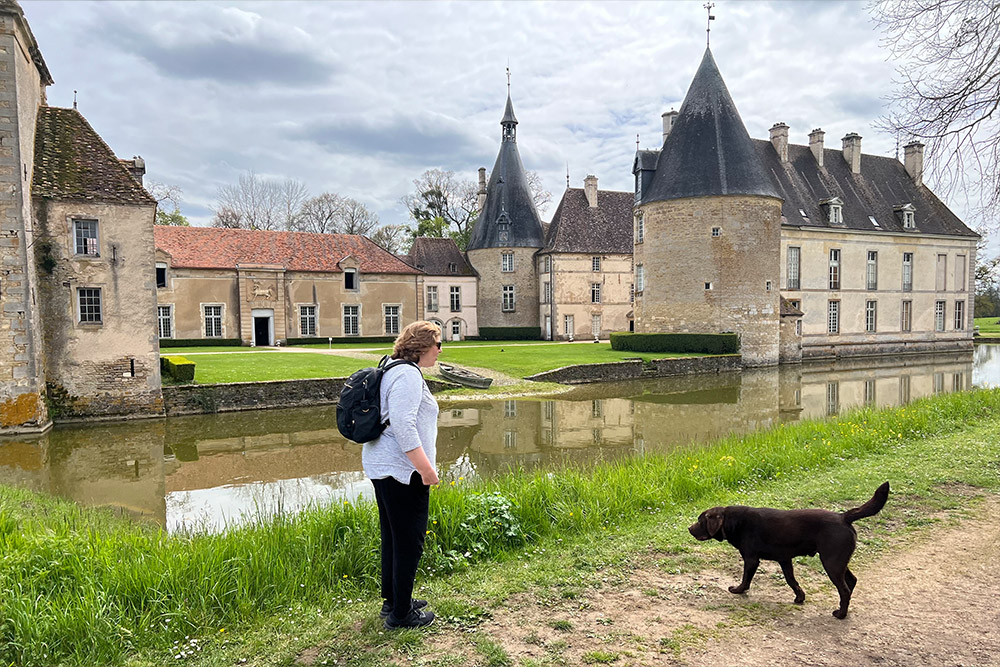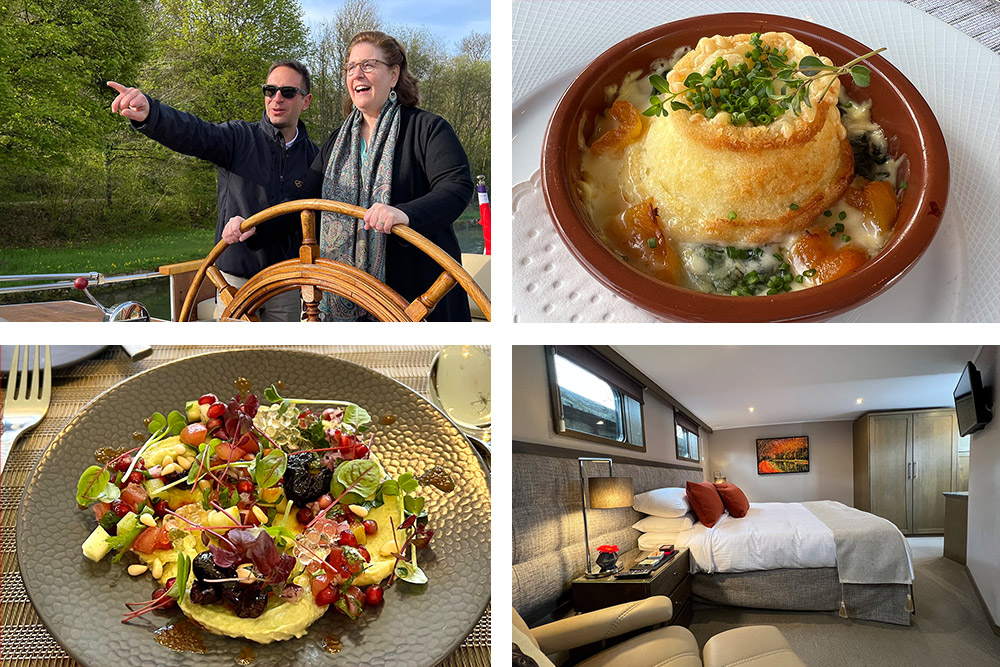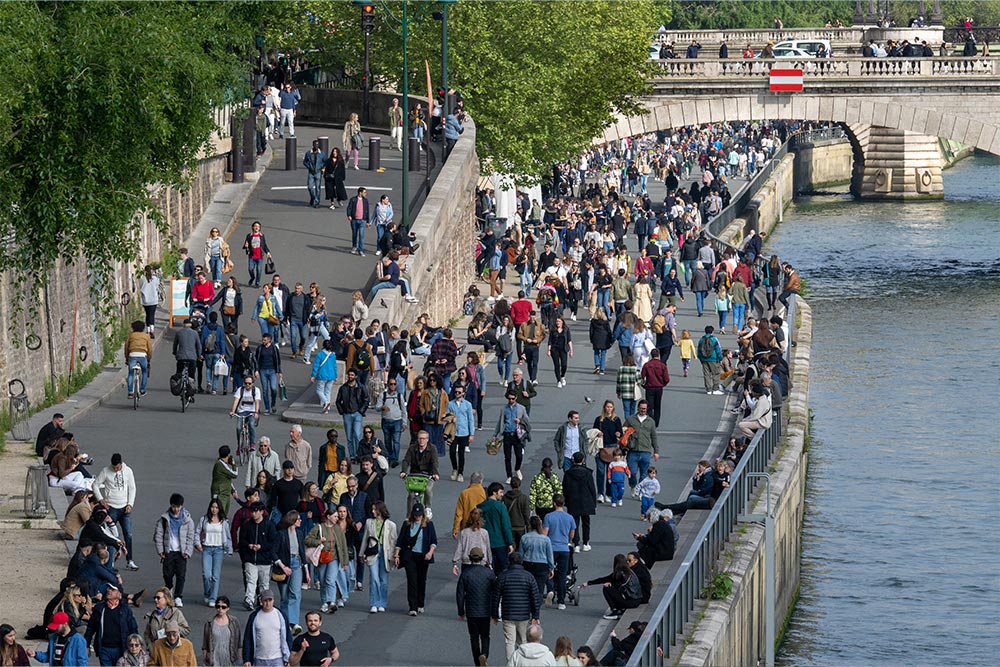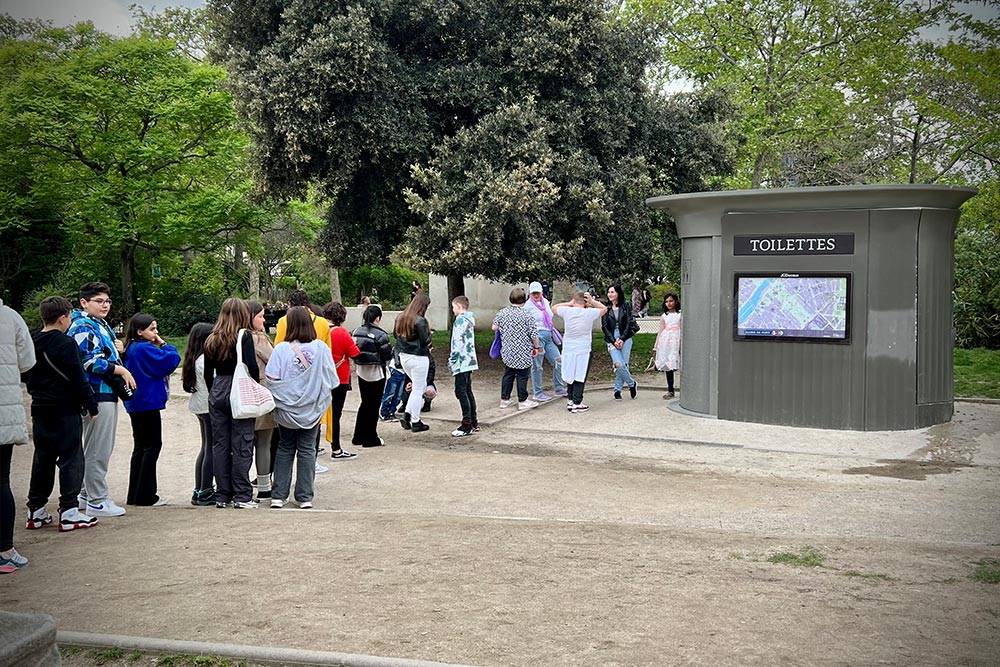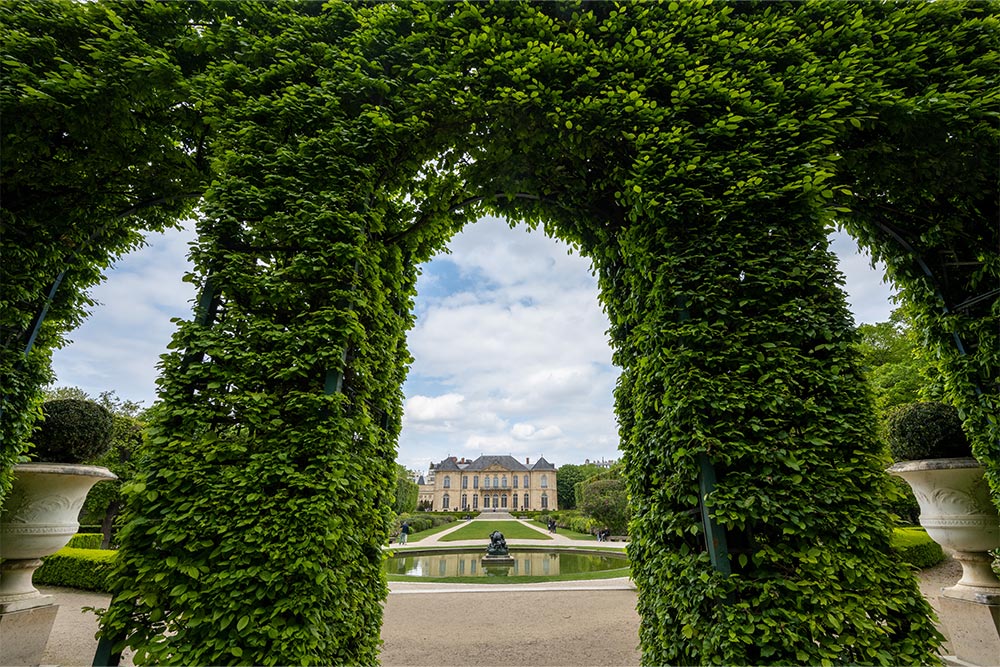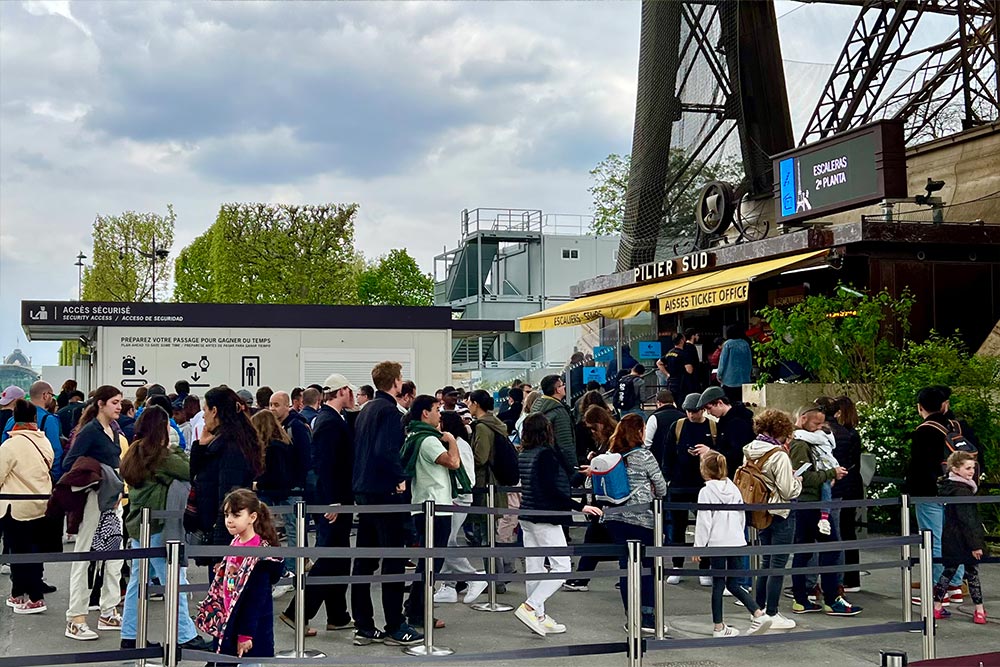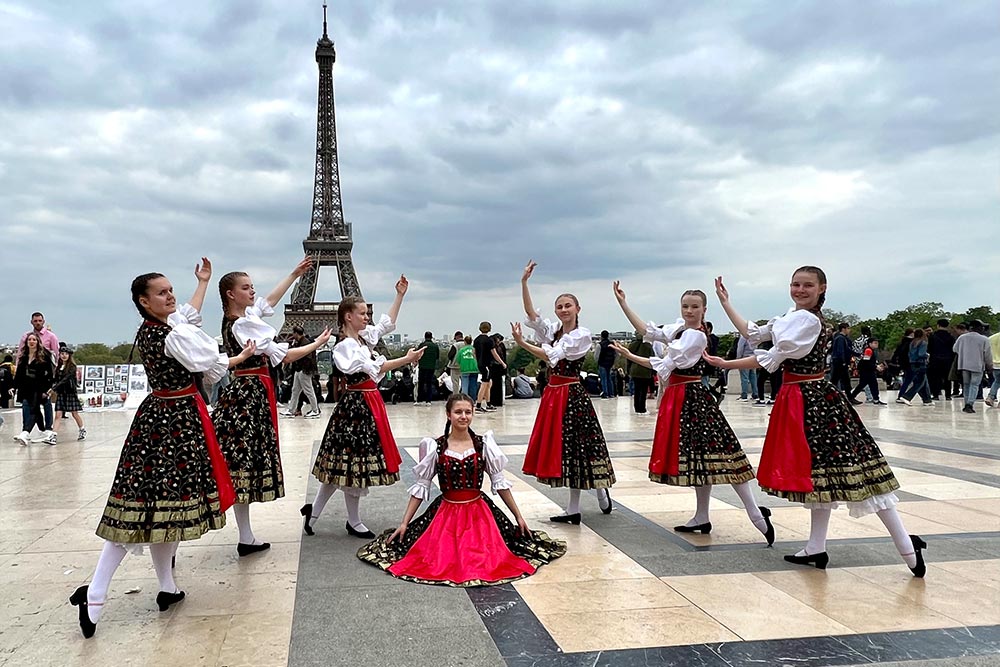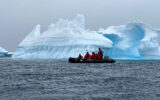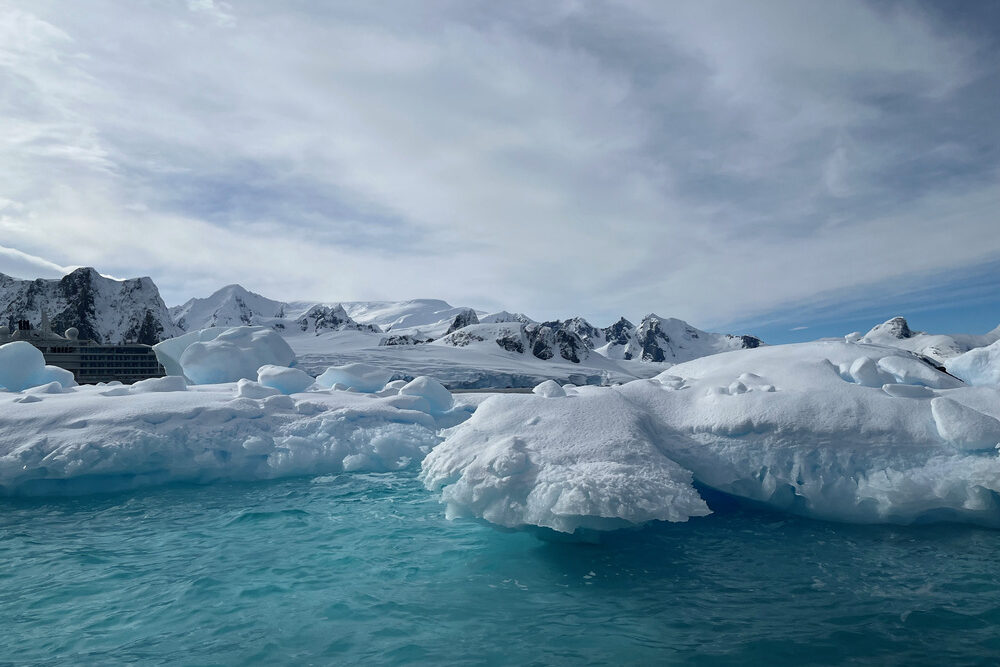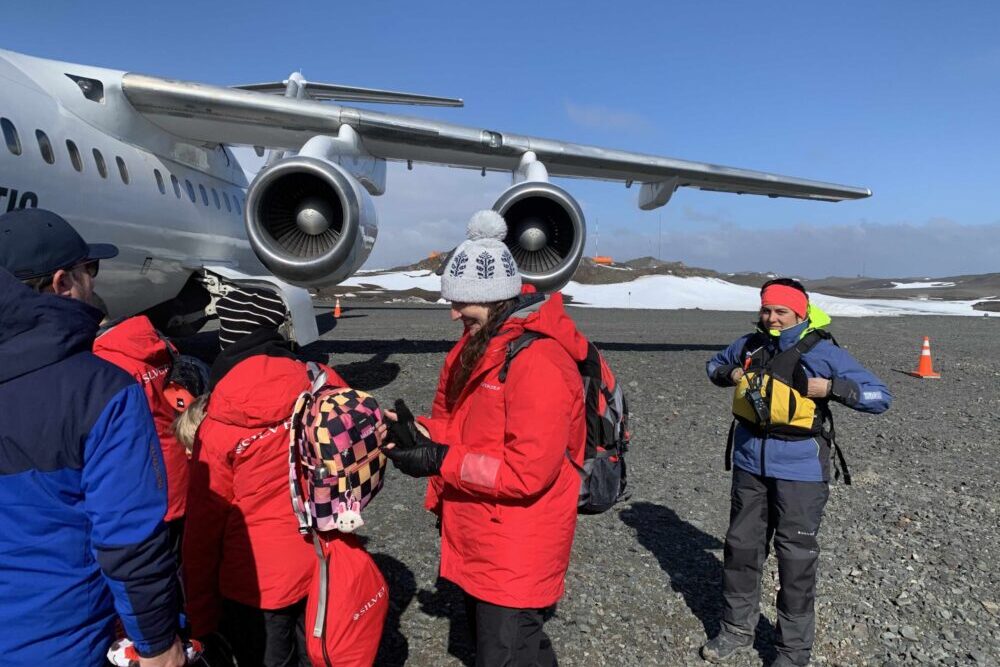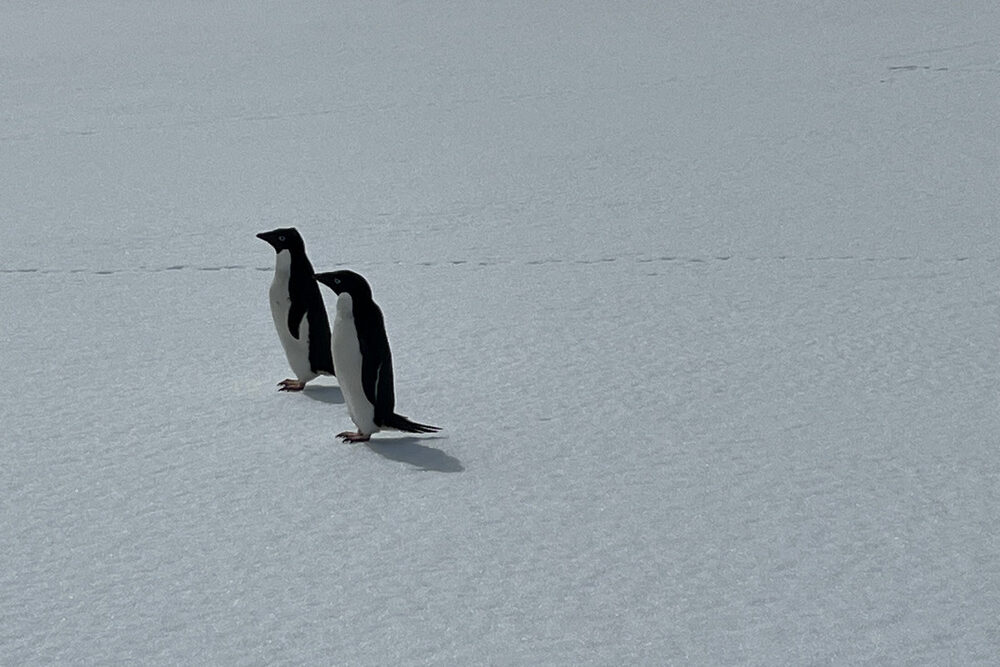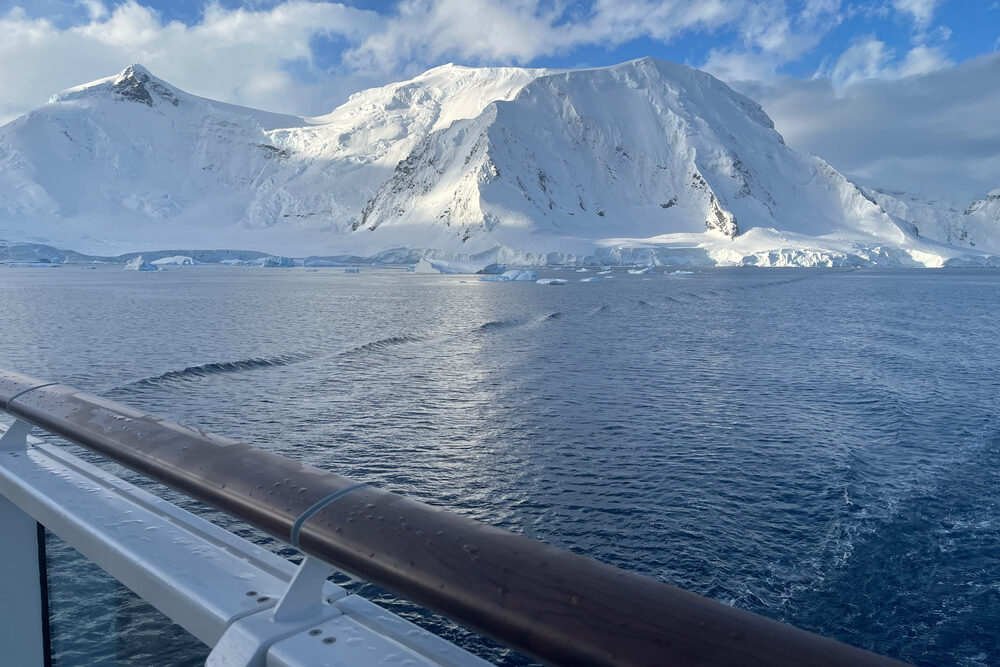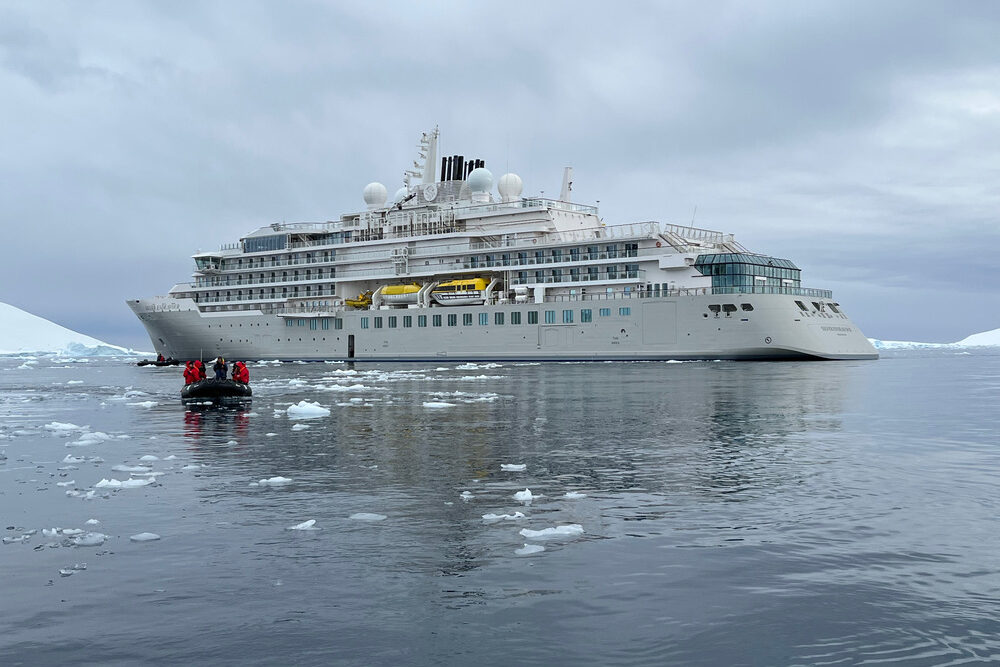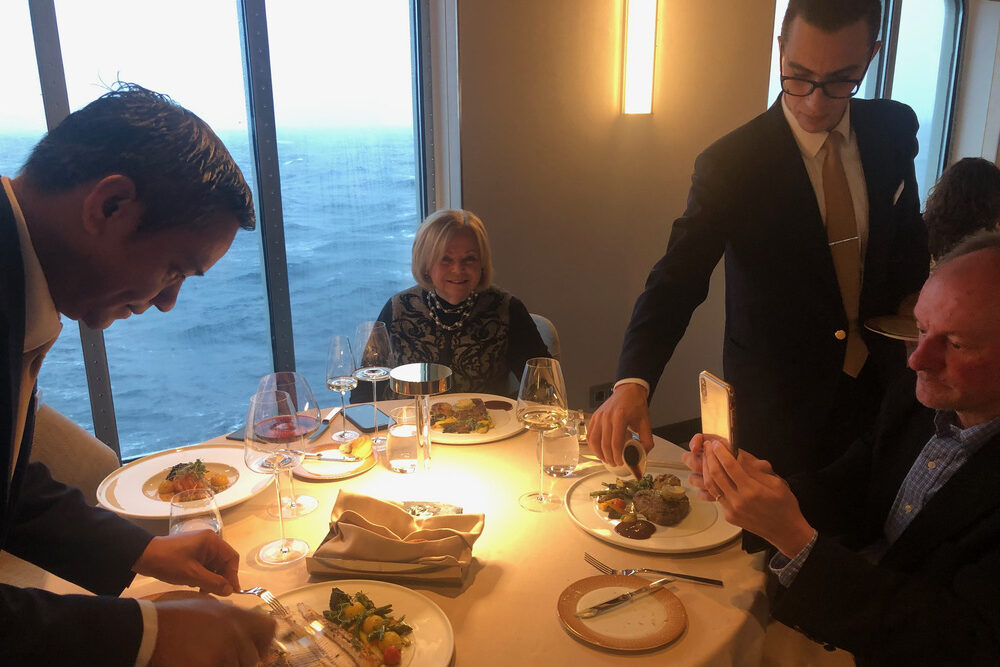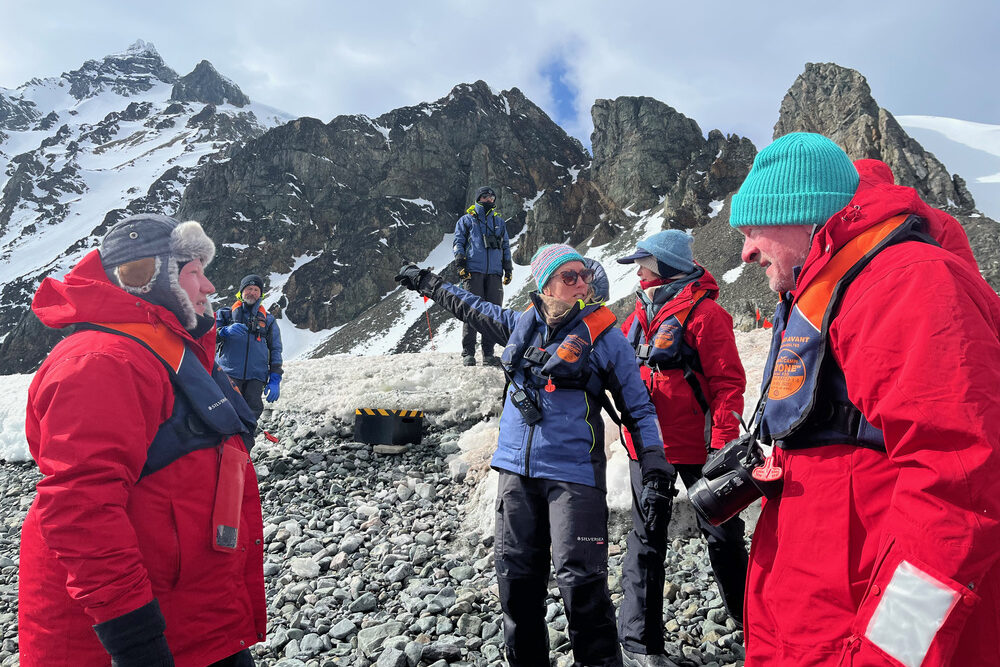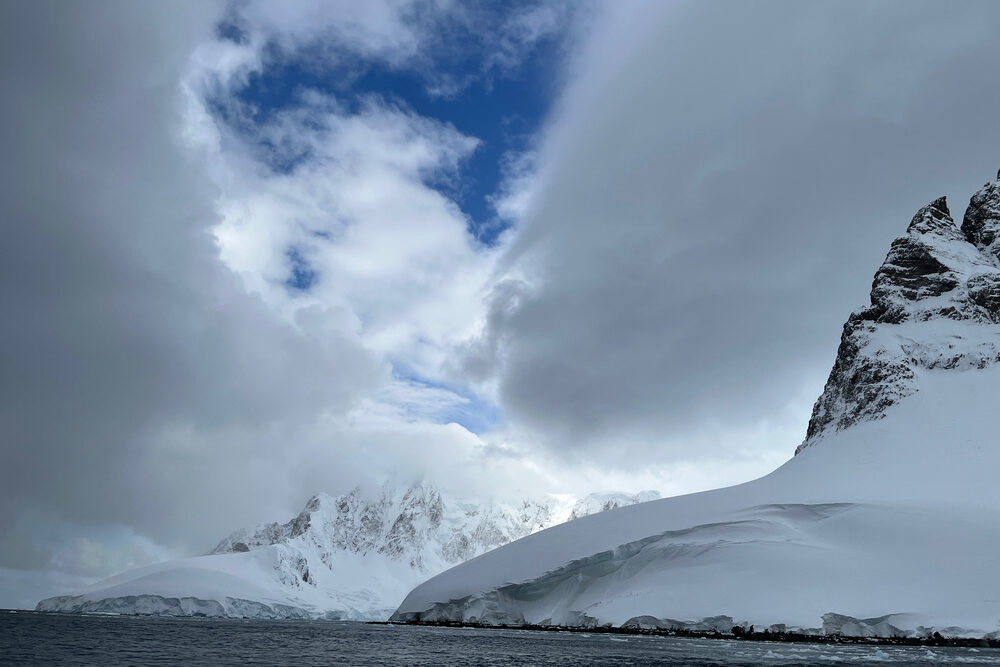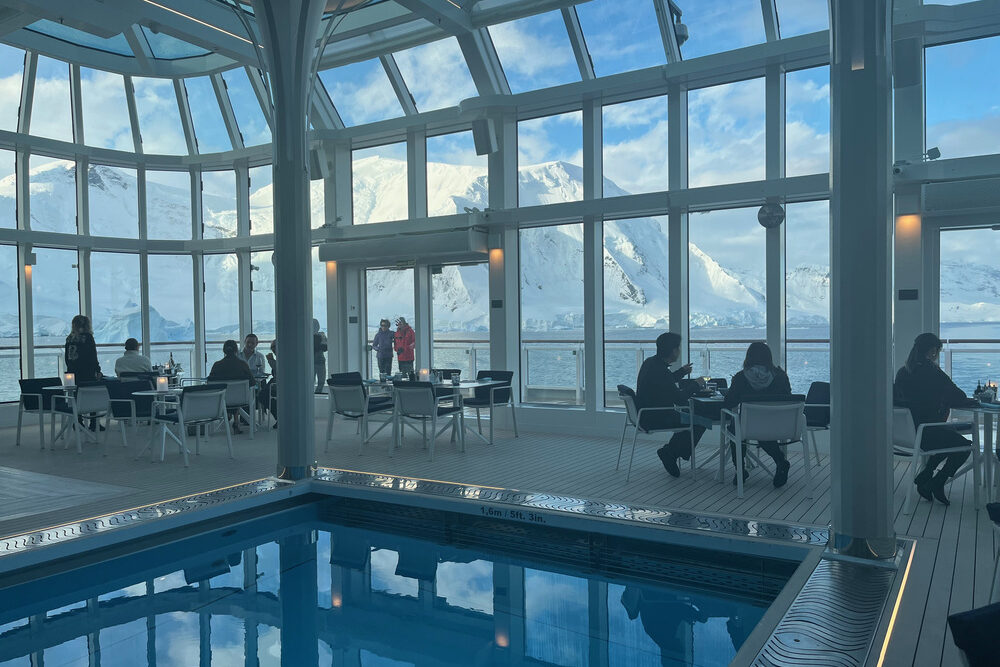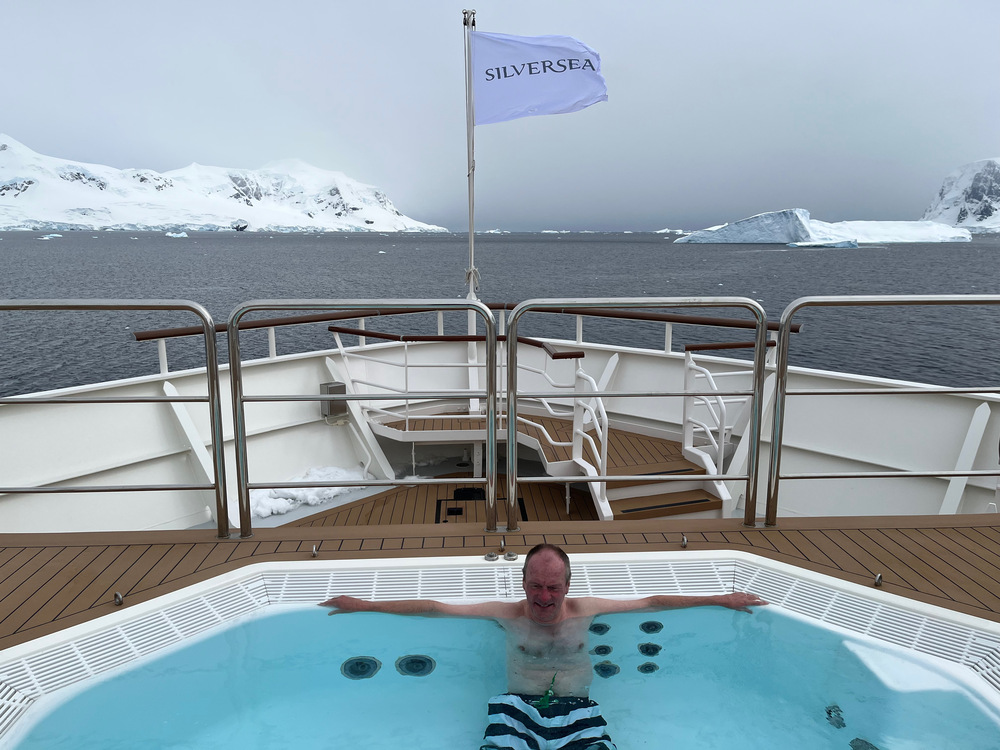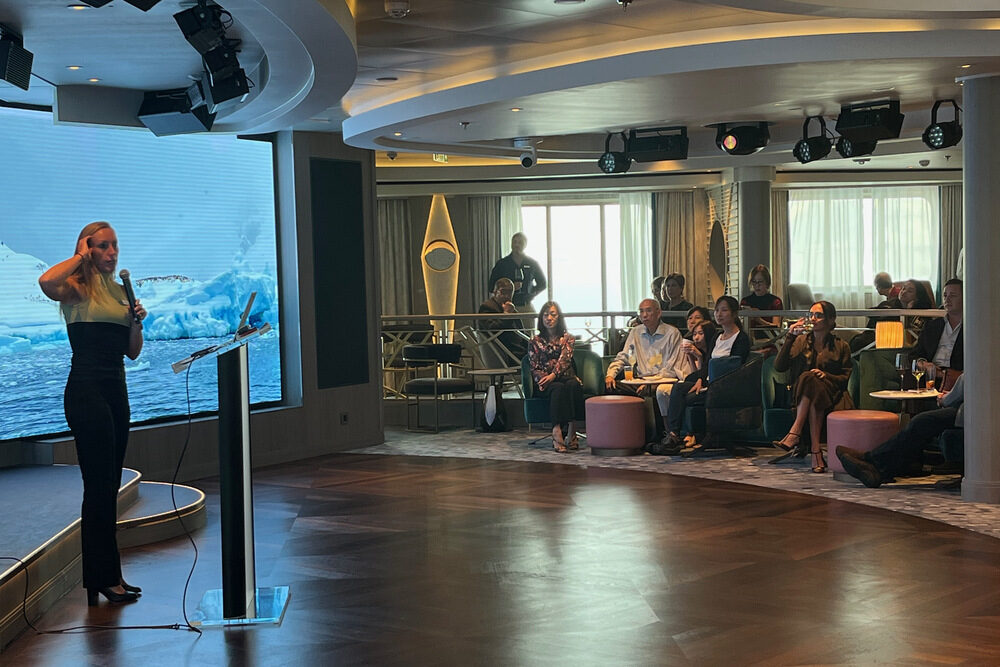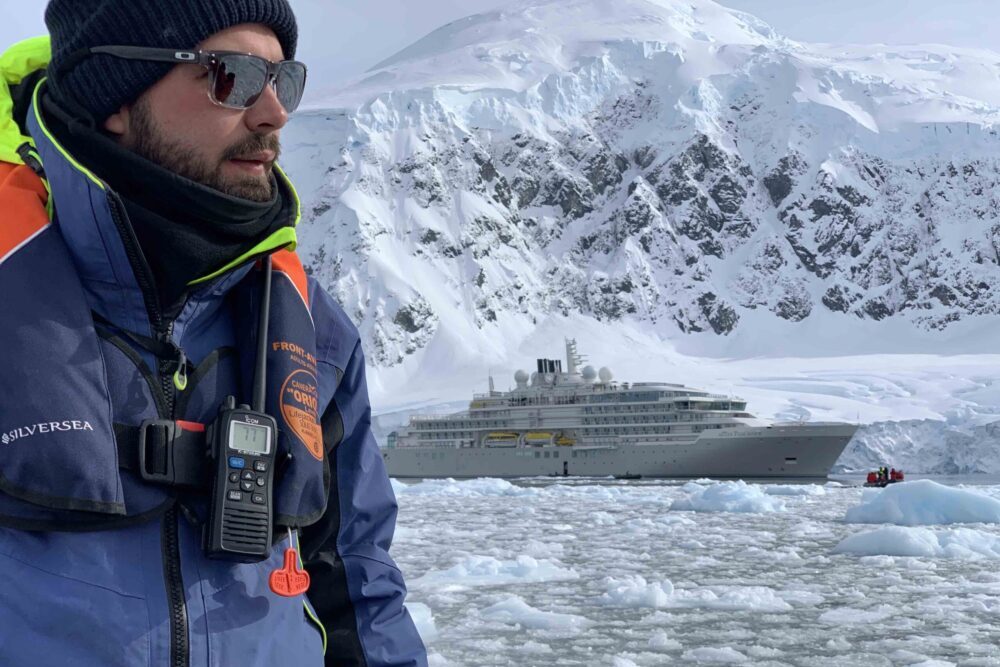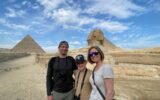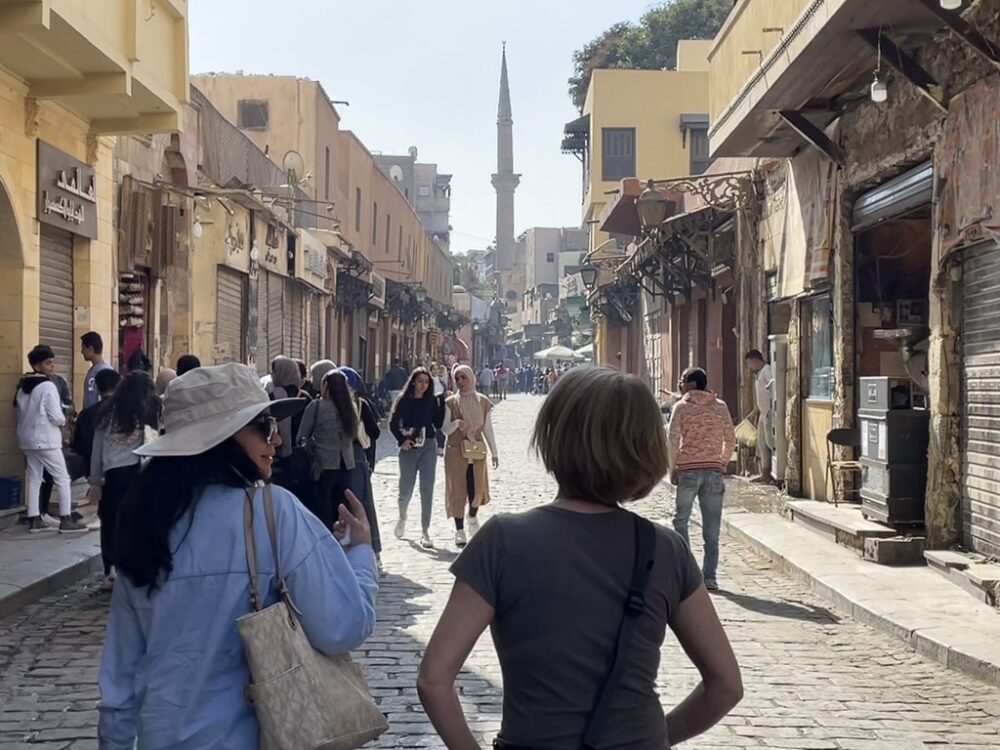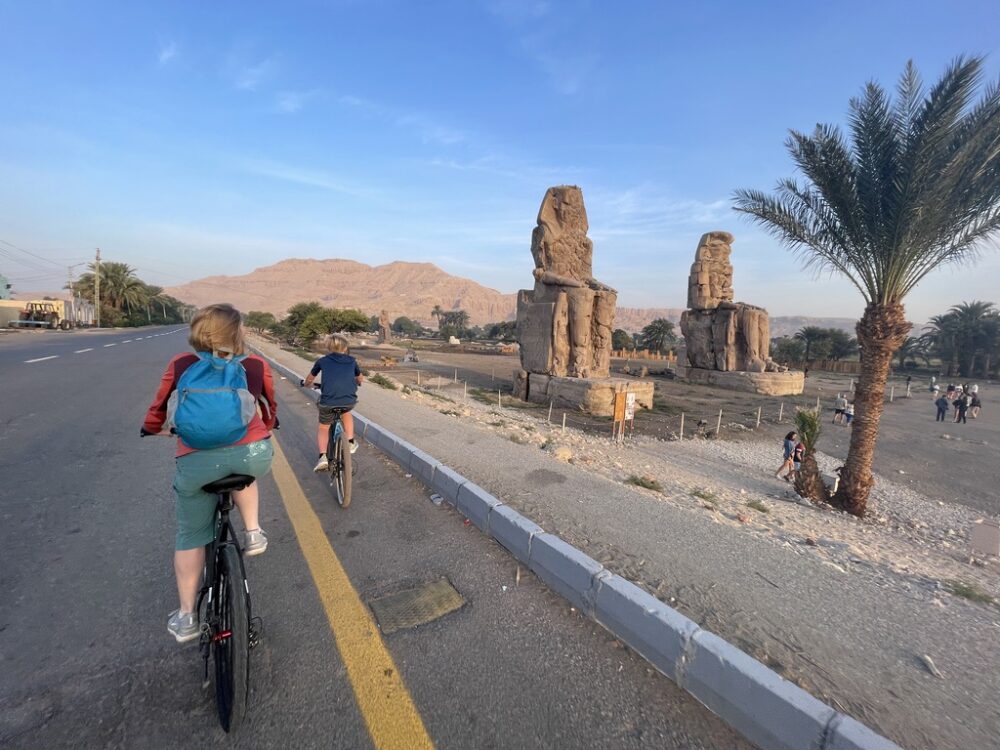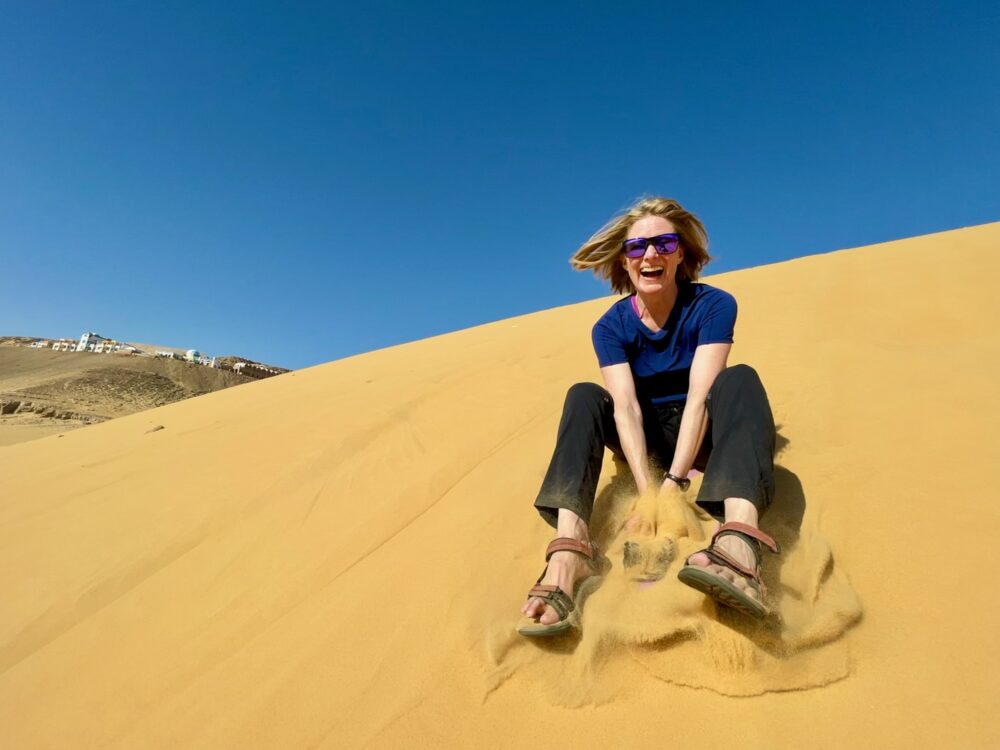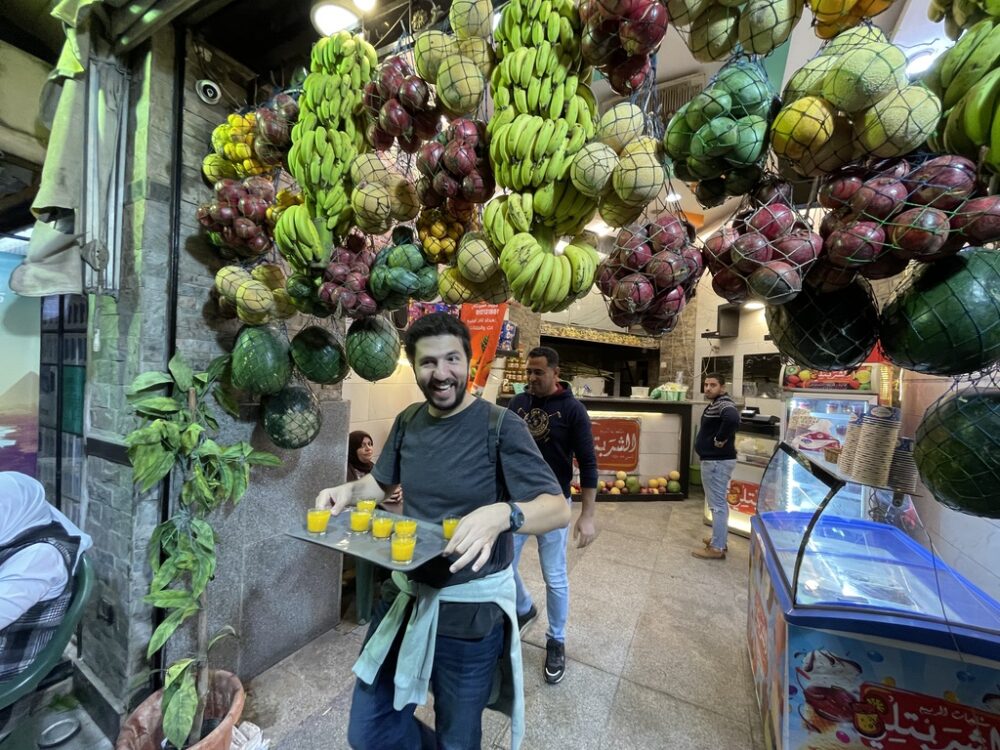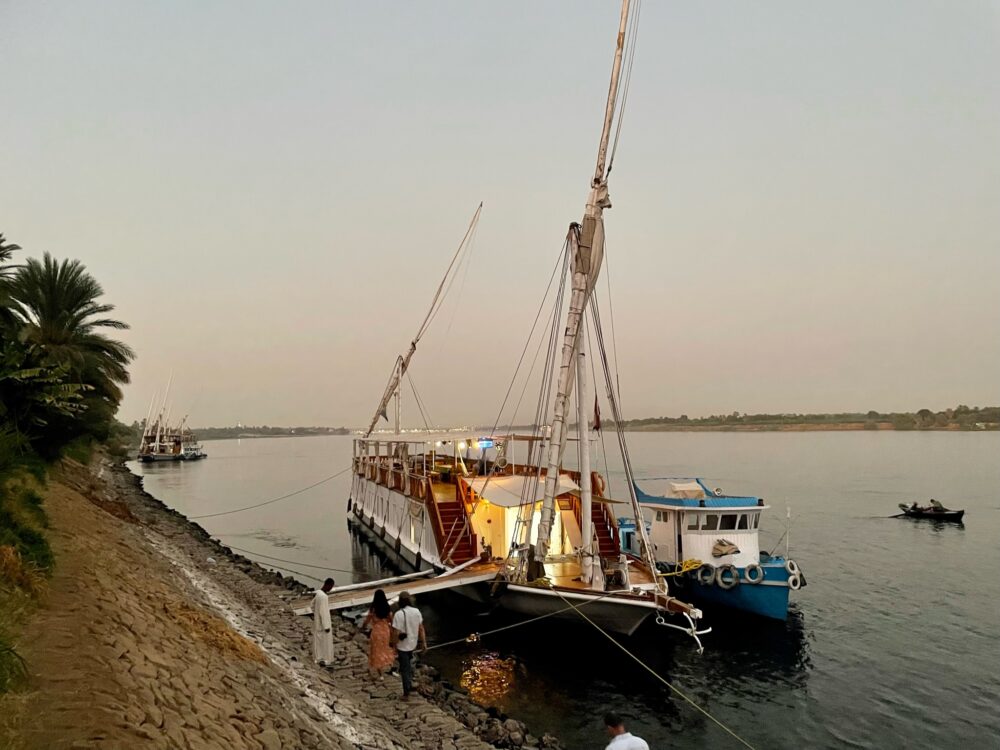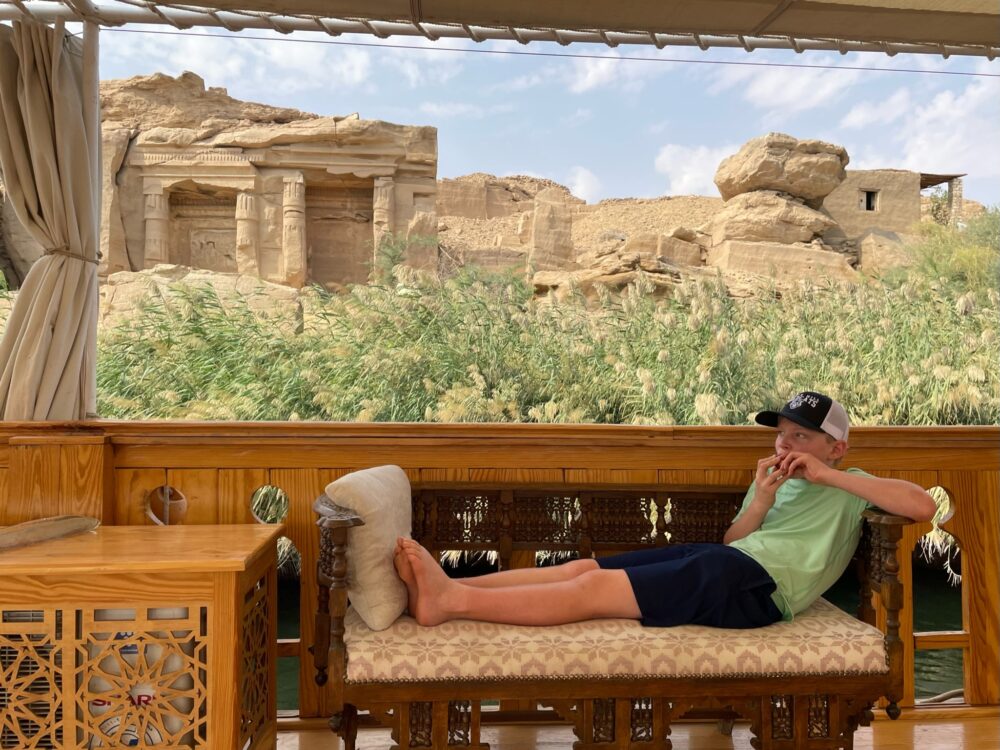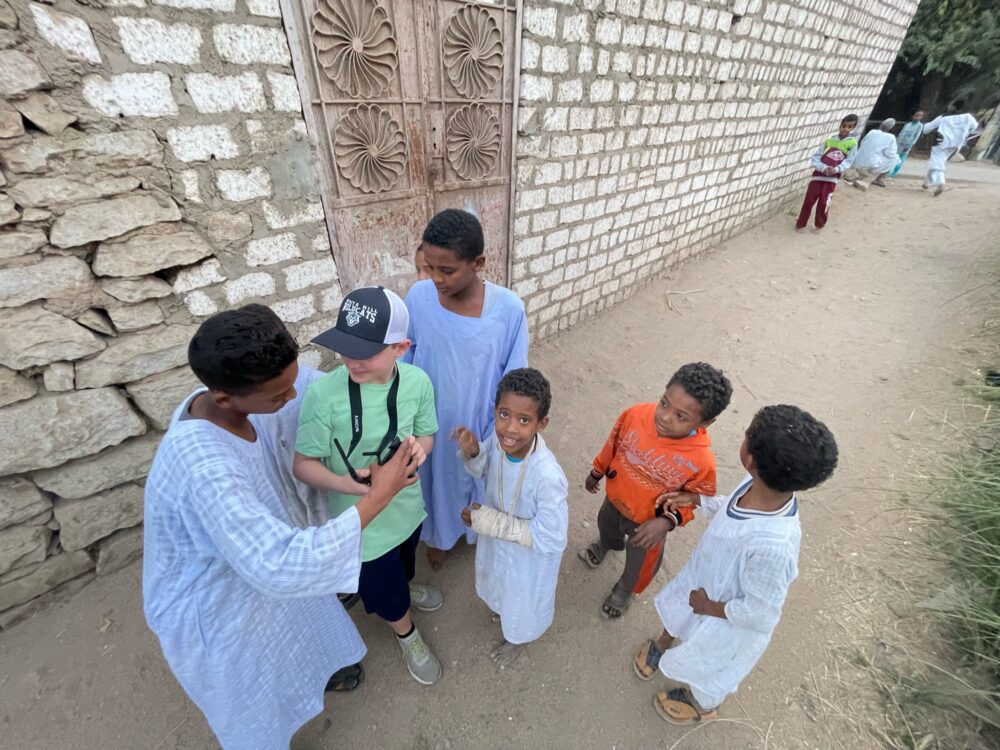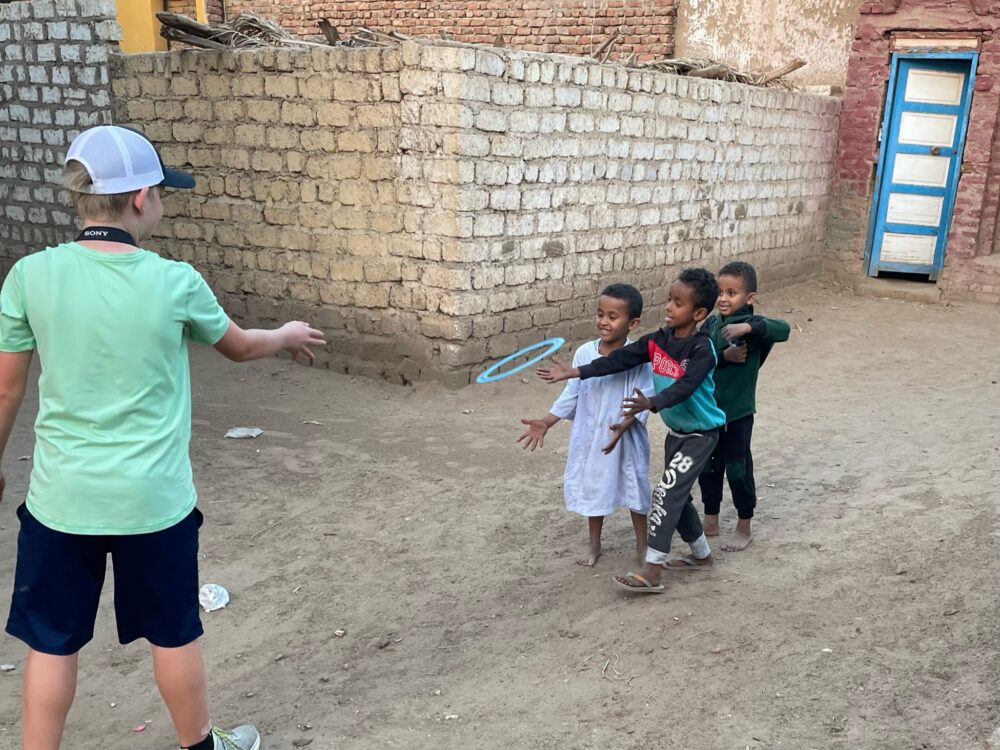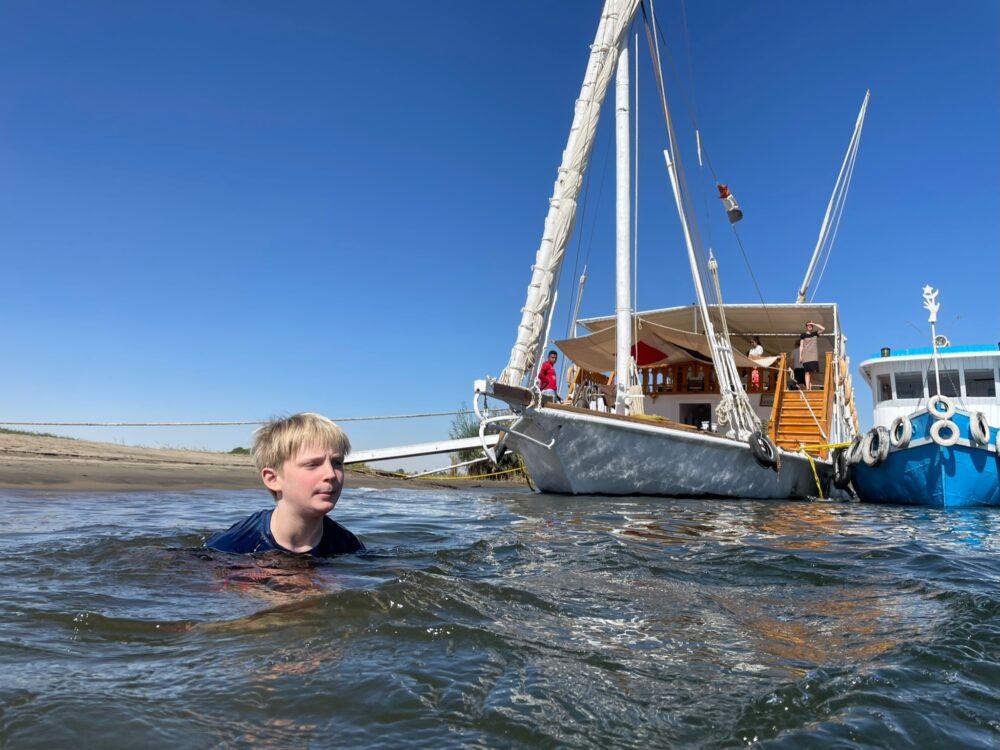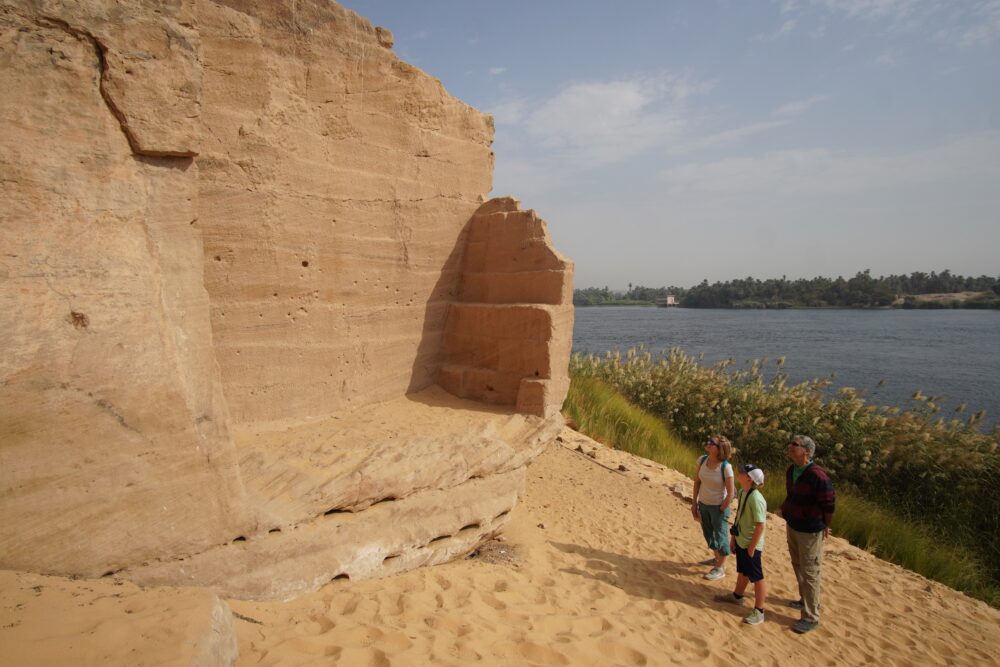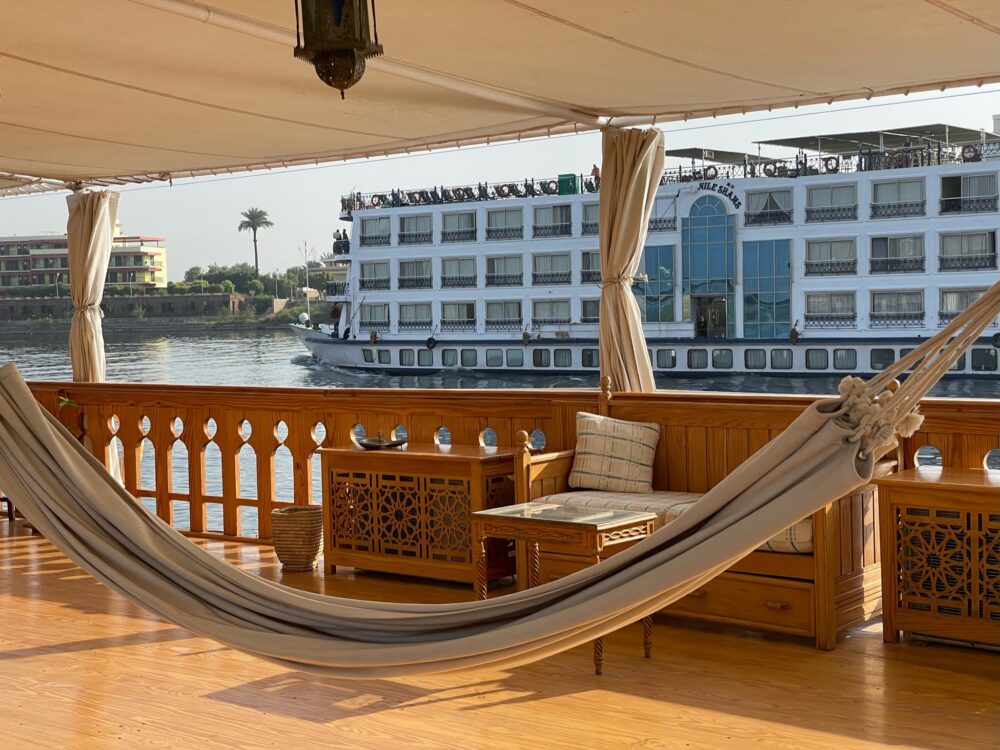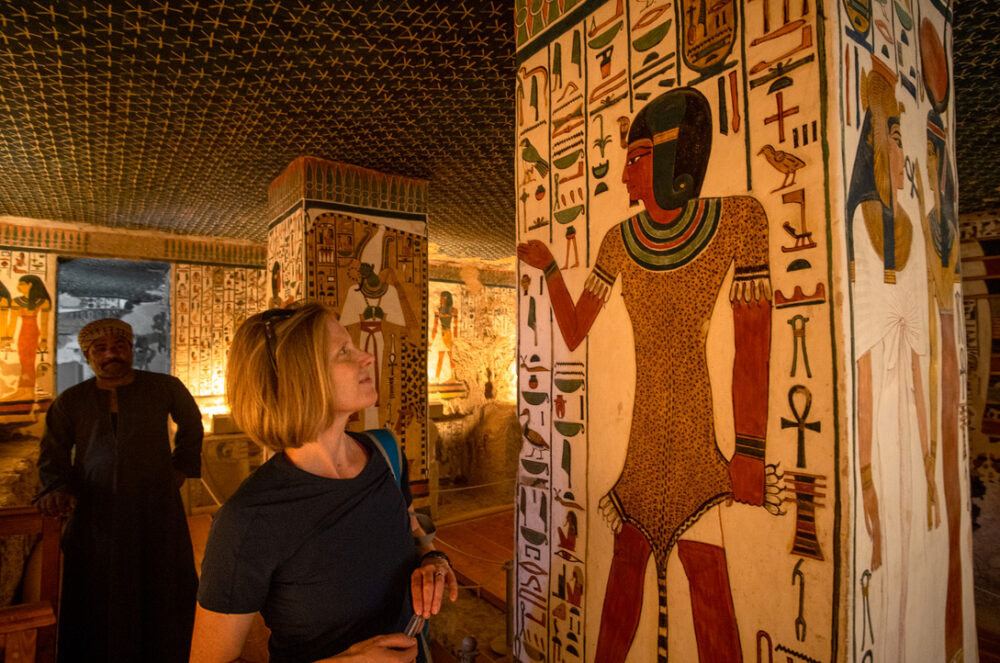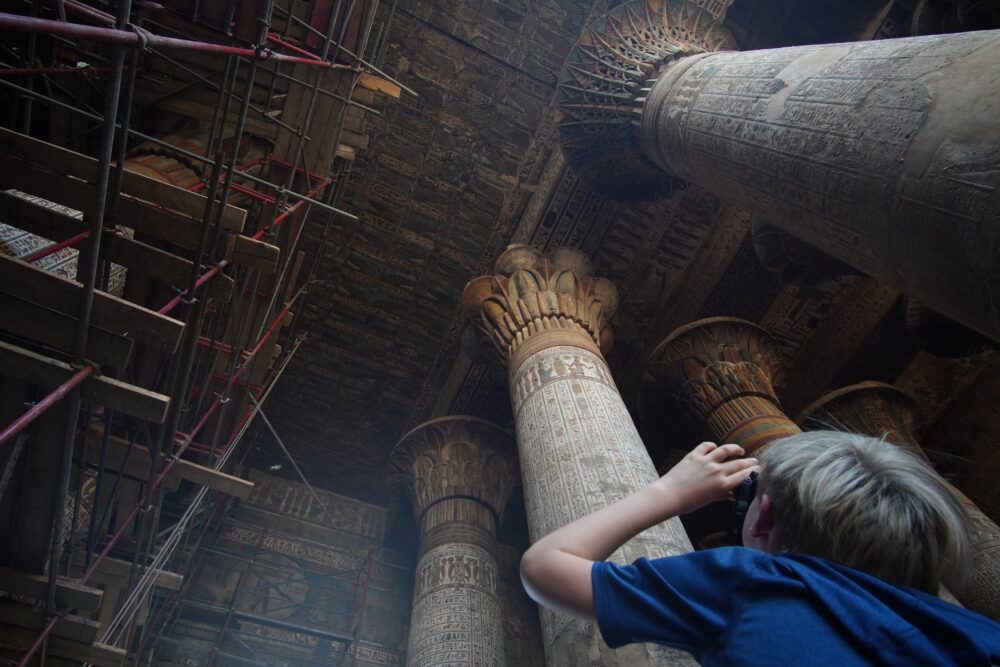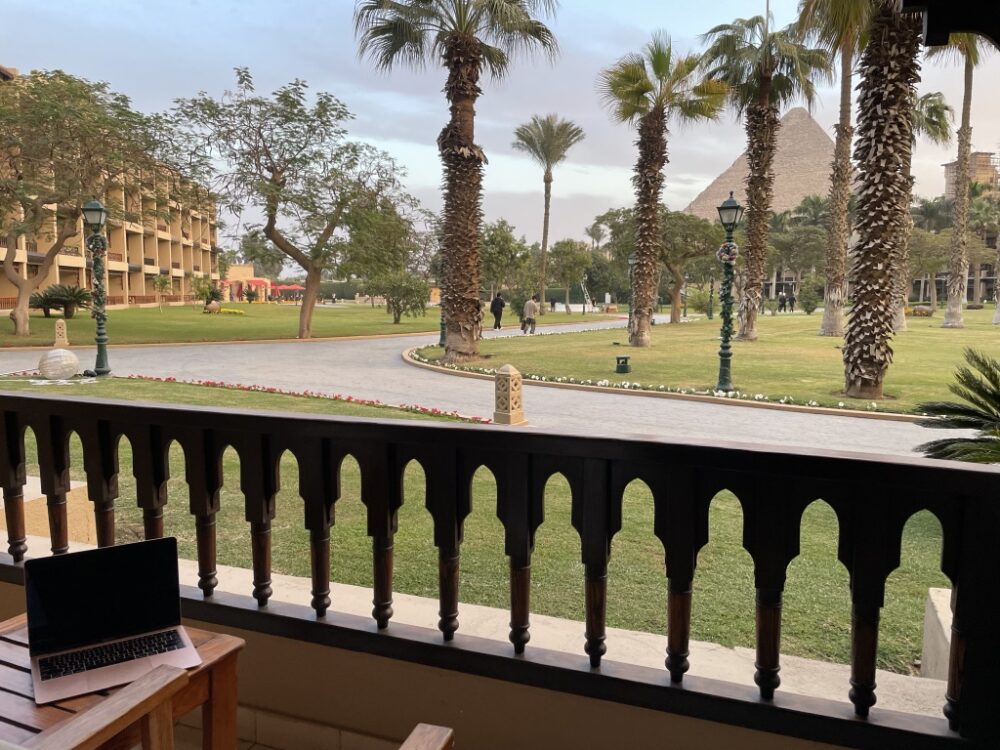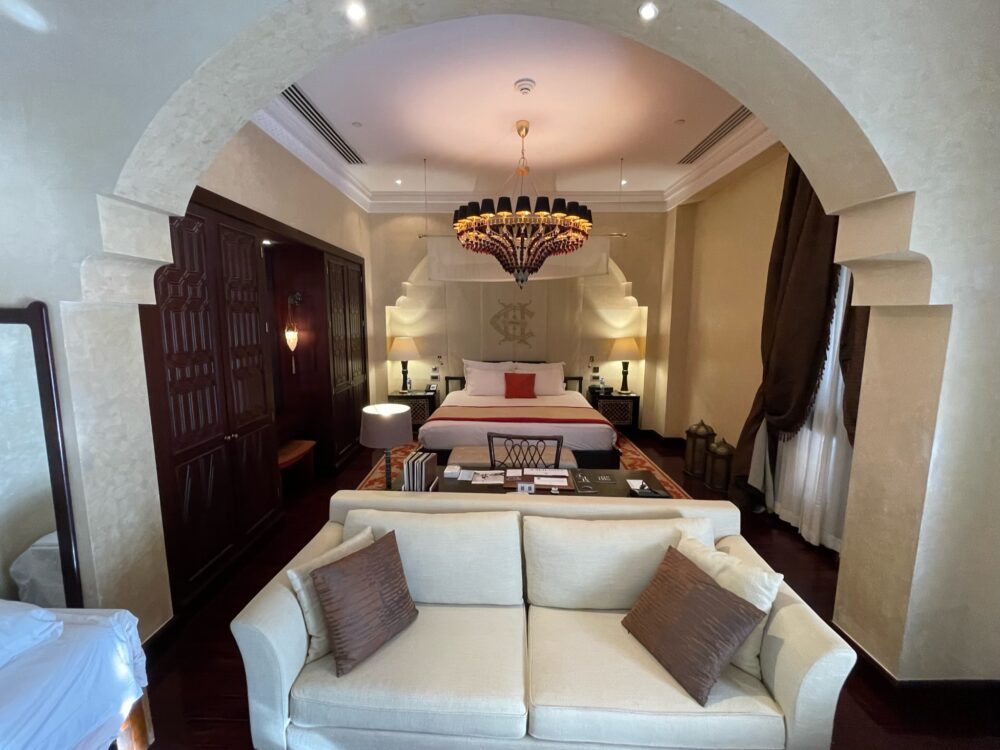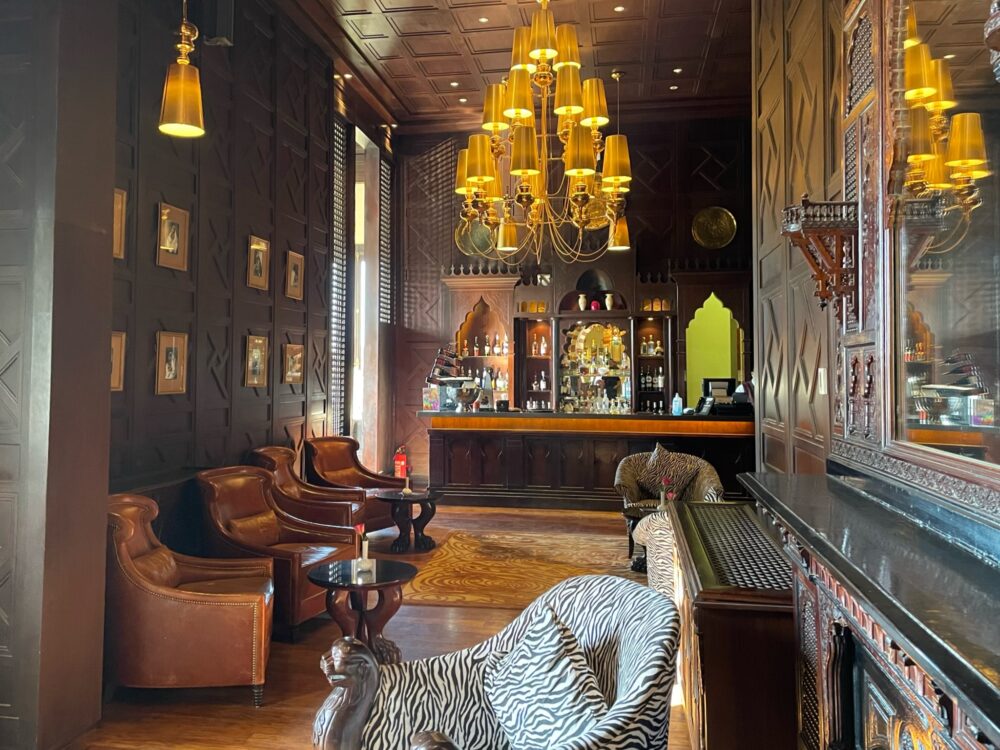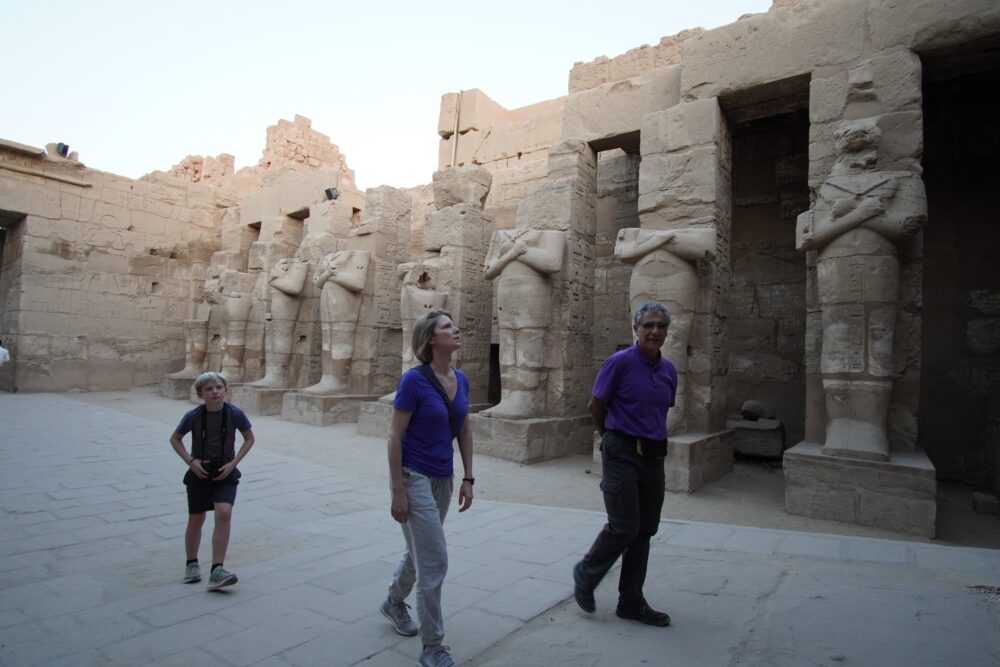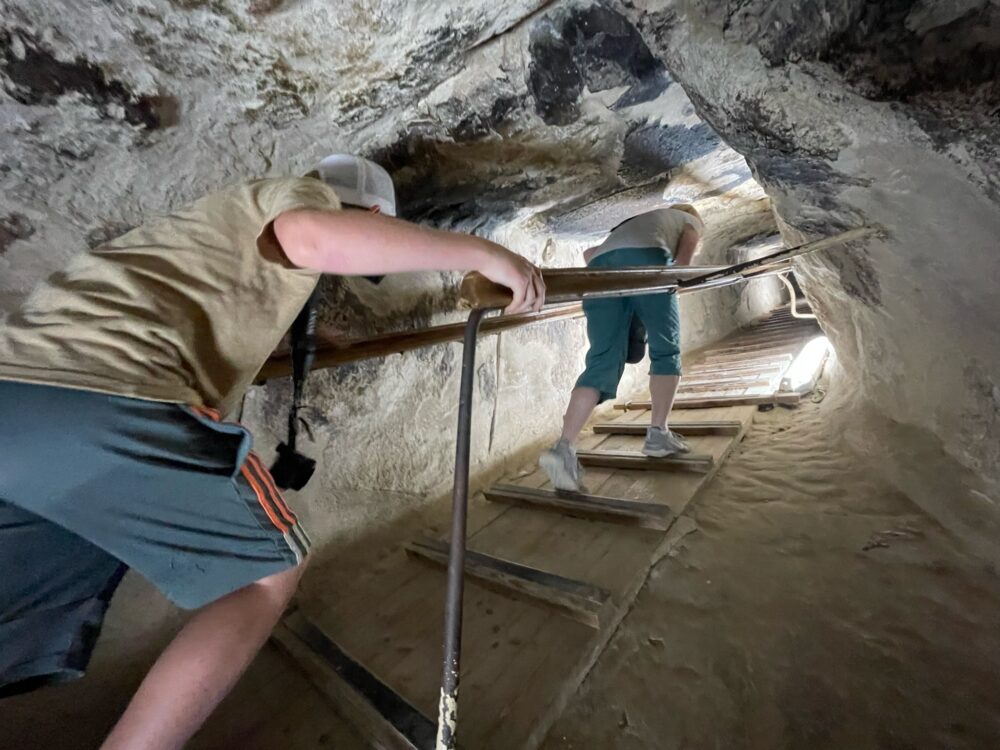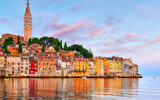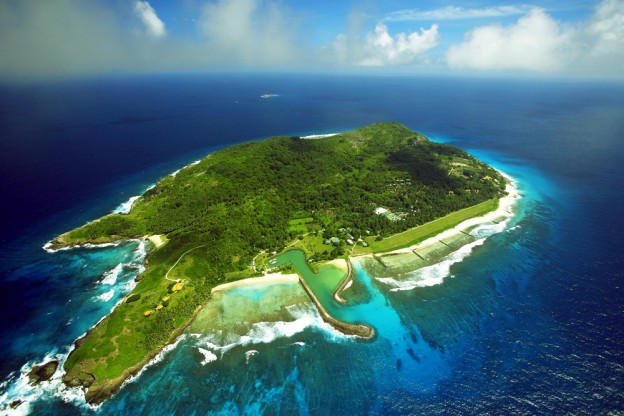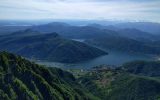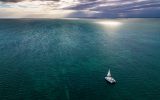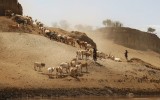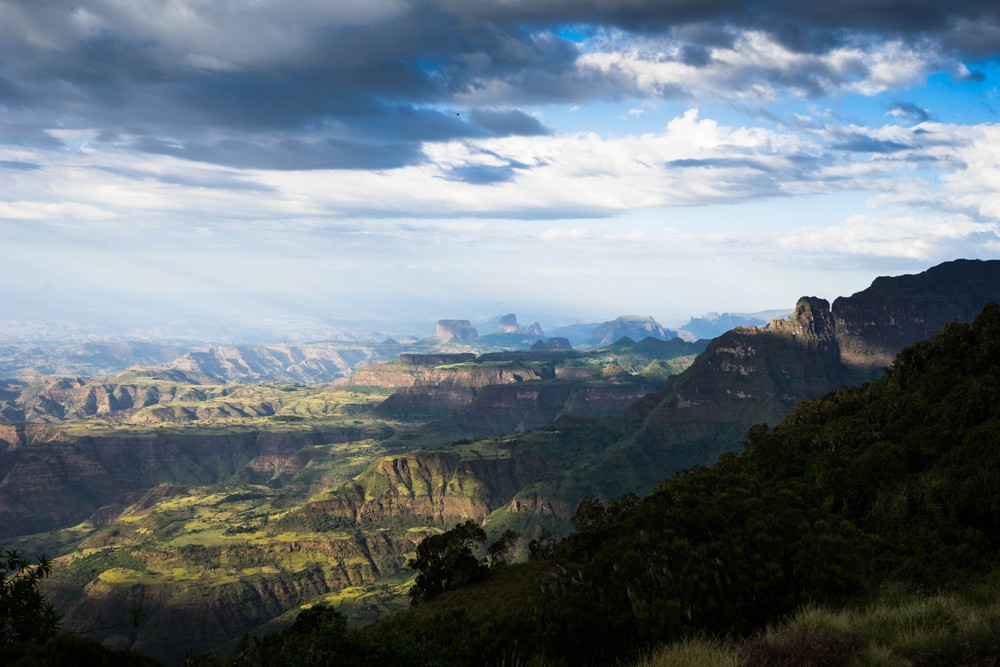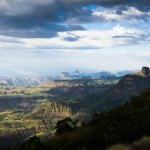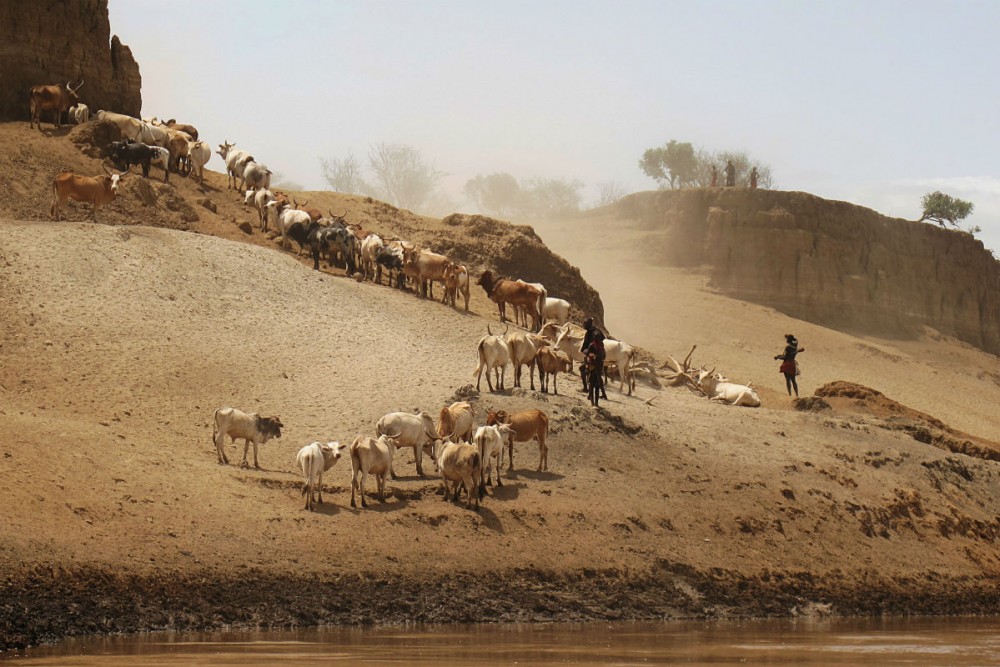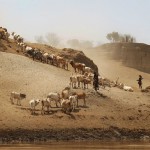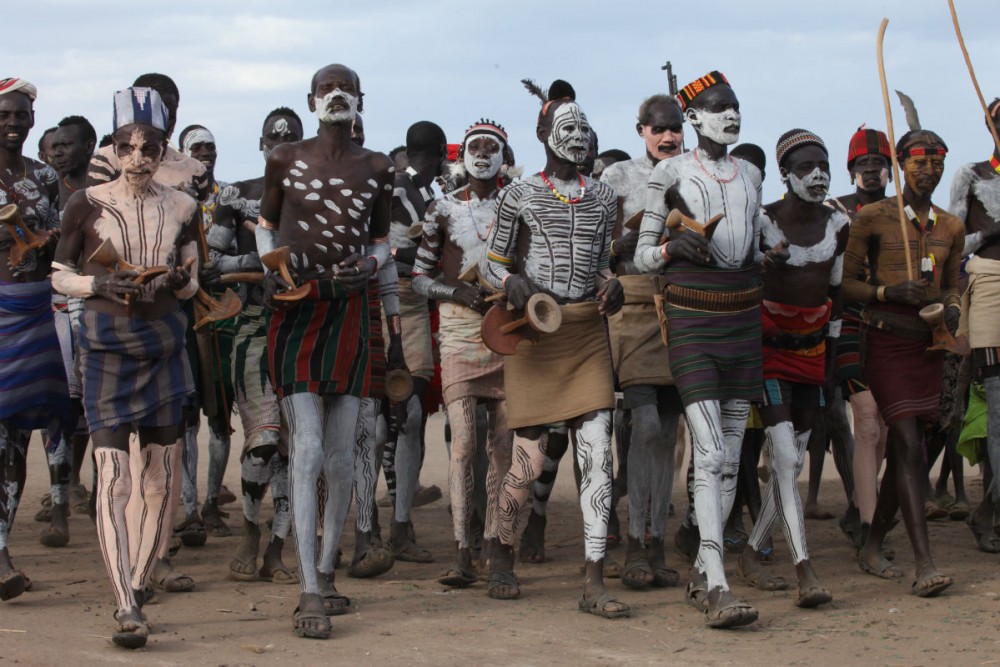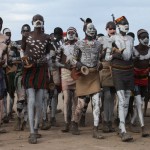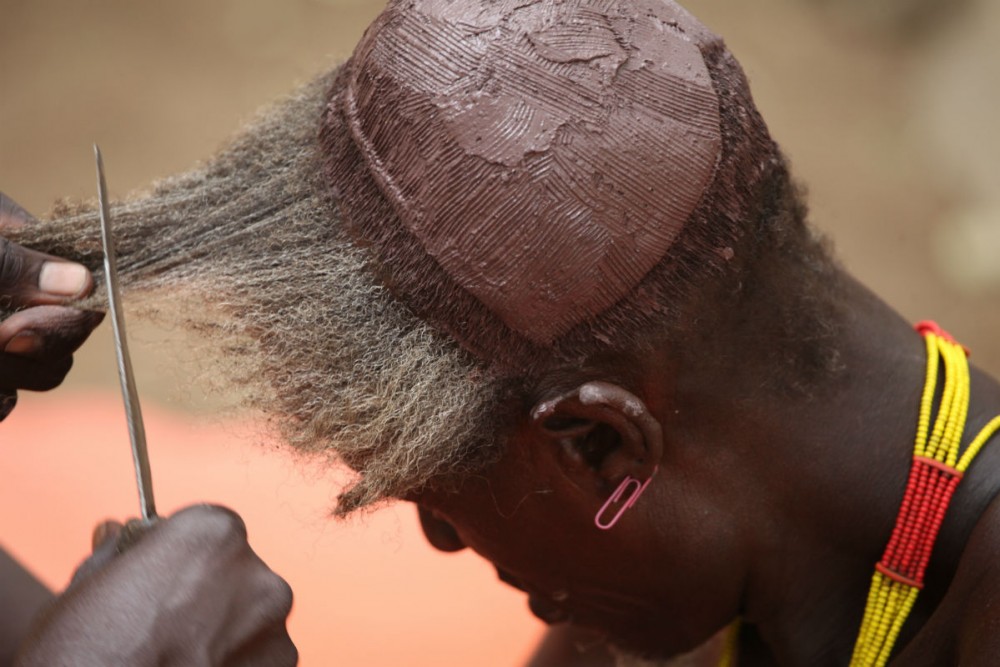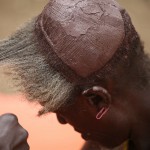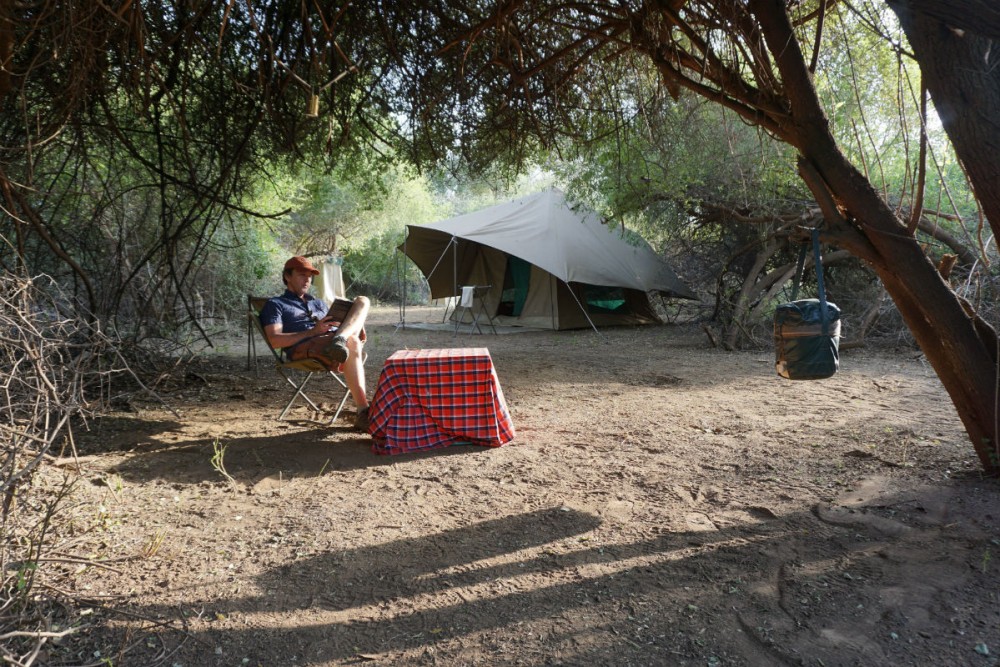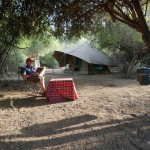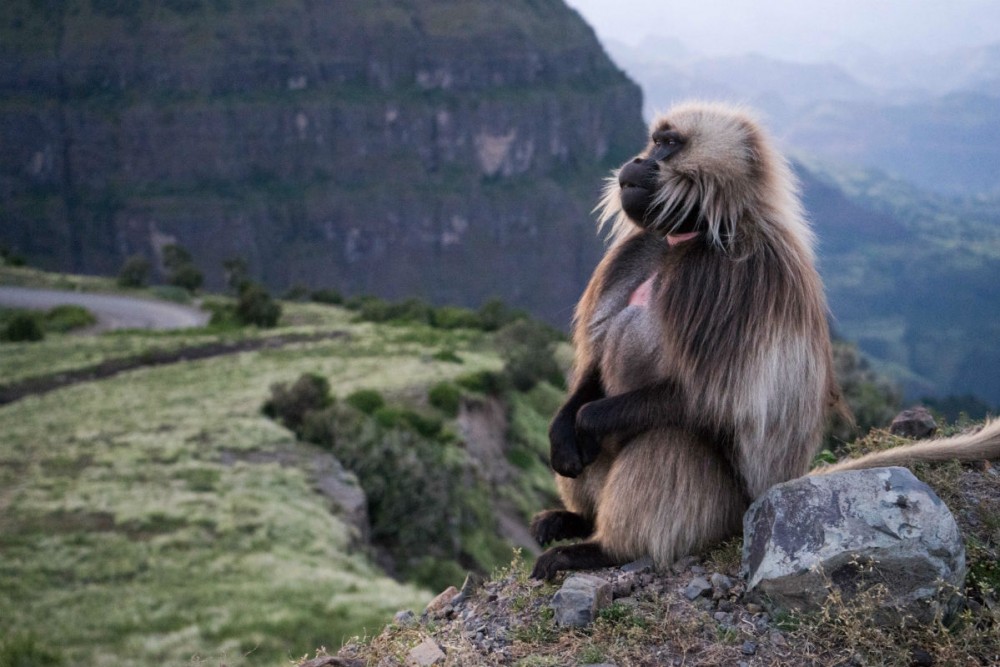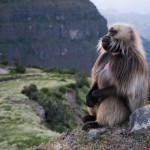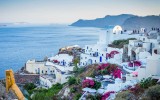There are a lot of people who play a role in making a WOW trip exceptional, but it’s the private local guides who are the linchpin. These on-the-ground fixers bring to life the words on the pages of your itinerary; pivot when weather, crowds, or unexpected events require a change of plans; and open a window to the local culture of the place you’re visiting. (No, I’m not talking about the tour guides you see holding flags and wielding microphones to keep a large group of travelers in line with their scripted dialogue!)
People who think that experienced travelers don’t need a local guide are doing themselves a disservice: It’s only from guides that I’ve learned about a million things in my travels—from the right way to drink mate in Chile to wedding customs in Egypt to reading fortune sticks in Laos (that’s my Laotian private guide, above, showing me around the temple at Vat Phou). My favorite moments with a guide usually happen in the interstitials—say, a conversation about family dynamics or pop culture that transpires while driving between sights or over a meal.
It’s not by chance that the local trip-planning experts on Wendy’s WOW List work with the best guides in the business; each expert has spent considerable time testing—and continually training—local guides in their destination. When they match you to the right guide based on your interest in Portuguese wine or your kid’s fascination with Greek mythology, the result can be magical. But don’t take my word for it: Check out the reviews below from your fellow travelers about their favorite private guides.
Italy: “We truly felt we had the best guides possible in each city…”

Sarah Cohen with her husband and their guide, Alvise, in Venice.
“In addition to Jennifer’s trip planning, the level of guides she used was phenomenal. We had Alvise in Venice who spent the day with us on a land-and-sea tour of Venice and gave us endless suggestions for shopping and sightseeing on our own.
In Florence we had Veronica as our guide. Veronica has a degree in art history, and it felt like we were students in her class as she shared her wealth of knowledge with us. We could’ve listened to her for hours. Florence obviously has ENDLESS treasures to share. Veronica took us to trusted leather makers and jewelers with handmade craftsmanship and honest pricing. She also gave us her cell number to ask other questions while we were in Florence.
Finally, we had Salvatore as our guide in Rome. We did the Ancient Rome Experience and the Vatican tour with him. Salvatore was very knowledgeable and kept a perfect pace for us. He offered to extend our tours to other areas he wanted us to see in Rome. It was above and beyond his job. He also gave us wonderful advice about places to eat lunch and other areas of the city to visit on our own.
All three guides spoke excellent English and were the top guides in the city. It was surprising they all knew each other and spoke highly of Jennifer and Wendy Perrin. We truly felt we had the best guides possible in each city.” —Sarah Cohen
Read more reviews of Italy trips. To get your own WOW trip, start with our trip questionnaire, reached via the black button below.
Peru: “An accomplished photographer who identified some fantastic photo ops for us that resulted in many keepers…”
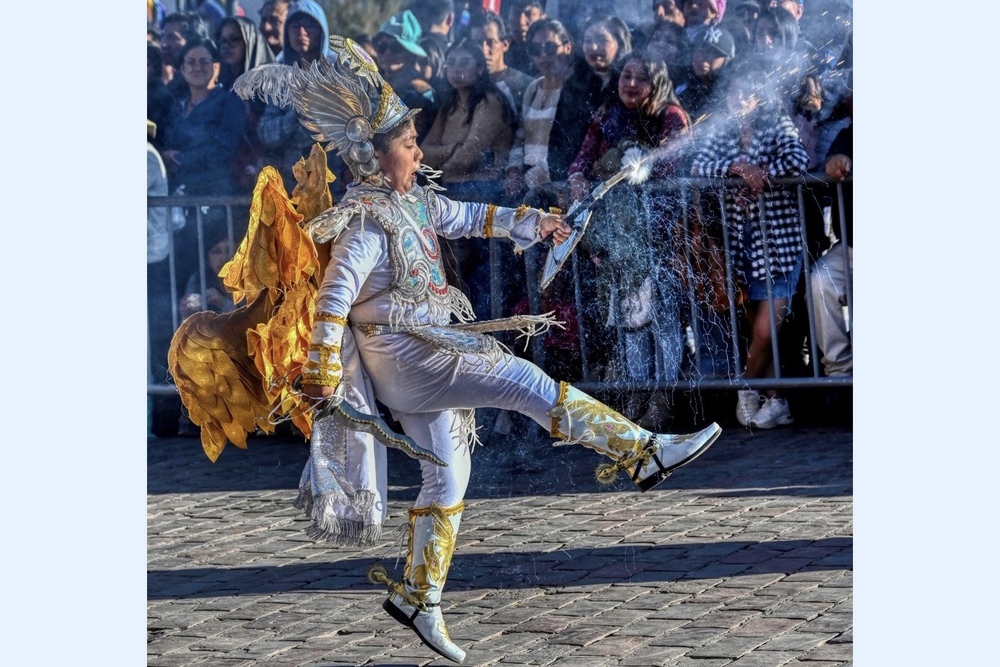
A boy dressed as an angel spouting fire at the parade in Cusco, Peru. Photo: Traveler Tim Triche
“Despite a disastrous beginning due to airline travel delays and cancelled flights, Marisol’s team rose to the occasion and successfully rearranged our itinerary so that, despite over two lost days of travel, we were nonetheless able to do almost everything that was originally scheduled.
Our guides were absolutely top-notch. Claudio accompanied us for most of the trip and was the consummate travel guide—knowledgeable, engaging, experienced, and a truly nice guy. And, an accomplished photographer who identified some fantastic photo ops for us that resulted in many keepers that will enable us to remember this trip for years.
I have done photography as a serious hobby for decades, and another shout-out to Adriana, the photographer who took us around Cusco at the end of our trip. I learned a great deal from her and took some creative photos that would otherwise never have occurred to me.” —Dr. Tim Triche
Read more reviews of Peru trips. To get your own WOW trip, start with our trip questionnaire, reached via the black button below.
Disney World: “Water, snacks, ice cream magically appeared, and our wonderful guide would go on the rides with one of the boys if my husband or I didn’t want to…”

Happily Ever After fireworks at Disney World. Photo: Disney
“There were seven of us: me, my husband, my son, his wife, and our three grandsons, ages 4 to 7. Our planner listened carefully about the experience we were looking for. By far the best recommendation and explanation they gave us was about the Disney VIP Guide. While it is very pricey, it made the difference in the trip. We planned on visiting the parks three days of our week-long trip and used the guide for each park day. No lines, no trying to figure out the Lightning Lane passes…. Water, snacks, ice cream magically appeared, and our wonderful guide would go on the rides with one of the boys if my husband or I didn’t want to. We were able to go on every ride we wanted to (some twice) in the course of three days. We got the Park Hopper and, because we were being transferred in their van, there was no time wasted changing parks. We all felt very spoiled!!” —Randi Zoot
Read more reviews of Disney World trips. To get your own WOW trip, start with our trip questionnaire, reached via the black button below.
Ireland: “When we parted company, I felt that we were saying goodbye to a brother. Brendan is smart, gracious, well-prepared, discreet, funny, full of stories…”
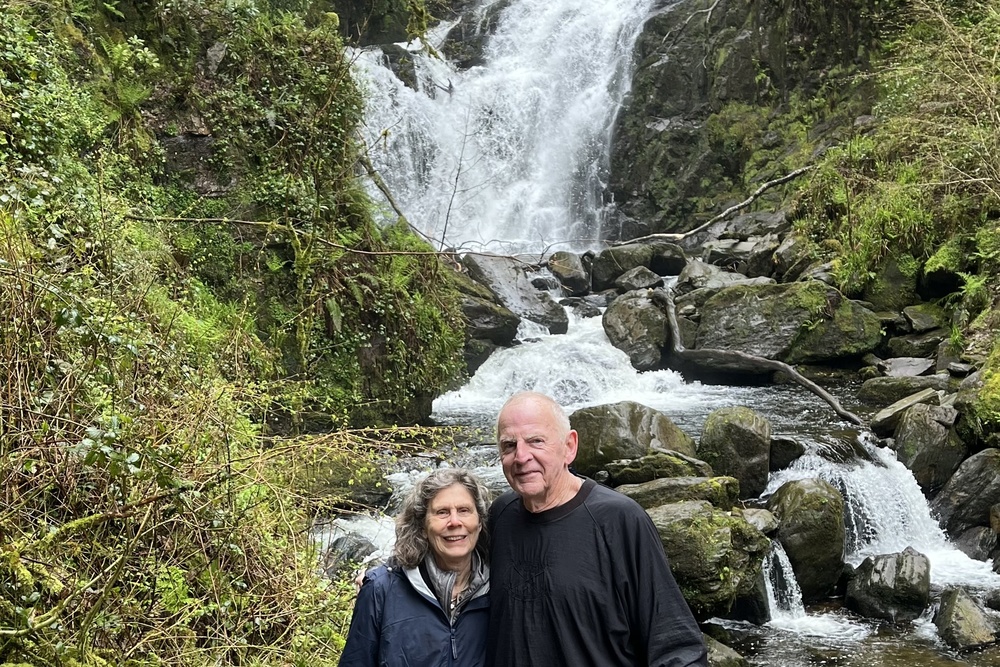
Sheila Morse and husband Dick Smith at Killarney National Park’s Torc Waterfall.
“My initial approach was to downplay the importance of nice hotels, as we intended to spend so little time in our rooms. Thank goodness Jonathan convinced us otherwise. Each of the three hotels reserved for us were not just great places to sleep. The ambiance, breakfasts, locations, special welcomes in each room, staff—all were superb and much appreciated after a full day of exploring and learning.
- Windows in our room in the Great Southern Killarney hotel opened onto an inner garden. We thoroughly enjoyed an Irish whisky tasting one evening after dinner.
- Mount Juliet near Kilkenny was beautiful! Our ‘windows’ were doors opening into beautiful green spaces. It was lovely to have a delicious cake and local honey waiting for us in the room!
- The Dylan Hotel in Dublin was extraordinary! Again, superb breakfasts and drinks on the house one evening. It was within walking distance of every place we wanted to see.
We had naively thought that it was possible to drive far greater distances than the itinerary we finally settled on. Again, Jonathan’s gentle guidance proved wise. We traveled from Shannon to Killarney and ventured out from there for three days, then to Kilkenny for two days, and on to Dublin for three. That, in fact, was a lot to take in.
Weather was the only thing that didn’t synch up with all these extraordinary arrangements. We experienced rainy, cold, blustery winds, and moments of sunshine. Nevertheless, we thoroughly enjoyed ourselves! (See wet slickers and cold noses in the photo!)
Brendan Glynn was our driver/guide for all but Dublin. He met us at Shannon and spent five full days with us. When we parted company, I felt that we were saying goodbye to a brother. Brendan is smart, gracious, well-prepared, discreet, funny, full of stories, and has a vast store of knowledge about everything we were seeing. He’s a fabulous driver. He provided valuable and entirely reliable recommendations throughout our stay. I lost my debit card and could not make satisfactory arrangements to get cash. Brendan allowed me to transfer funds from my bank to his and, in full faith that the transfer would be executed satisfactorily, advanced me Euros.
Brendan took us to Dingle Crystal, a small, seemingly out-of-the-way artisan craft shop where we saw some of the most beautiful crystal designs we’ve ever seen. Despite the fact that this place seems to be on at least a few tour guides’ itineraries, we were made to feel uniquely welcome by Sean Daly, the owner, and his sons. We spent time in the glass cutting room, getting a glimpse of how they ply their craft, and my husband purchased two beautiful whisky-tasting glasses.
During our time in Kilkenny, Brendan was able to arrange with the owner of Jerpoint Park to open up weeks in advance of her scheduled opening date. Maeve gave us a private, guided tour of the Lost Town of Newtown Jerpoint, a 12th-century settlement that she and her husband found was on land they bought to farm and which they excavated and reclaimed, inch by inch. We learned so much about the time, the confluence of events and landscape, and the special import of that particular location. This particular visit was a high point of our eight days in Ireland!
The drives and views were incredible, all day every day!” —Sheila Morse
Read more reviews of Ireland trips. To get your own WOW trip, start with our trip questionnaire, reached via the black button below.
Morocco: “With Jamal and Majid at our sides, it felt like we were traveling with friends we had known for a lifetime…”
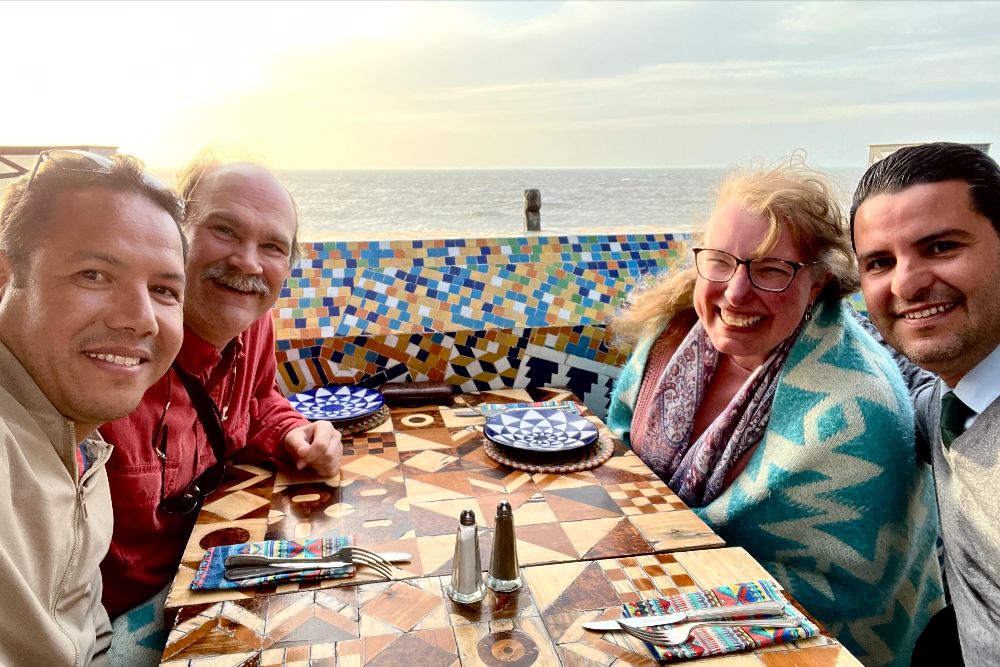
Craig and Stephanie Smith on the rooftop terrace of Essaouira’s Salut Maroc with private guide Jamal and driver Majid.
“We just returned from an amazing two weeks in Morocco. We told Radia that what was most important to us was to have a stellar guide. We also told her that we have a strong interest in music and would like to incorporate learning about Gnawa music in some way. And we told her that our hotel preference was to stay in riads instead of international chain hotels.
From the moment we were met at the Casablanca airport by our private guide Jamal and private driver Majid, we knew that we were in for an incredible trip. They were both so hospitable! Jamal was incredibly knowledgeable about the culture and history of his country. He was very attentive to all of our needs, and he made us laugh a lot. He made sure that we saw everything on the itinerary and then some.
Majid drove us many miles in a huge loop, from Casablanca to Volubilis, to Fes, to Ifrane, to Merzouga, to Todra Valley, to Dades Gorge, to Skoura, to Marrakech, to Imlil, to Essaouira, and back to Marrakech. We always felt very safe with him behind the wheel, and he had a great sense of humor.
We stayed in beautiful riads with a very personal touch and enjoyed all kinds of delicious food. In addition to seeing many historic sites (mosques, synagogues, palaces, medinas, souks, tanneries), we also had adventures. We went for a camel ride and rode ATVs in the desert. We went for a hot-air balloon ride outside of Marrakech. We went for a hike in the High Atlas Mountains from Imlil to Armed. One of our favorite activities was the sunset motorcycle sidecar tour of Marrakech, suggested by Radia. We felt like we were in a movie, riding through the Palmerie and the medina in comfortable, roomy, sidecars. A definite must-do!
Another highlight was an impromptu visit to the Todra Valley for lunch at Jamal’s family’s home. We were so honored and humbled to be invited into their home for lively conversation and a delicious lunch. And, to satisfy our musical interest, Radia organized a thoroughly enjoyable private Gnawa music workshop with master musician Najib Soudani in Essaouira.
With Jamal and Majid at our sides, it felt like we were traveling with friends we had known for a lifetime. The itinerary was wonderful, but they made the trip into an experience that we will cherish forever.” —Stephanie and Craig Smith
Read more reviews of Morocco trips. To get your own WOW trip, start with our trip questionnaire, reached via the black button below.
Provence: “Our guide in Provence was a gem—my whole family loved him and both his hilarious stories and historic insights…”
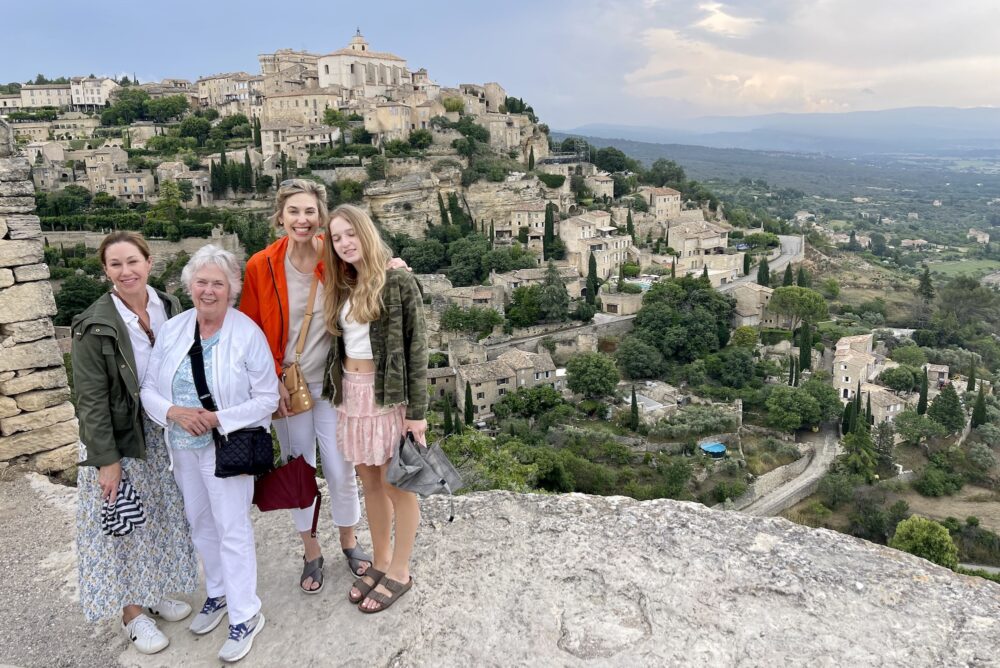
Virginia Socolof overlooking the French village of Gordes with three generations of women in her family.
“I recently returned from a FABULOUS trip to France with my mother, sister, and 17-year-old daughter. This was a real bucket list item for my mother—she is 80 and wanted to see both Monet’s gardens at Giverny and Provence. Philip and his team planned and executed a wonderful itinerary that perfectly satisfied my mother’s wishes. From the moment we landed in Paris until the day we flew out of Marseille, the drivers, excursions, and hotels exceeded our expectations.
On the day we were going to Giverny ,our van had a flat tire in the middle of the countryside, and within 30 minutes my family was in an Uber called by our heroic guide Paul, headed to Giverny with our tickets and lunch reservation in hand. Paul had the tire repaired and met us after lunch for the rest of our trip to Auvers sur Oise, but we didn’t miss a thing. Giverny was the most eagerly anticipated moment of the trip for my mother, and what could have been a disappointing travel disaster is now one of our funniest trip memories, involving aggressive strawberry buyers and a tiny blue car.
Cedric, our guide in Provence, was a gem—my whole family loved him and both his hilarious stories and historic insights. The Hotel du Pigeonnet in Aix was so very lovely, and Philip’s team also provided us with some wonderful restaurant recommendations and reservations. I began the planning process for this trip with concerns about how we could manage an experience that would make all of us happy and be comfortable enough for my mother, but Philip and his team pulled it off.” —Virginia Socolof
Read more reviews of France trips. To get your own WOW trip, start with our trip questionnaire, reached via the black button below.
Romania: “With the help of our guide and driver, we were able to locate both the home of my grandparents and that of my grandfather’s sister!”
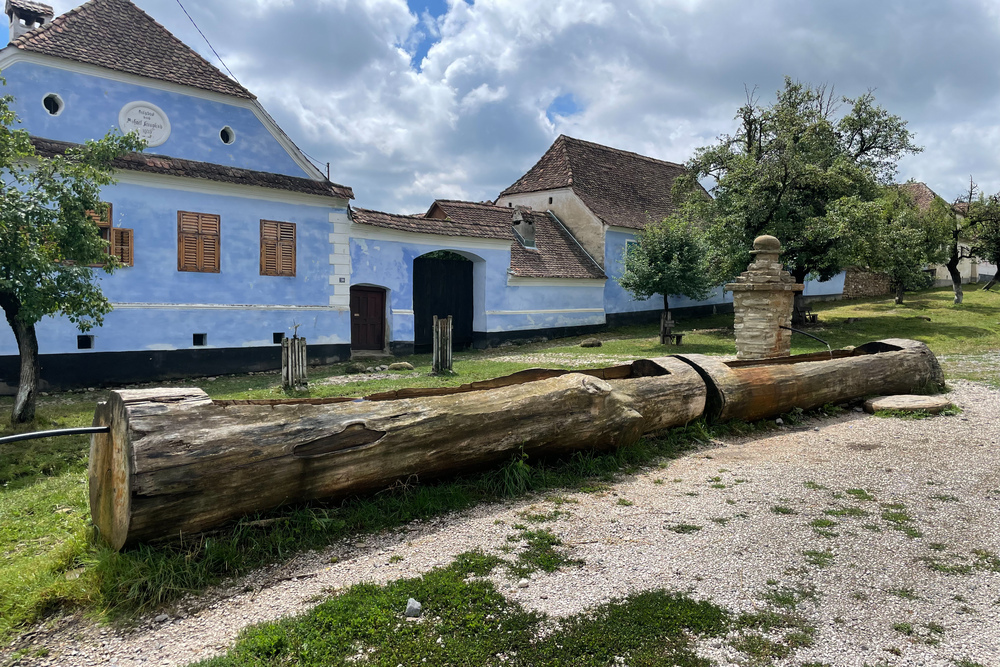
The quiet main street in Viscri, Transylvania. Photo: Tim Baker
“After years of genealogical research, my siblings and I planned a trip to those areas where our parental grandparents had roots. With Raluca’s expertise, an itinerary was developed that touched the many towns and villages where our grandparents and great-grandparents were born, lived, worked, and died.
Our first stop in Romania was Arad, and with the help of our guide and driver, we were able to locate both the home of my grandparents and that of my grandfather’s sister! Then a fabulous experience occurred. We went to the cemetery to look for my grandfather’s sister’s grave. Our guide, Andrei, was able to talk to the recordkeepers, and they identified the exact location of her grave! It was overgrown, and there was no marker, but it was the right place. Our family of four (all living siblings) brought flowers and candles. (Andrei educated us on the Romanian custom to bring candles and he took us to the marketplace to buy beautiful flowers.) It was a very moving experience for all of us. We had the site cleaned up, removing the overgrown weeds on top covering it. We knew that my grandfather’s sister died alone, her life forever altered by the arrival of communism.
A word about Andrei, our guide. He was wonderful. He laughed over the fact that two of the villages we were visiting, to his knowledge, neither tourists nor locals exactly visited them. ‘No one ever wants to come to these areas. You are the first!’ Andrei meant that comment as a joke, but the reality is that it was true. As a side note, Andrei had a wonderful sense of humor and not only were we learning as we traveled, but he also constantly made us laugh. This made our long vehicle rides traveling from site to site go amazingly fast. We traveled from one end of southern Romania to the other!
Our next incredible experience was in Petrosani and, specifically, Petrila. We had a 1930s picture of my grandfather and my father at a coal mine and wanted to replicate that picture. Alas, the now defunct coal mine was locked, and we could not access the site. There was, however, one man there, and Andrei went to see if we could gain access. While this individual did not have the authority to do so, there was to be a meeting of volunteers with a guest speaker, and if we wanted to wait, we might gain access. Sure enough, men started gathering there, and the head of this group and the guest speaker eventually arrived. They were astounded we had that picture and, of course, allowed us to take pictures there. We were then invited to visit the small museum in what was previously an office building, and the guest speaker insisted on giving us a personal tour. Amazing!
My great grandfather worked for the railroads so, again, Andrei was diligent in taking us to all the sites where my great grandfather had worked and most likely lived. My grandfather was born in one of those buildings!
With the visits to our ancestral sites finished, we then toured many beautiful parts of Transylvania, enjoying great food, amazing castles, and the charming towns of Sibiu, Viscri, and then Brasov on our way to Bucharest. Our long-awaited trip could not have been better.” —Victoria W. Jones
Read more reviews of Romania trips. To get your own WOW trip, start with our trip questionnaire, reached via the black button below.
Machu Picchu: “His English was impeccable, and his extensive network of contacts made it seem like he knew EVERYONE in Peru…”

The right guide means no waiting in lines at Machu Picchu. Photo: Brook Wilkinson
“We just returned from a fabulous 10-day trip to Peru. Allie helped us find probably the best guide in all of Peru! Our guide, Nick, met us in Cusco and was with our group of four the entire trip. His English was impeccable, and his extensive network of contacts made it seem like he knew EVERYONE in Peru, which became a running joke. However, it became central to the success and ease of our trip, as he networked us to the front of lines for access to everything (including the line for buses up and back from Machu Picchu). To Allie’s credit, she had just returned from a trip to Peru a month before we left, had Nick as a tour guide, and personally selected him to be the guide for our trip, for which we cannot thank her enough!” —Julie Olson
Read more reviews of Peru trips. To get your own WOW trip, start with our trip questionnaire, reached via the black button below.
Germany: “You couldn’t have a more caring or kinder person than Uli…”
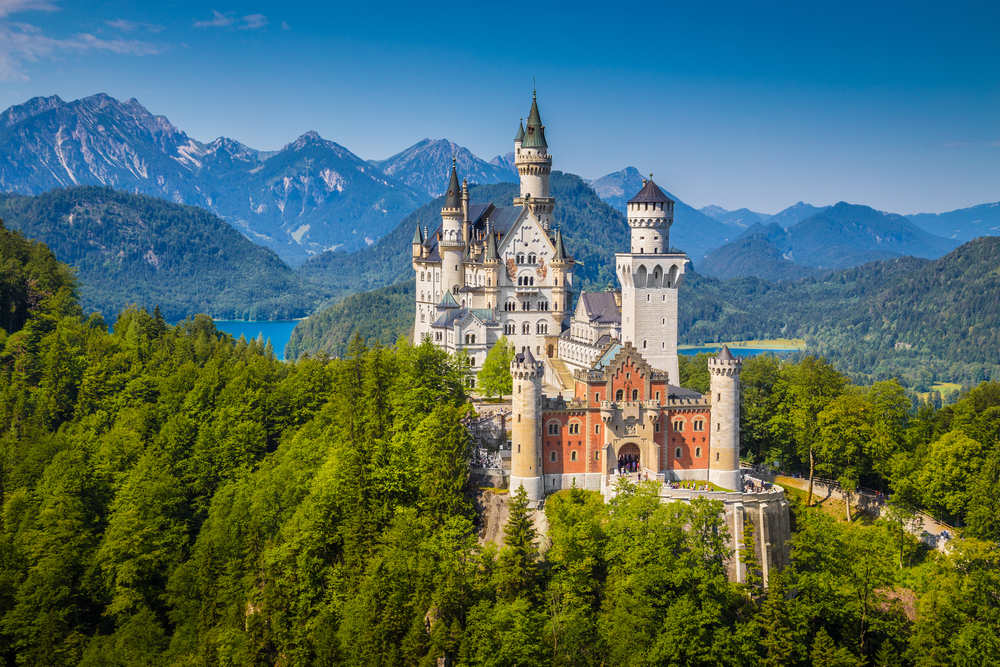
Neuschwanstein castle in Bavaria, Germany. Photo: Shutterstock
“We just returned home from a 16-day trip to Germany. The country is scenically gorgeous, the food is outstanding, as are the wines and beers, but the very best part of Germany are its people. The German people are polite, welcoming, and very helpful. They take pride in what they do, and in their country. It is sparkling clean and safe at all hours of the day and night. My husband and I saw so many young people out late at night having a wonderful time. Overall, it’s a country that has not forgotten its past, good and bad, and looks forward to the future with acceptance and love.
Our driver and guide, Ulrich, was absolutely amazing: an excellent driver, compassionate human being and a gentle giant of a man. I really messed up and left part of my CPAP equipment in the hotel we had last stayed at and did not realize it until I unpacked at the next destination, after we all had said good night to each other. When Uli found out, he drove back to the hotel while we were enjoying a leisurely dinner to retrieve it for me. A 4-hour back-and-forth drive after a day of touring and guiding us, just to make sure I had what I needed. You couldn’t have a more caring or kinder person than Uli.
We had an arrangement for us to visit Neuschwanstein Castle before it opened to the public. This involved pushing me in a wheelchair up a 20-degree incline of about 1,000 feet. Uli never complained or seemed to resent aiding me throughout the trip. Mr. Wonderful for sure!” —Lya Eisenberg
Read more reviews of Germany trips. To get your own WOW trip, start with our trip questionnaire, reached via the black button below.
Newfoundland: “We expected a city tour, but Mike gave us much more than that…”
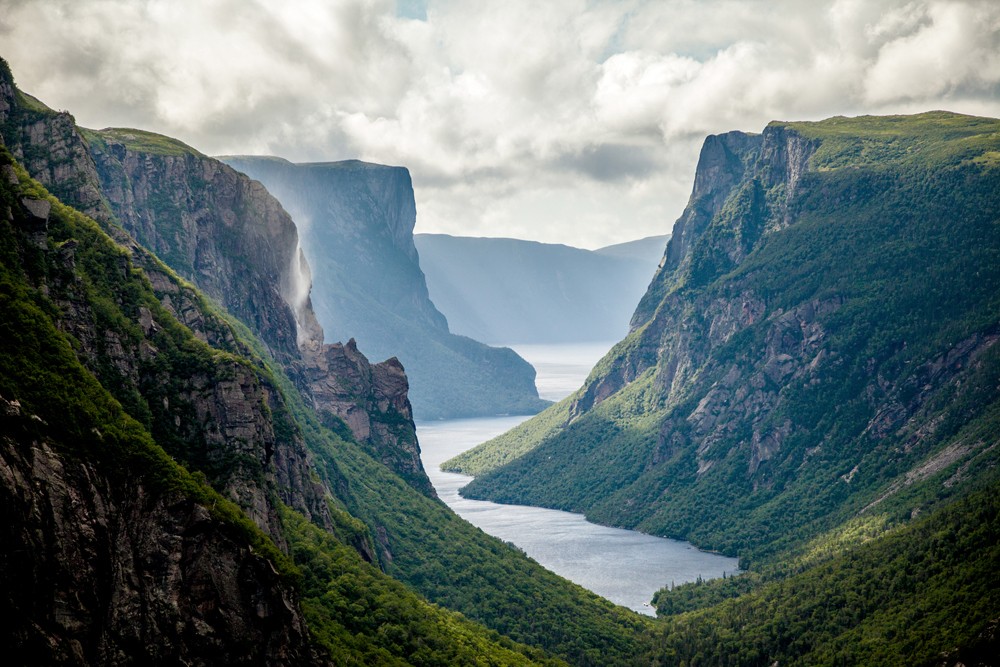
Western Brook Pond, a fjord in Newfoundland’s Gros Morne National Park. Photo: Maxxim Vacations
“Jill connected us with two local guides who were amazing. We learned so much from them. The first experience was with Mike Edmunds the day after we landed in St John’s. We expected a city tour, but Mike gave us much more than that: an introduction to the culture, the economy, and the ‘language’ of Newfoundland. This single experience set the context for our entire trip.
In Port Rexton a few days later, we had breakfast with Paul Dean, a geologist and former director of the Johnson Geo Center, followed by a guided hike of the Skerwink Trail. Imagine what an experience this was! Paul knows the geology—and the local plants, etc.—of Newfoundland and Labrador first-hand, and was extremely generous in sharing his knowledge with us.
There was so much to see and explore, our three weeks didn’t provide enough time. There are many small, local attractions that address the history, culture, and geology of the specific area that you are visiting.” —Don and Marie Osdale
Read more reviews of Atlantic Canada trips. To get your own WOW trip, start with our trip questionnaire, reached via the black button below.
Vietnam & Cambodia: “Our guides were fine with things changing on the fly, which is crucial when traveling with small children…”
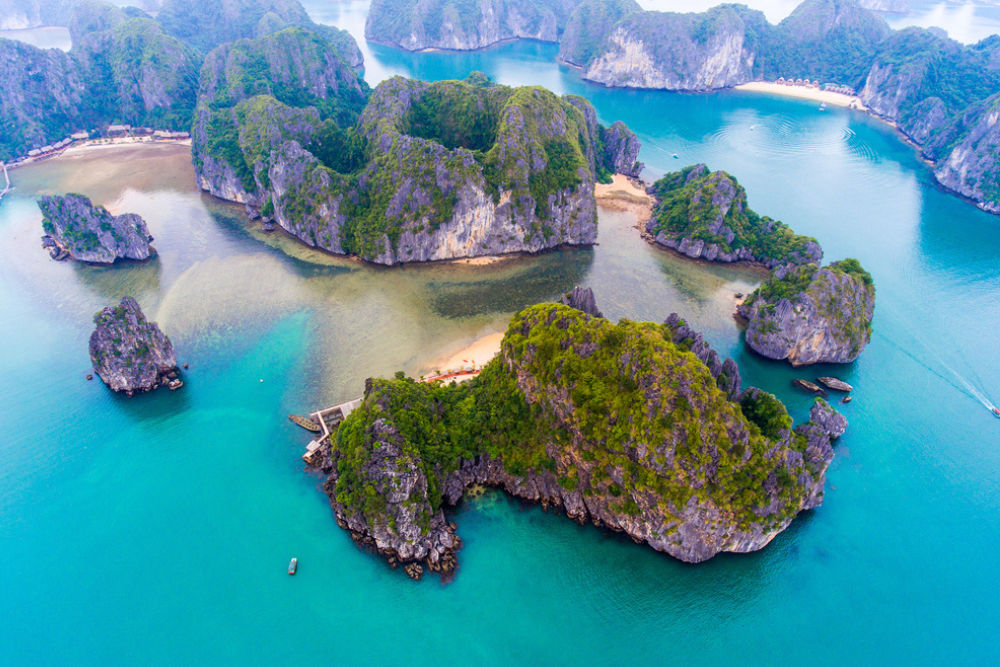
Cat Ba Island in Lan Ha Bay, Vietnam. Photo: Shutterstock
“We just returned from a 16-day trip to Vietnam and Cambodia planned by Ethan and Sandy. My husband and I traveled with our two kids (aged almost 5, and 7.5) and we all had a blast.
Our guides were so dedicated to ensuring we had the best trip possible. They were super flexible and were fine with things changing on the fly, which is crucial when traveling with small children. They also knew all the tricks—in Siem Reap, for example, our guide Dey knew that there were monkeys near one of the temples that liked eating lotus plants, so he stopped at a stand selling lotus plants and got some so the boys could feed the monkeys, which they loved. The two-night cruise through Lan Ha Bay was great (thanks to Ethan for leveraging his connections to get the boat to flex on age requirements for my youngest).
And, while not a highlight, our guide in Hanoi, Mike, was truly wonderful about taking me to the doctor when I woke up on our first day in Vietnam and discovered I had pink eye. The way Ethan and Sandy do their trips, with complete flexibility toward your schedule, is something that I didn’t fully appreciate until I was actually on the trip. Being able to change your plans in-the-moment is so wonderful—and knowing we have a driver and guide for whatever we decide to do was key. We had a few times where the kids (or adults) were exhausted and just wanted to swim or relax—so we pivoted and moved things around, making a lunch a dinner or moving touring to a different day, and it was just so wonderful to have the flexibility and not feel like we had to do something then because it was scheduled and paid for. It truly made it so that every day of our vacation was OUR vacation, and we appreciated that.” —Kim Segal
Read more reviews of Southeast Asia trips. To get your own WOW trip, start with our trip questionnaire, reached via the black button below.
Belize & Guatemala: “We had a phenomenal guide with Brainerd—very knowledgeable, warm, and just a lot of fun…”
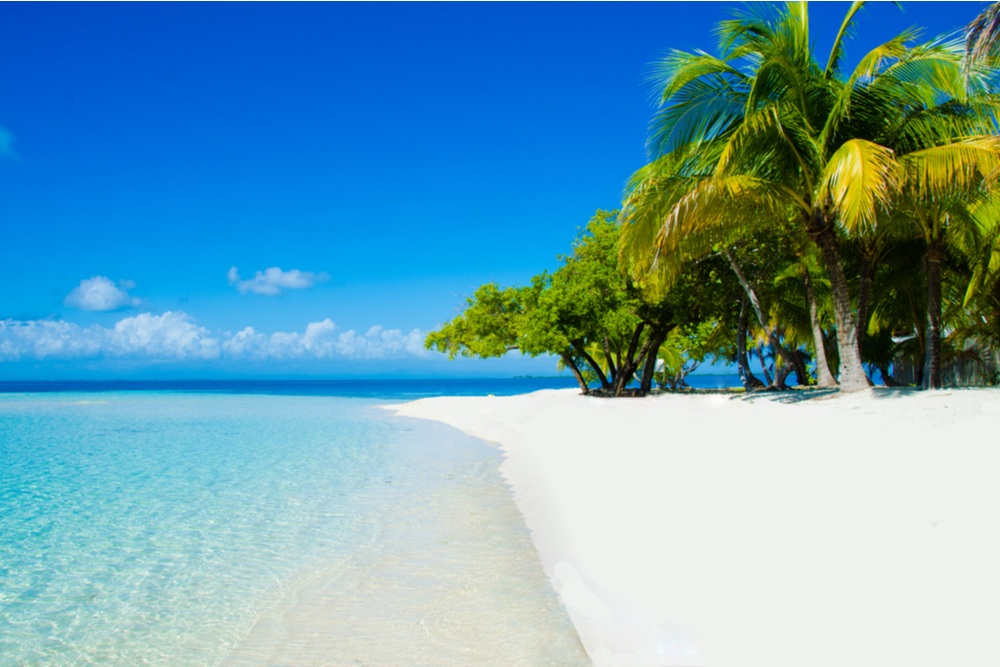
The right local guide knows which of Belize’s beaches you can have to yourself. Photo: Shutterstock
“We had a wonderful trip to Belize and Guatemala planned for us by Patricia. Over the years, we’ve learned that a guide can make or break a trip. We had a phenomenal guide with Brainerd—very knowledgeable, warm, and just a lot of fun. He took loads of photos of us with my phone and his own. He later sent me the ones he took, which I very much appreciated because I make a photo book of all our trips.
We stayed first at the Lodge at Chaa Creek, a 400-acre eco-resort. Lots to do there: visit the butterfly farm, the natural history exhibit, the organic farm; canoe; hike; birdwatch; or sit with a delicious drink and admire the beautiful grounds. We used Chaa Creek as a base from which to explore the Maya ceremonial centers at nearby Xunantunich and Tikal in Guatemala.
The Naia Resort, right on the beach near Placencia, was lovely. We were very happy with our little bungalow, which was about 30 feet from the water. While we were there, Patricia arranged for us to spend time with a group of six Maya sisters who taught us how to cook on an open hearth, weave baskets, and extract the juice from sugar cane. It was fun! We really enjoyed our trip and met people who go to Belize year after year. We can understand why.” —Catherine Mathis
Read more reviews of Belize and Guatemala trips. To get your own WOW trip, start with our trip questionnaire, reached via the black button below.
Egypt: “She naturally struck the right balance between providing us enough information/details and also being helpful with avoiding crowds…”
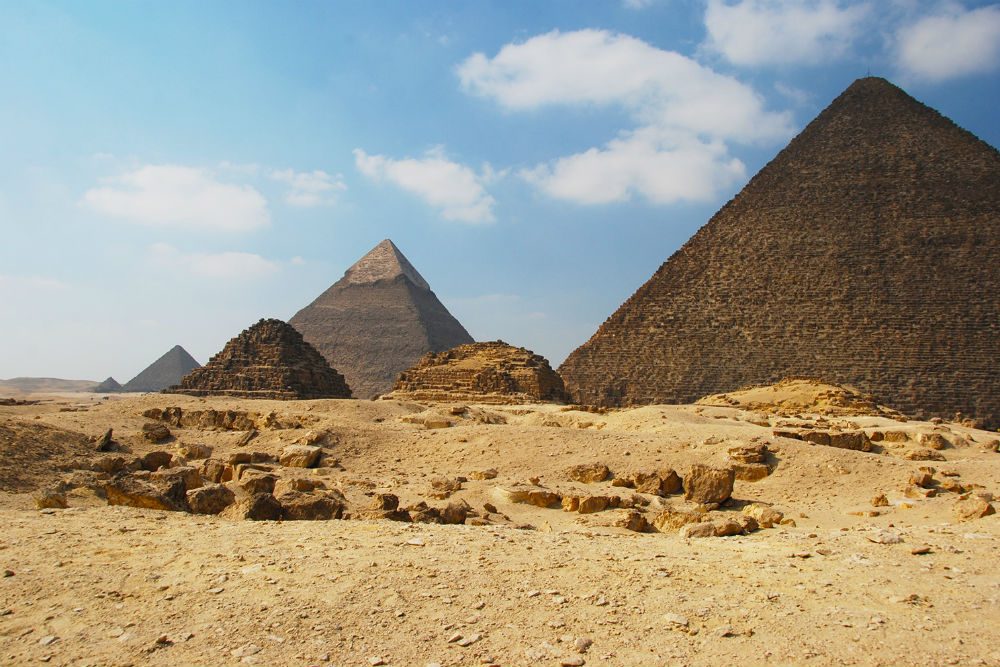
The Pyramids of Giza. Photo: Jim Berkeley/Destinations & Adventures
My husband and I had such a fabulous time in Egypt, thanks to Jim’s and Arlene’s hard work and guidance. We chose Egypt as a milestone birthday trip for my husband, and the whole trip was truly special. On our first day in Cairo, we saw the Sphinx, Pyramids at Giza, Saqqara, and the National Museum of Egyptian Civilization. Eman was our Egyptologist in Cairo, and she was simply wonderful. She naturally struck the right balance between providing us enough information/details and also being helpful with avoiding crowds and finding photo opportunities. Plus, she was just pleasant to be around—it felt like touring Cairo with a family friend. Our first day was so spectacular that I was a little worried no other days would live up to Day 1 (I was wrong).
I loved our two nights in Aswan and REALLY loved the Old Cataract Hotel. For our WOW Moment, we had a sunset dinner on the Nile on a yacht. Abu Simbel completely blew me away. The dahabiya was a great experience. The crew and all other passengers sang ‘Happy Birthday’ to my husband, and it was a lovely celebration. By the time we got to Luxor, I was worried I might be a little underwhelmed by remaining temples and tombs—that was the furthest from the truth. Queen Nefertari’s Tomb was just incredible—my favorite of all the tombs and temples we visited in the Luxor area. I just wish we’d had one more night at the Winter Palace.” —Maeghan Whitehead
Read more reviews of Egypt trips. Learn how to get your own WOW Moment. Then use our trip questionnaire (reached via the black button below) to start a WOW trip.
Sicily: “Without the guide’s encouragement, I might not have climbed to the top of the cathedral and taken the outside walkway along the roof…”
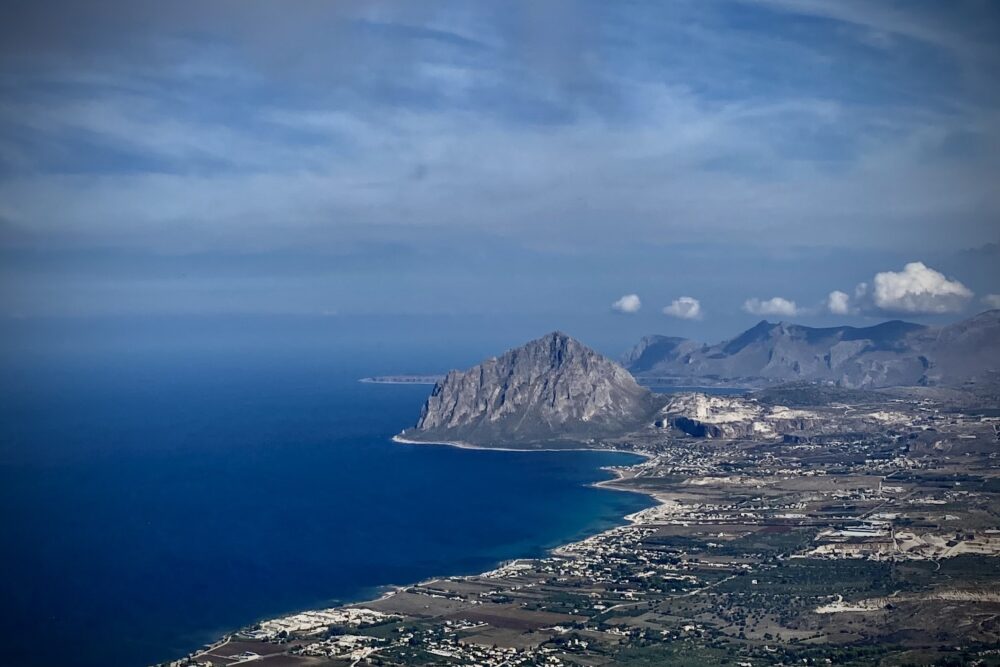
Sicily’s western coastline and Monte Cofano, as seen from Erice. Photo: Traveler Nancy Footer
“I took the advice found in many reviews by previous clients and gave Marcello and Matteo free rein to design the itinerary, and I am so glad I did. I spent my first day in Palermo—such a bustling and exquisite city—seeing all the key historic sites, the waterfront, and the Capo Mercato with Giorgio, a thoroughly charming and expert guide. The following day I ventured out of Palermo with a driver and fantastic guide to visit Monreale Cathedral, a World Heritage Site and truly one of the most spectacular cathedrals I have ever visited. The guide made the visit so memorable: Her knowledge of history, architecture and design was magnificent, and I really appreciated the chance to linger while other visitors were clearly being hustled in and out. Without the guide’s encouragement, I might not have climbed to the top of the cathedral and taken the outside walkway along the roof—the views were beautiful and more than worth the climb.
We traveled next into the hills near Camporeale for a private tour, lunch and tasting at Porta del Vento winery. Marco, the owner, was a generous and engaging host, and I appreciated learning about his wines and his journey to becoming a vintner. It was a treat to see the harvest, learn about the winemaking process and then taste his award-winning wines.
And then, when I thought the day couldn’t get any better, I was surprised with a WOW Moment—a private dinner at the home of chef Gabriella Garajo. The meal was remarkable—contemporary versions of Sicilian classics made with local ingredients served at Gabriella’s dining table set with her family china and silver. It was a perfect finish to a most memorable day.
I spent the remainder of my week in Trapani, a gorgeous seaside city in western Sicily. From my base in Trapani, I spent several hours touring the archeological park at Segesta, including the temple and theater. Valentina, my guide, was so knowledgeable and personable—she really made the history and importance of the site come alive. I thoroughly enjoyed visiting Erice—on everyone’s must-see list in western Sicily, as it is situated 2,000 feet above Trapani with panoramic views in all directions. The cathedral, many churches, and castle are not to be missed. Marcello and Matteo arranged a tasting at Maria Grammatico’s famous pastry shop—a dream come true for this lover of sweets! My guide and I spent the remainder of the afternoon touring Trapani, even encountering a wedding at the cathedral.” —Nancy Footer
Read more reviews of Sicily trips. Learn how to get your own WOW Moment. Then use our trip questionnaire (reached via the black button below) to start a WOW trip.
Istanbul: “Cenk is a phenomenal guide. He is charming, knowledgeable, fun and warm…”
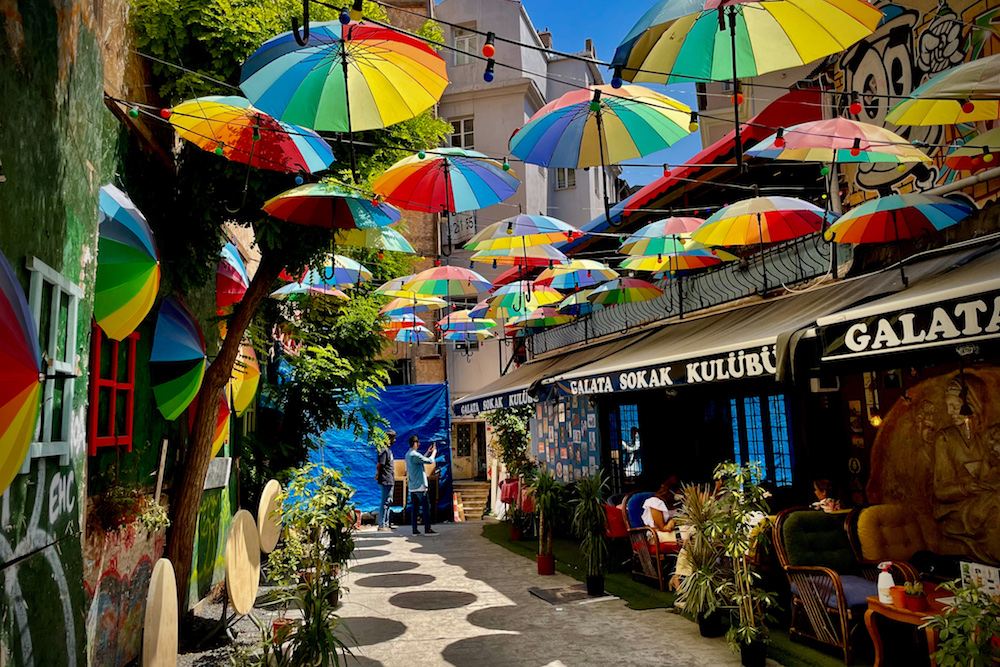
A colorful street scene in Istanbul. Photo: Tim Baker
“The plan was to spend three days in Istanbul following a Ponant cruise in Greece. Midway through the cruise, the anti-Israel and antisemitism demonstrations in Europe caused us to reach out to Karen over our concerns for safety in Istanbul. She outlined what was happening in Turkey and emphasized that we would be okay and that it was business as usual.
Our three days were memorable. Cenk is a phenomenal guide. He is charming, knowledgeable, fun and warm. We enjoyed learning about Turkish history and were surprised at how little we knew. The tourist sites were crowded, but we were able to get in and out without waiting. The shops in the Grand Bazaar were fabulous, and our cooking class was fun and yummy—one of the best organized cooking classes we have taken.” —Debbie Littman
Read more reviews of Turkey trips. To get your own WOW trip, start with our trip questionnaire, reached via the black button below.
East Africa: “He was a walking encyclopedia of knowledge about the animals and their habitats…”
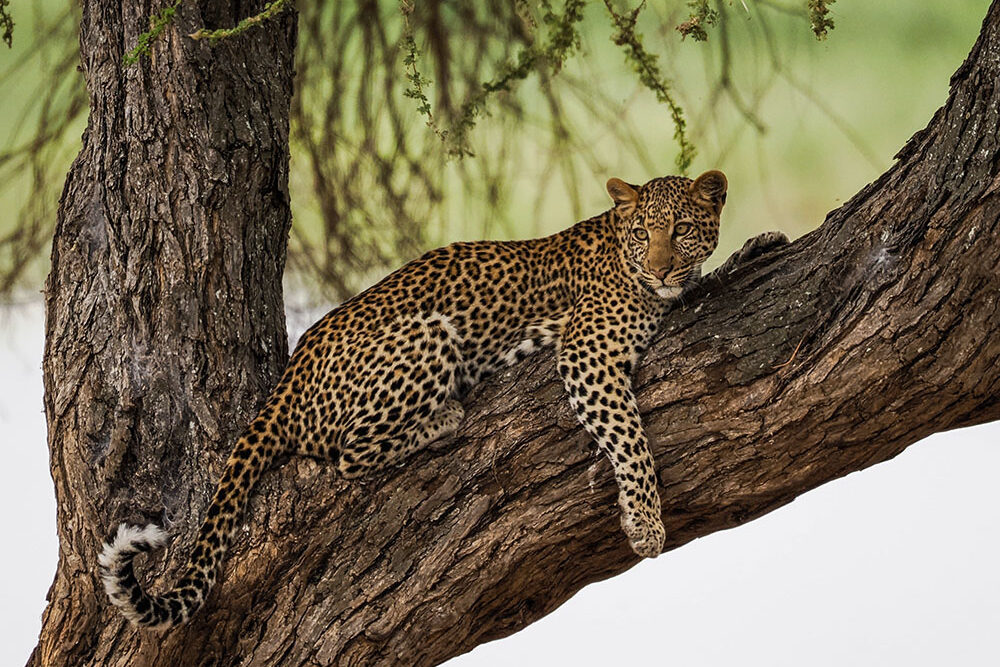
A great guide will spot leopards even when they’re lazing up in the trees. Photo: Traveler Dan Friedman
“Dan arranged the trip of a lifetime for me, my wife, and our son and daughter-in-law. It was a private safari in Tanzania and then a few days in Rwanda and Nairobi. Every detail was taken care of—basically all we had to do was show up….
Dan selected great guides for our trip. In Tanzania our guide, Vienney, was with us the entire nine days we were there. He was a walking encyclopedia of knowledge about the animals and their habits. With his deep knowledge, he was able to predict where we were most likely to see the rare cats—cheetahs and leopards—and we saw them all. Often we were the only safari vehicle at the site. While in the Serengeti we witnessed the Great Migration, where thousands of wildebeest and zebras head east to areas with more water—an amazing sight.
From the Serengeti we flew to Rwanda, where Dan had arranged treks to see the mountain gorillas. The treks are arduous, but very worthwhile. It’s an effort, but once you encounter a gorilla family, the experience will amaze you. Their behavior is so much more human-like than I imagined. This is a breathtaking experience that you will never forget.” —Dan Friedman
Read more reviews of African safaris. To get your own WOW trip, start with our trip questionnaire, reached via the black button below.
Be a smarter traveler: Sign up for Wendy’s weekly newsletter to stay in the know. Read real travelers’ reviews, then use the black CONTACT buttons on Wendy’s WOW List to reach out to the right local fixer for your trip.

